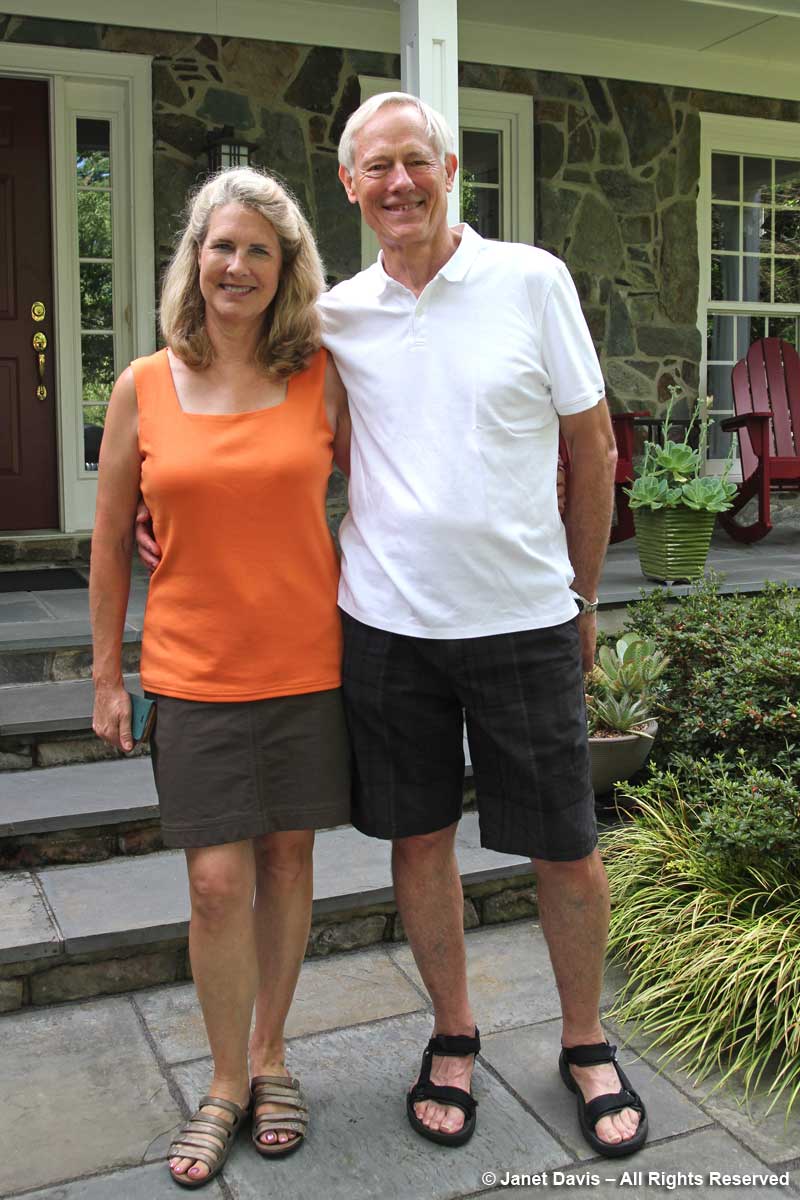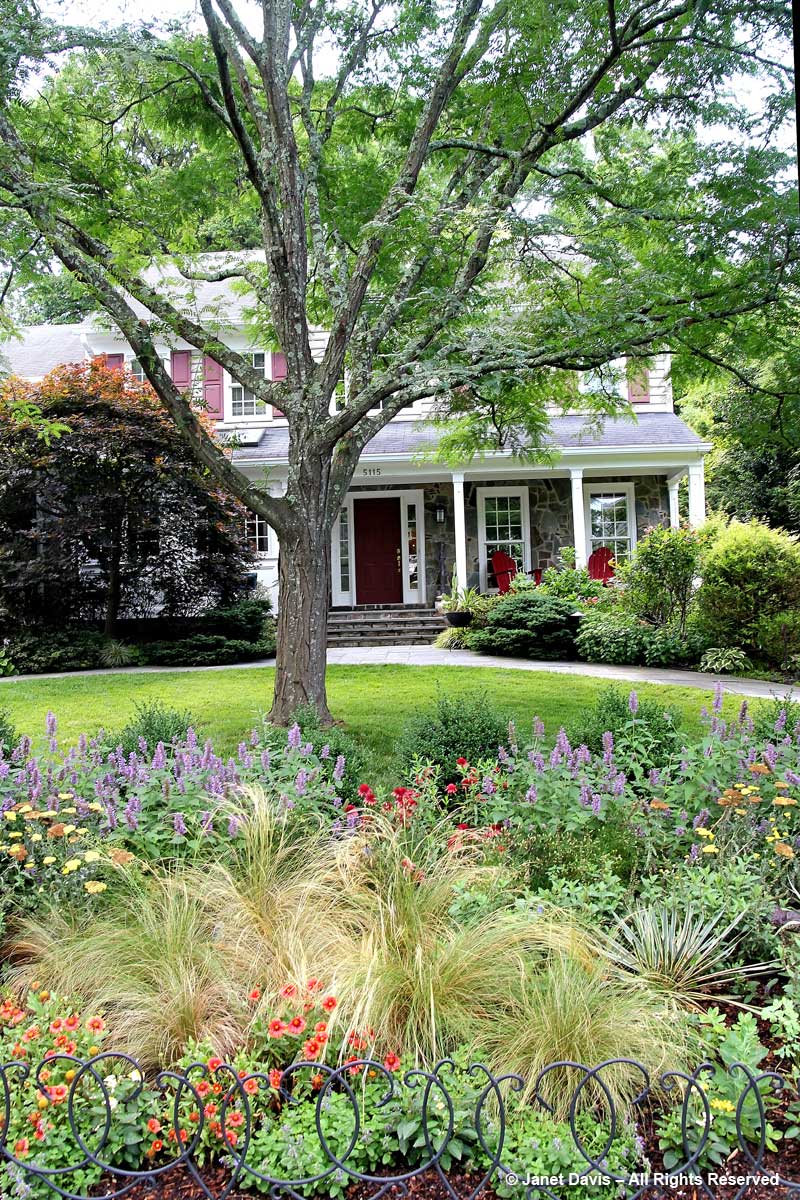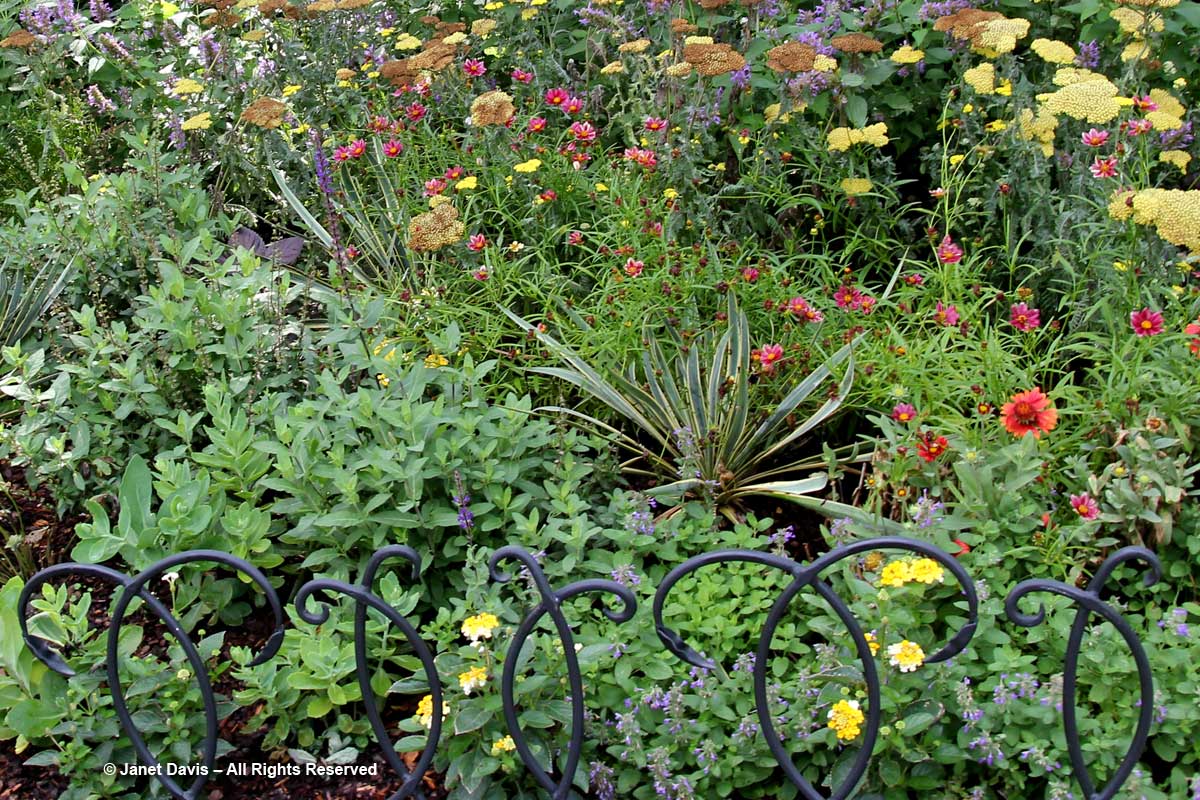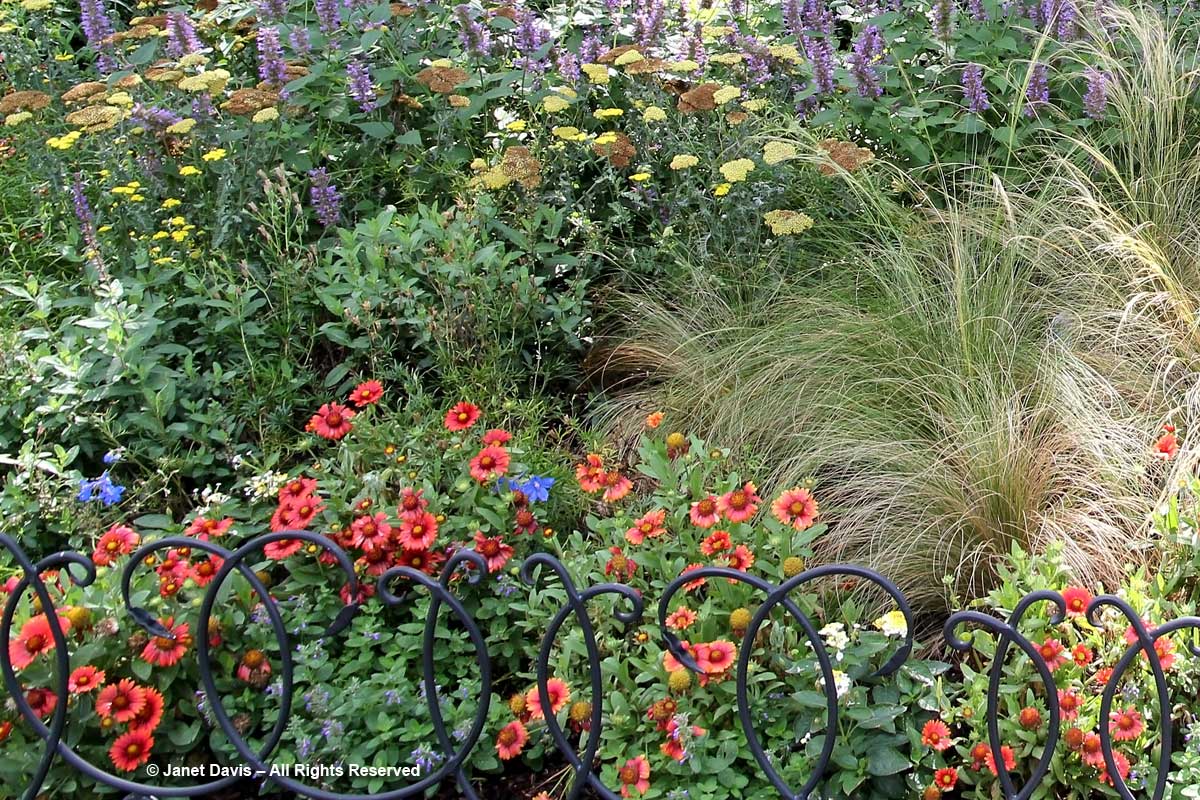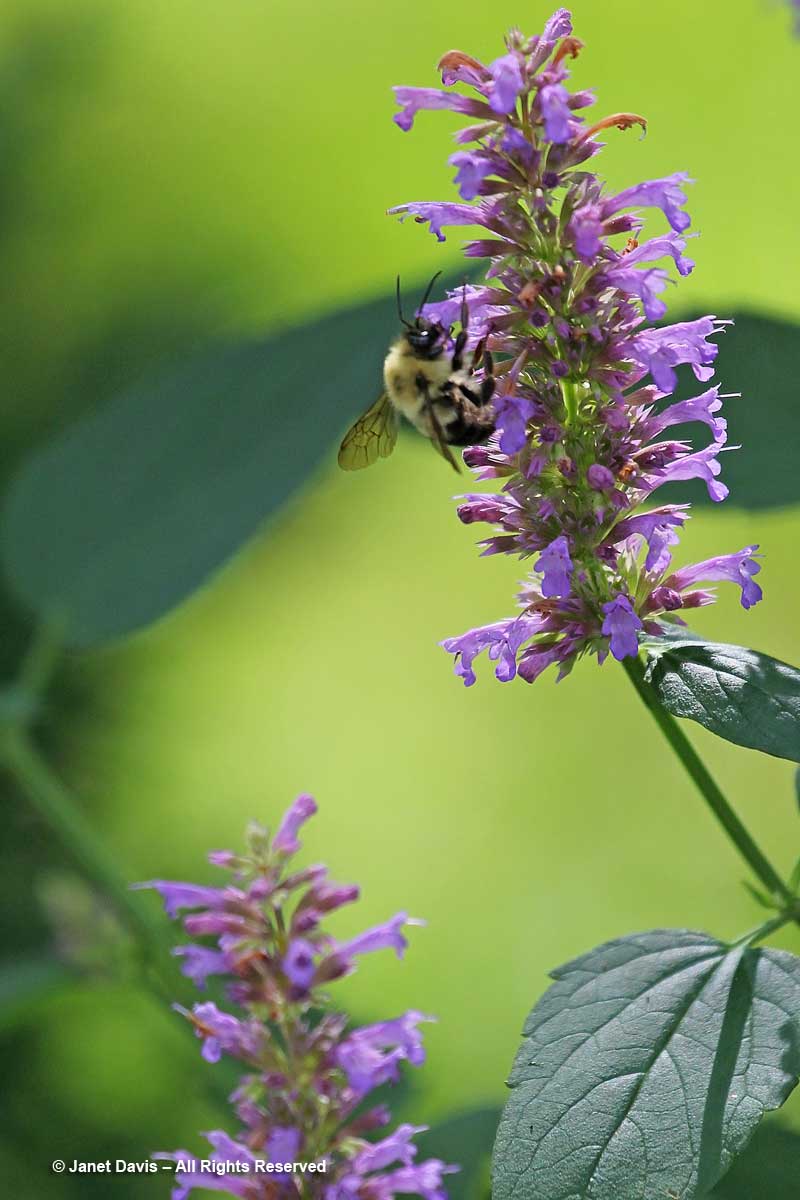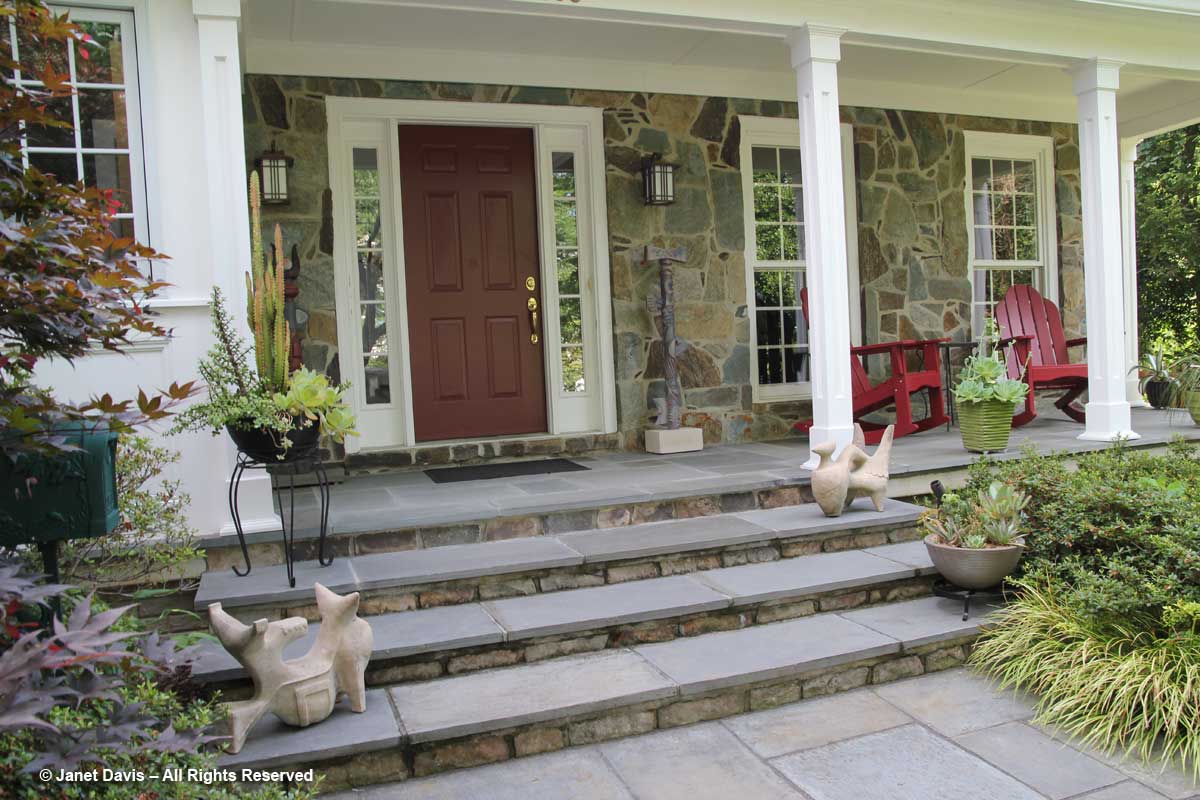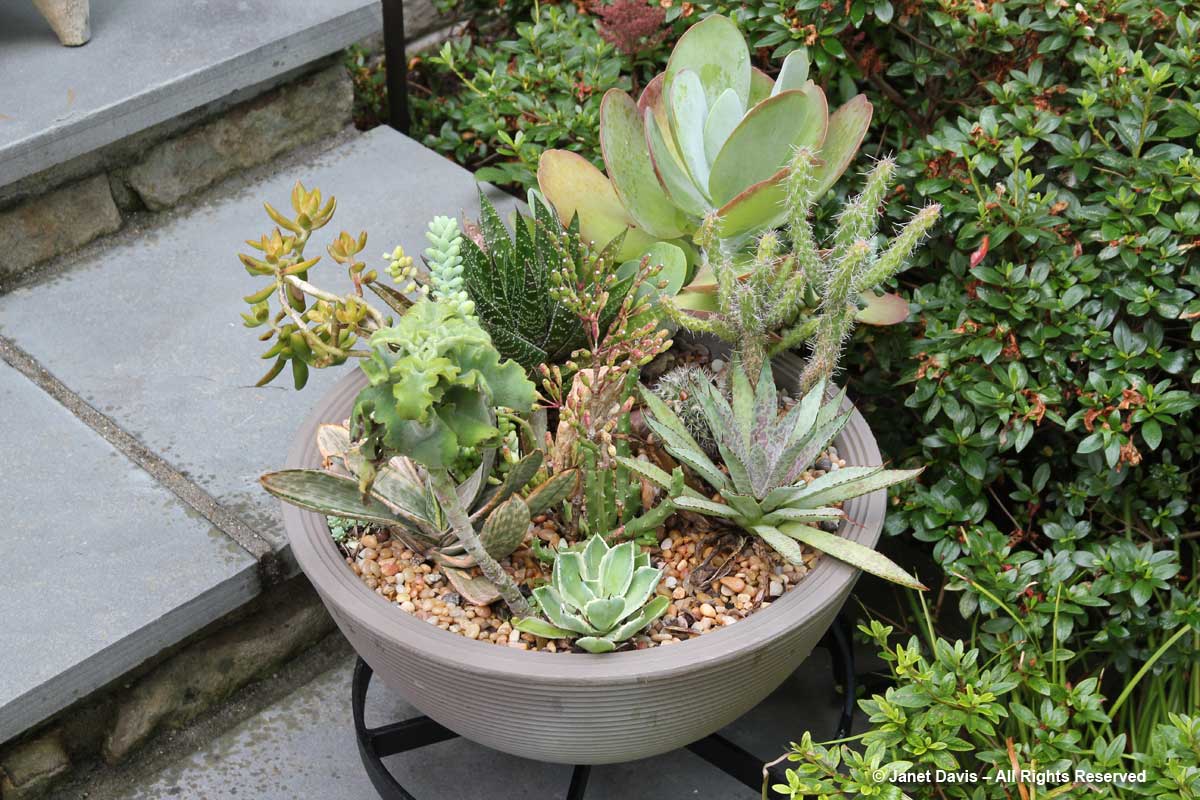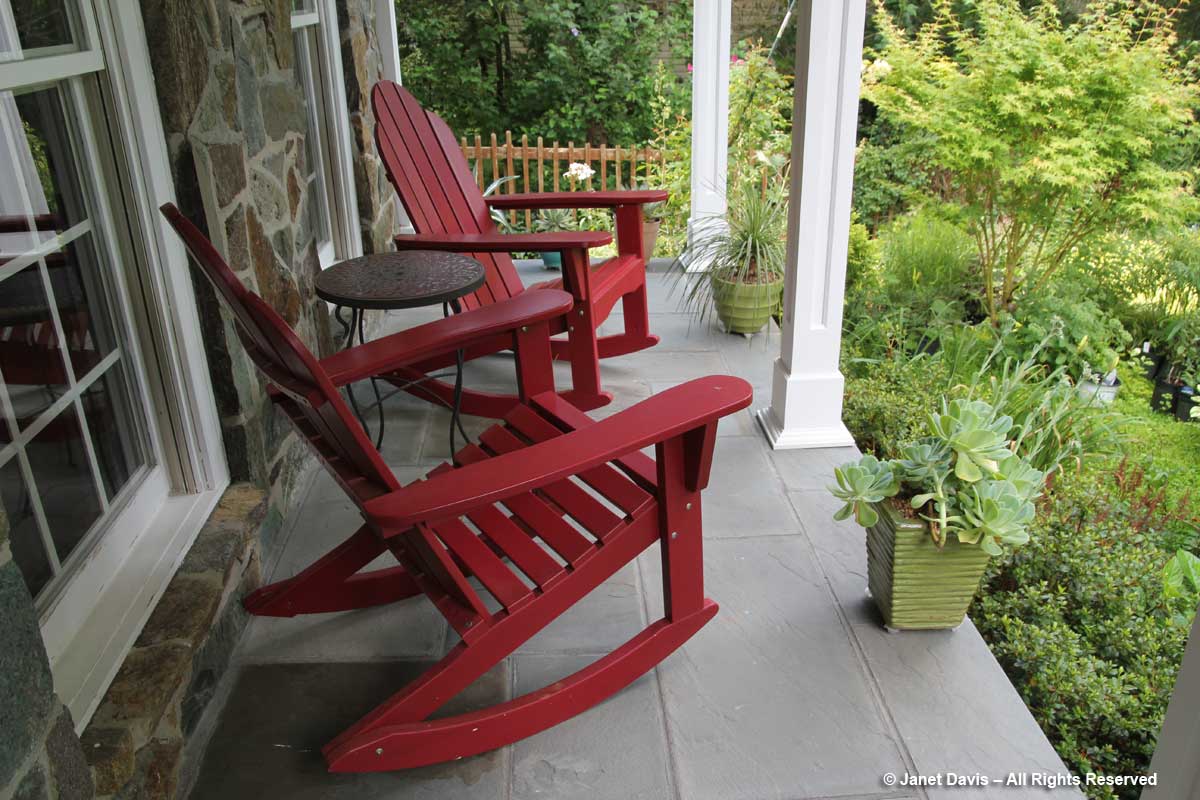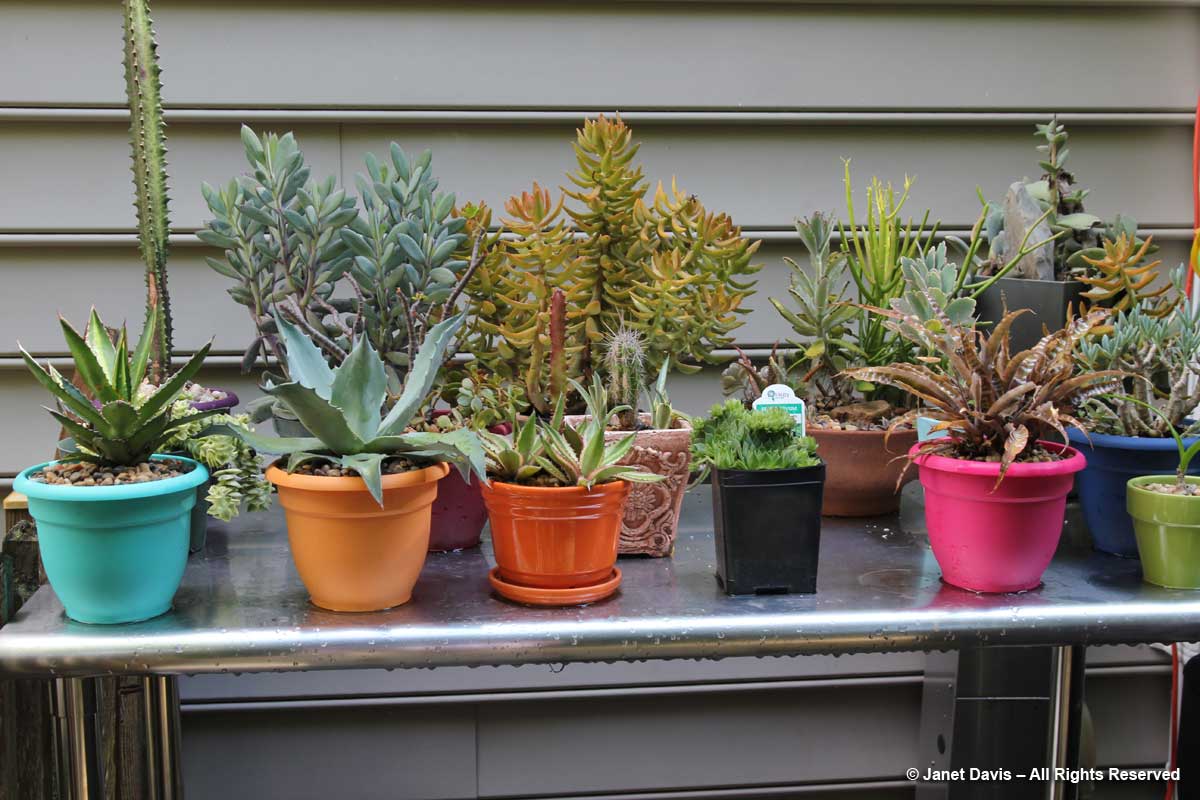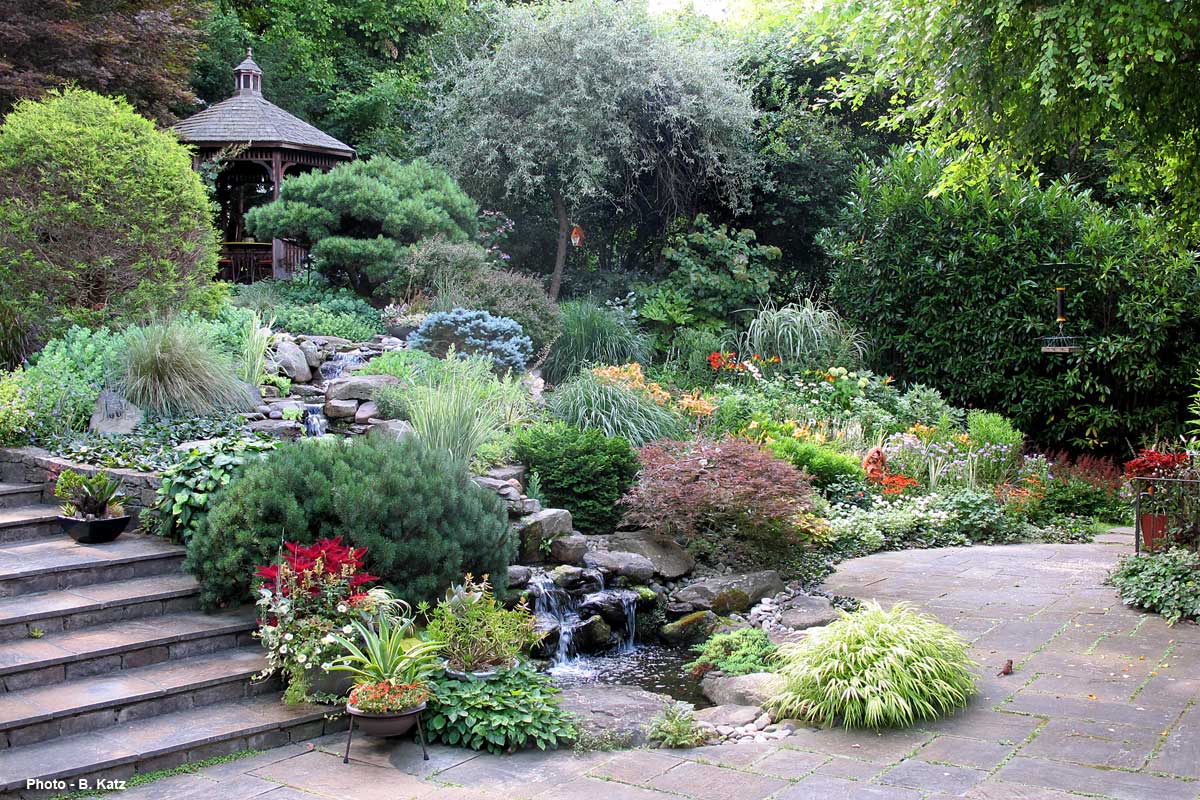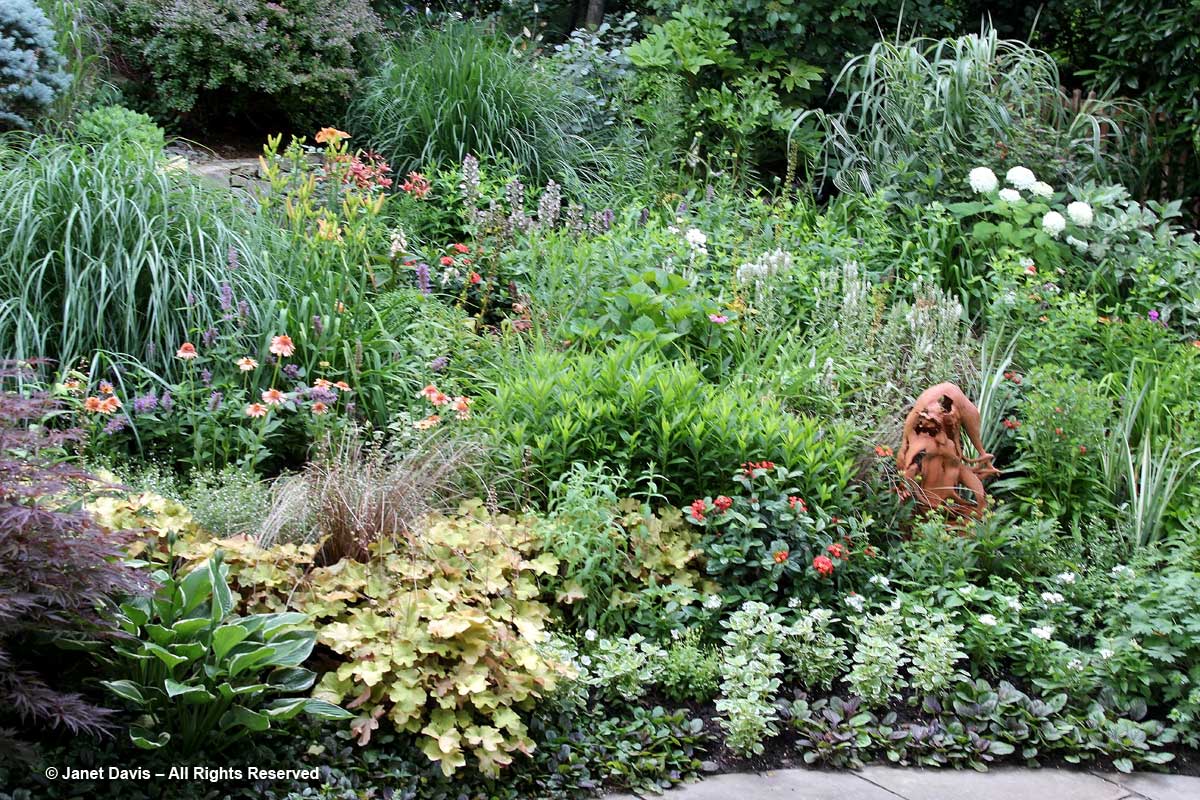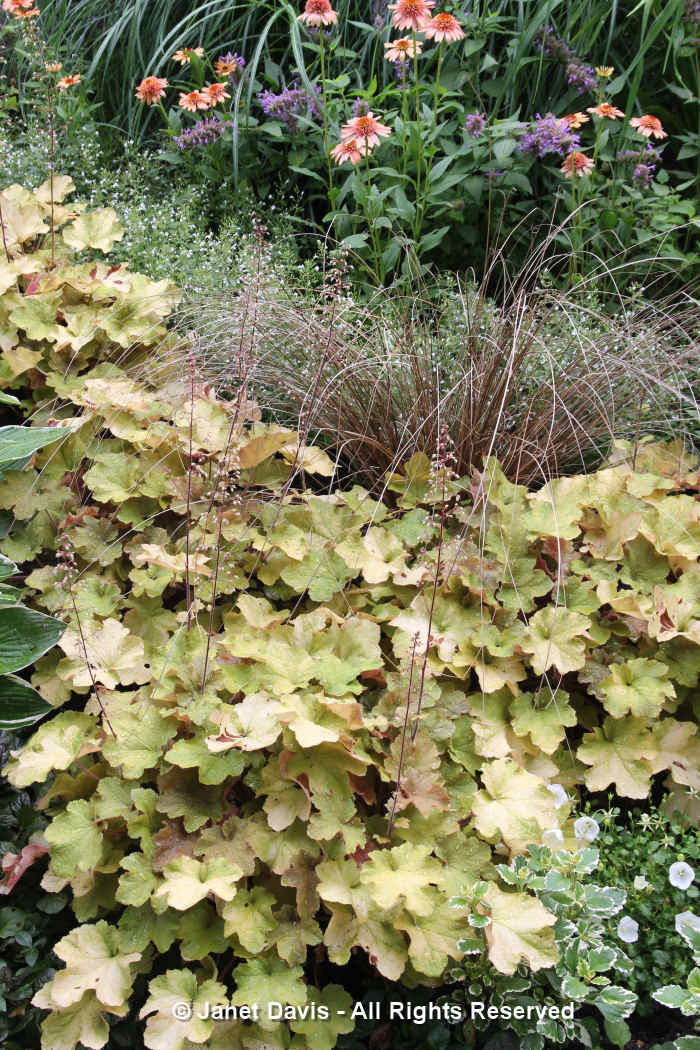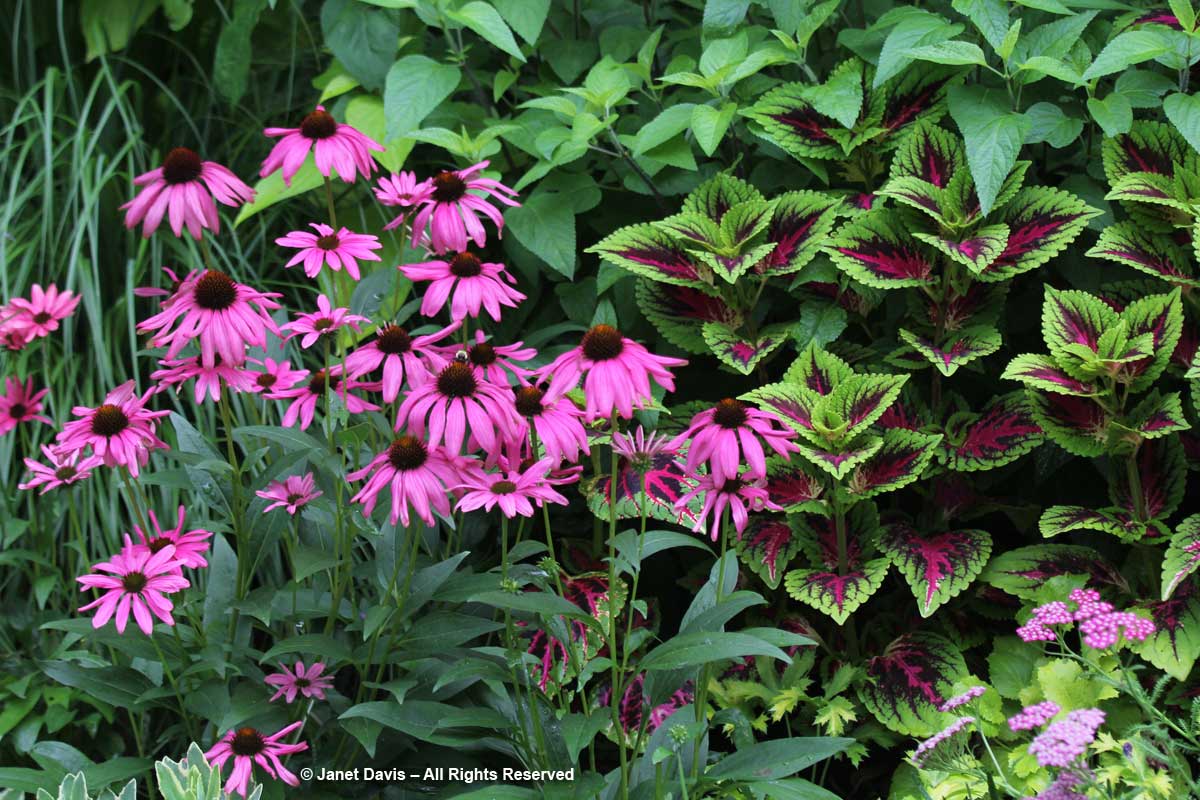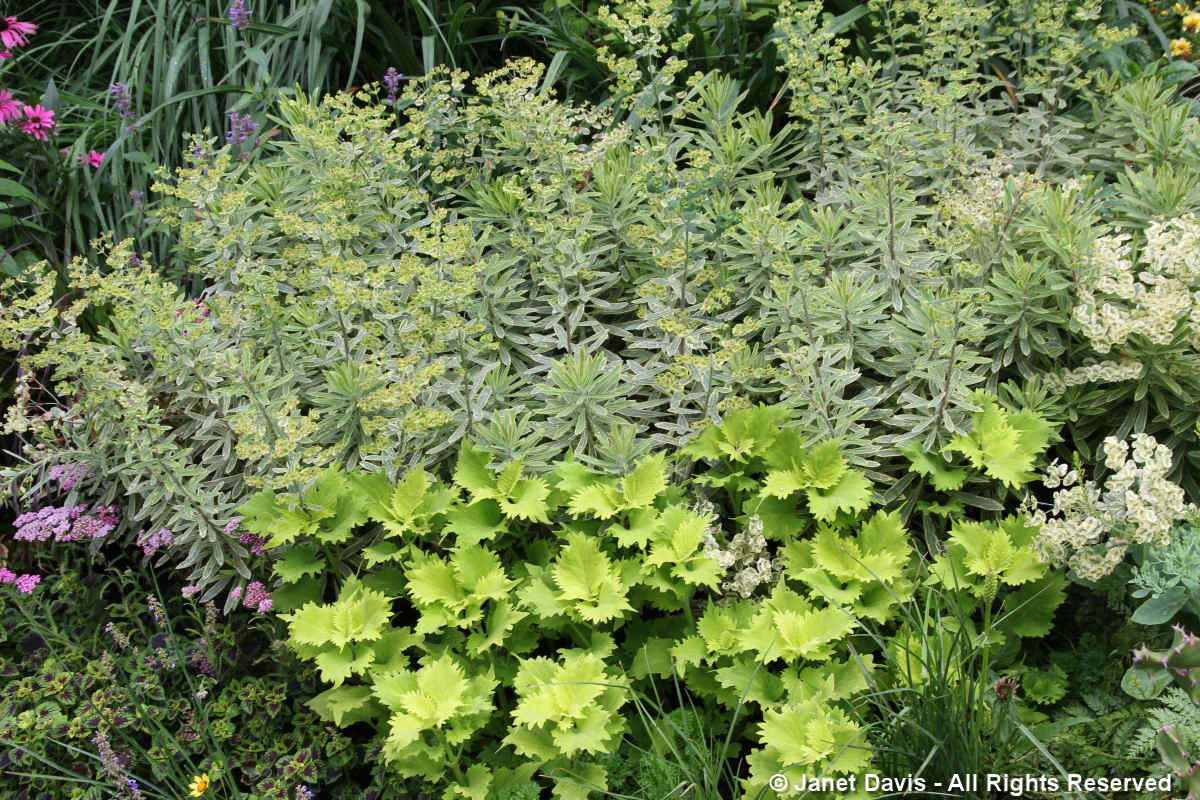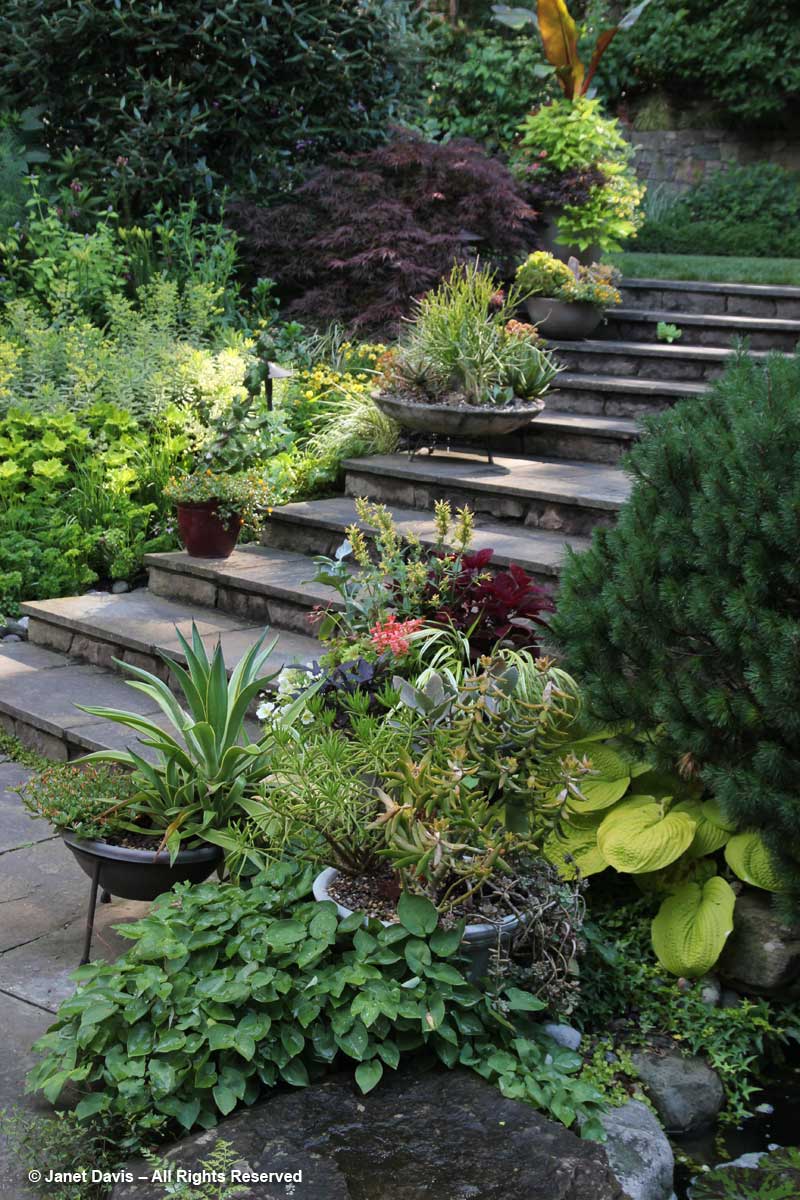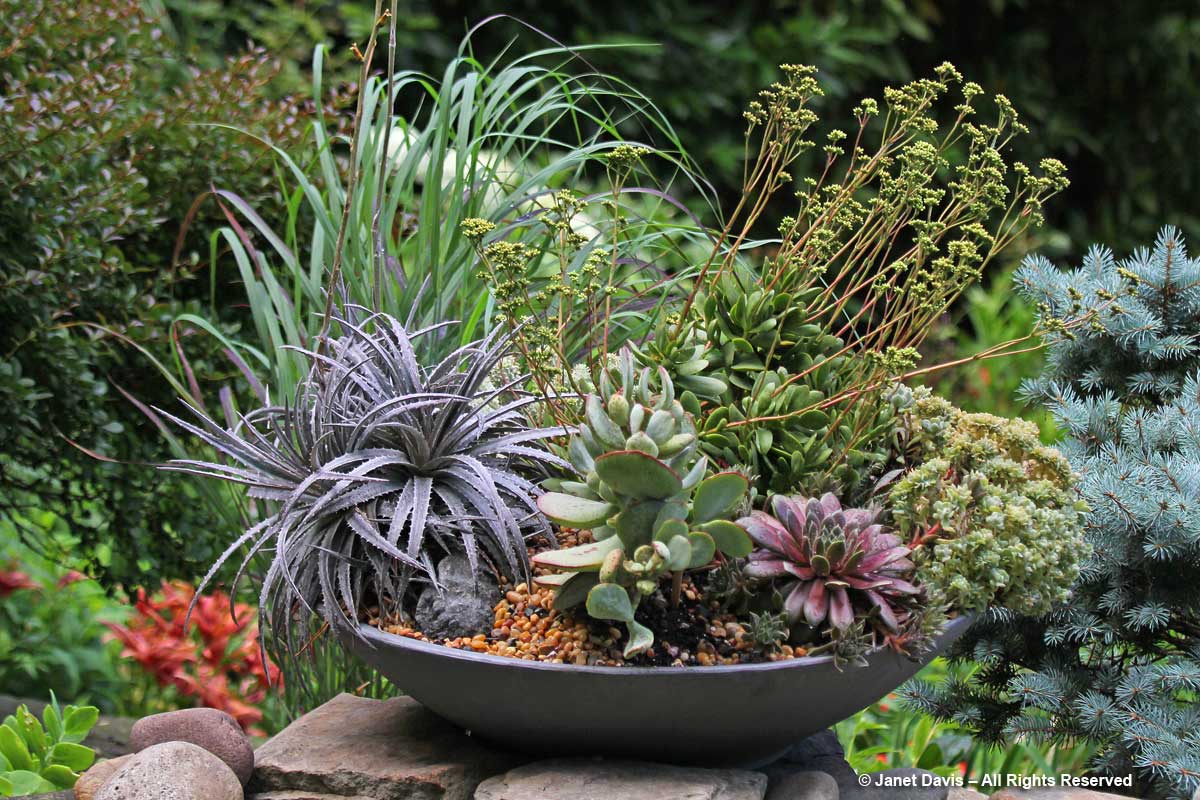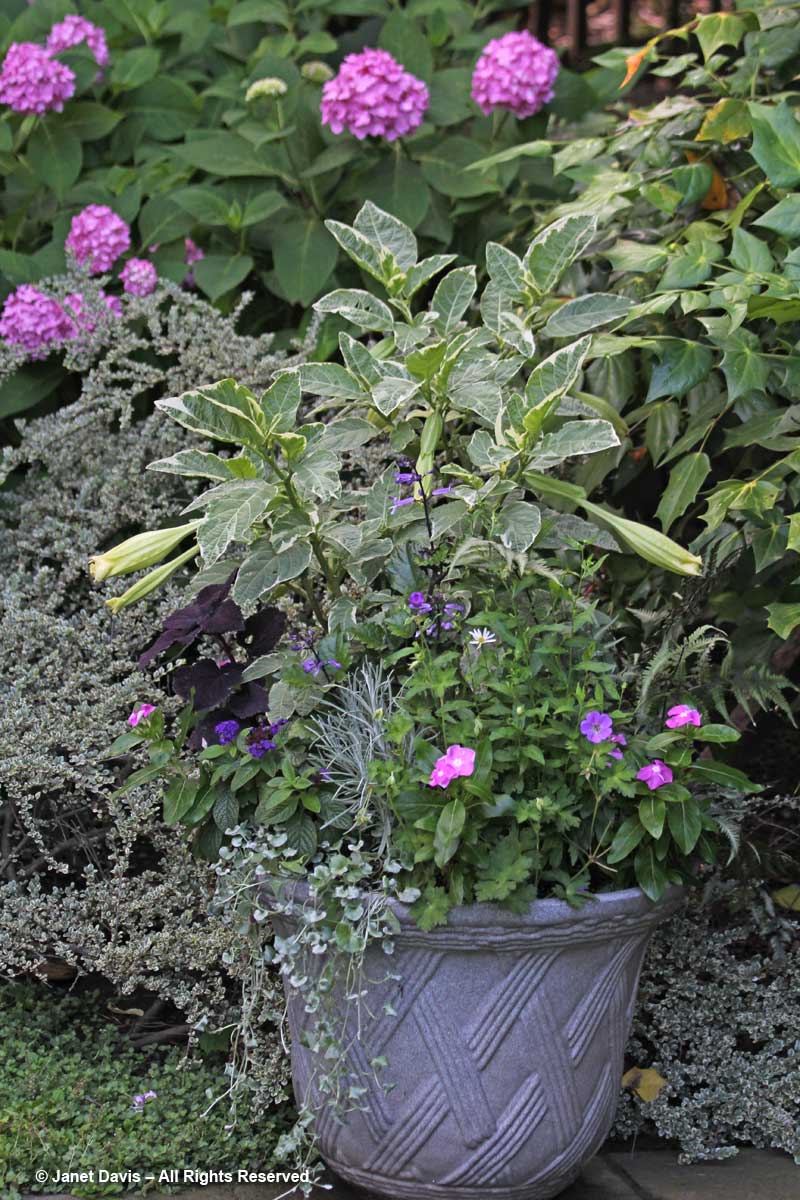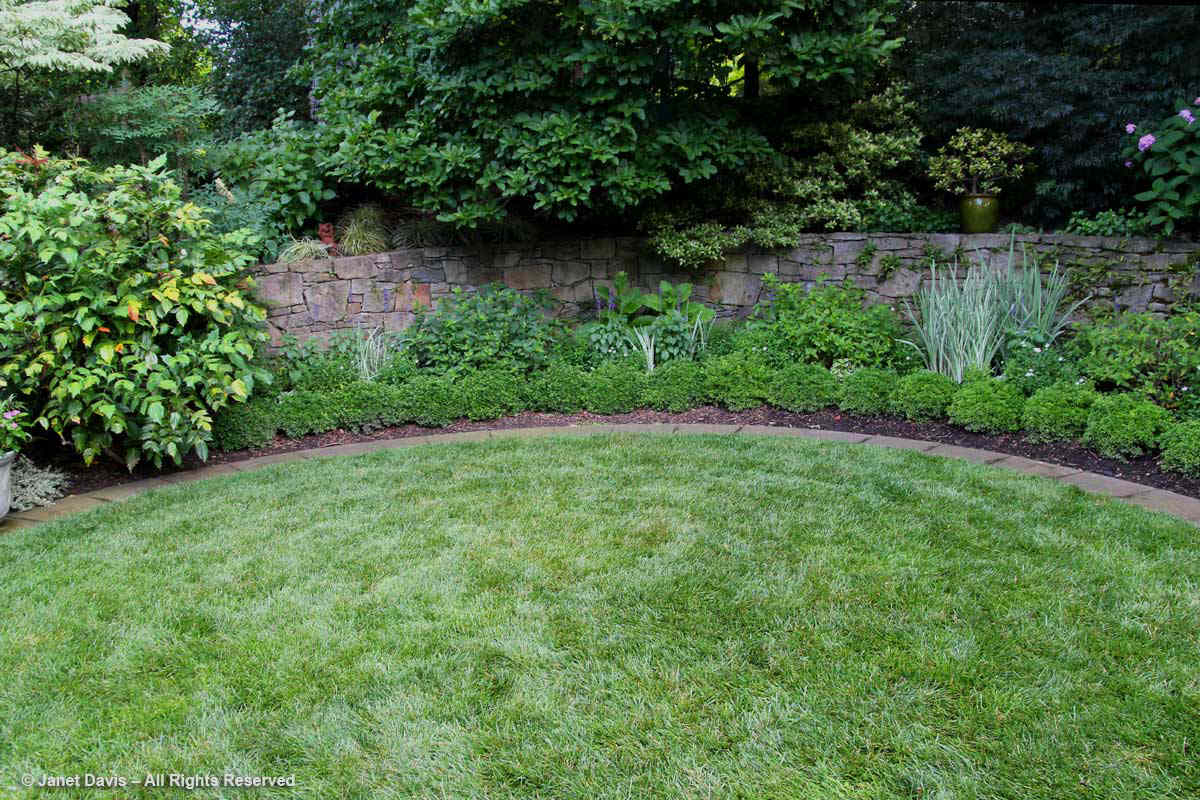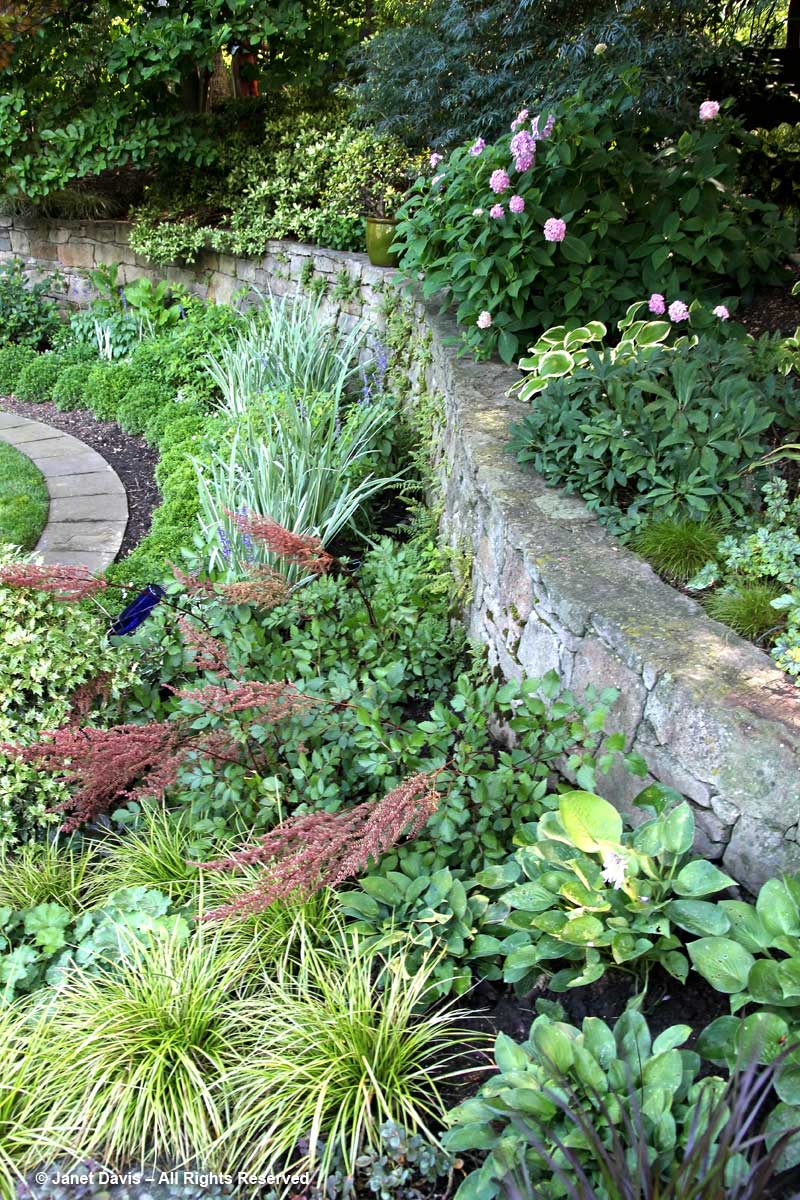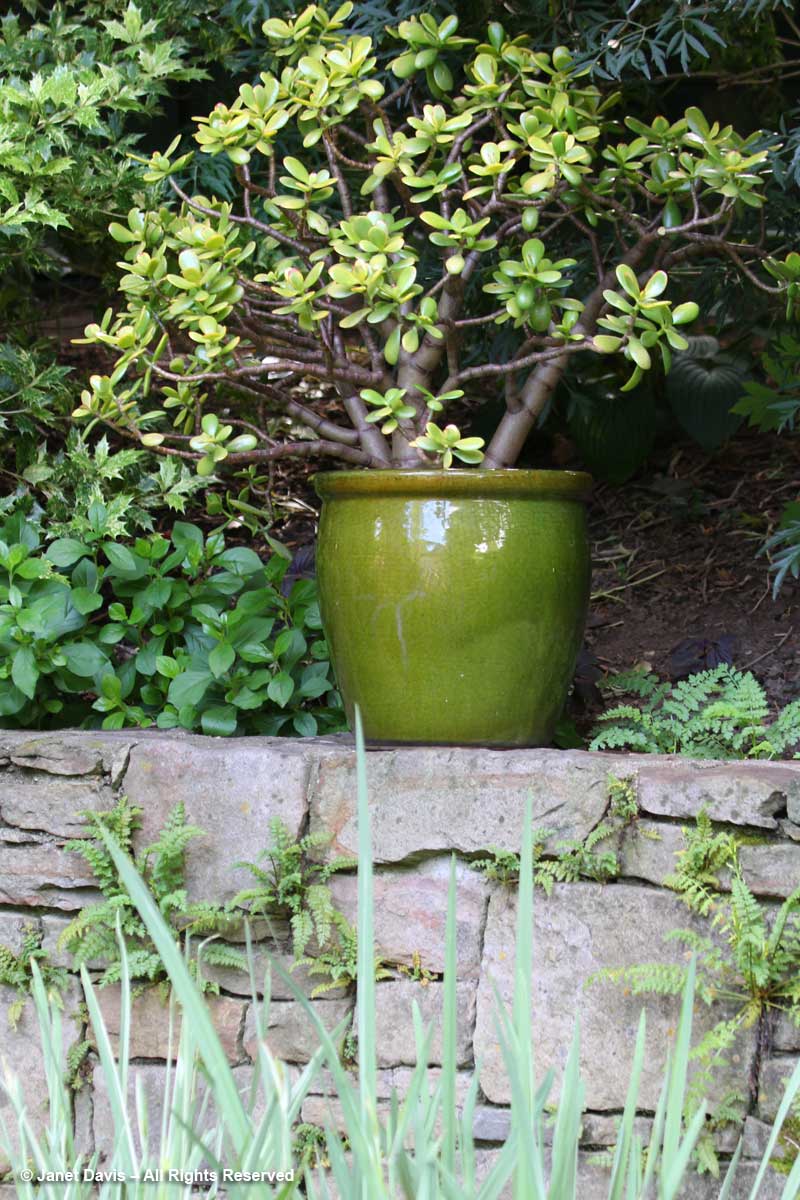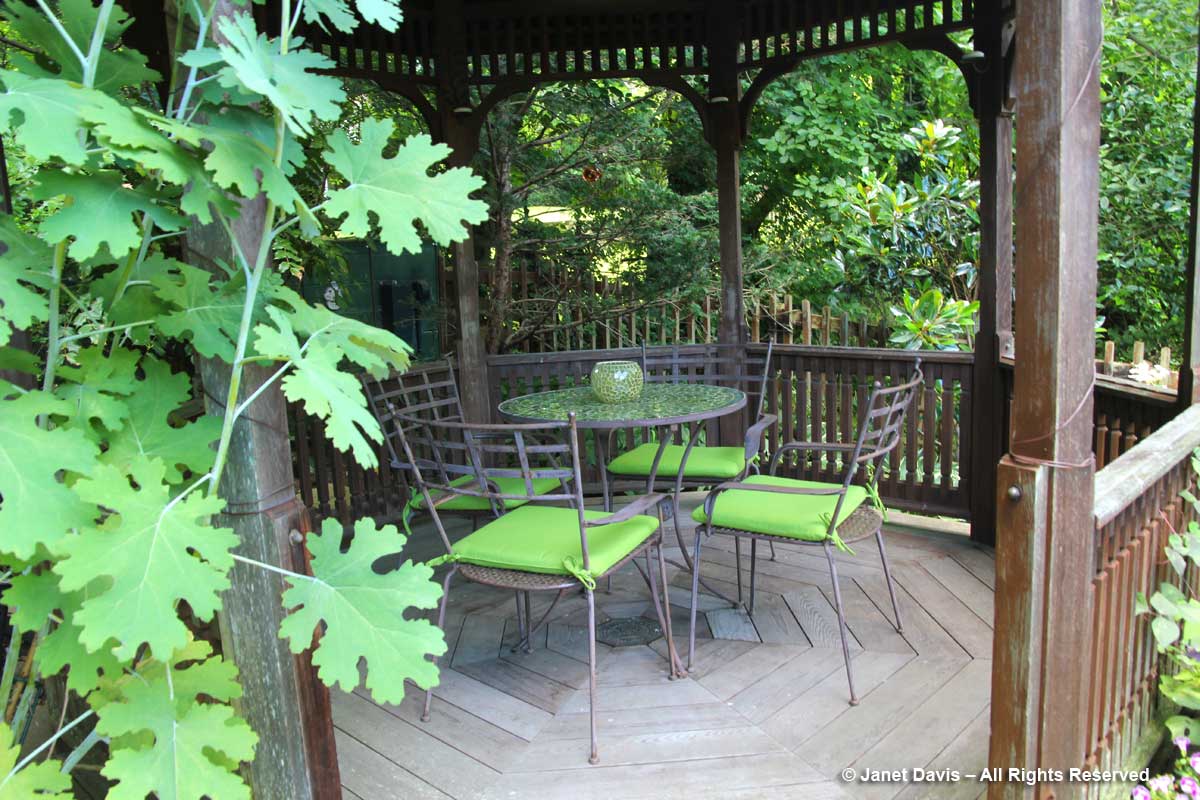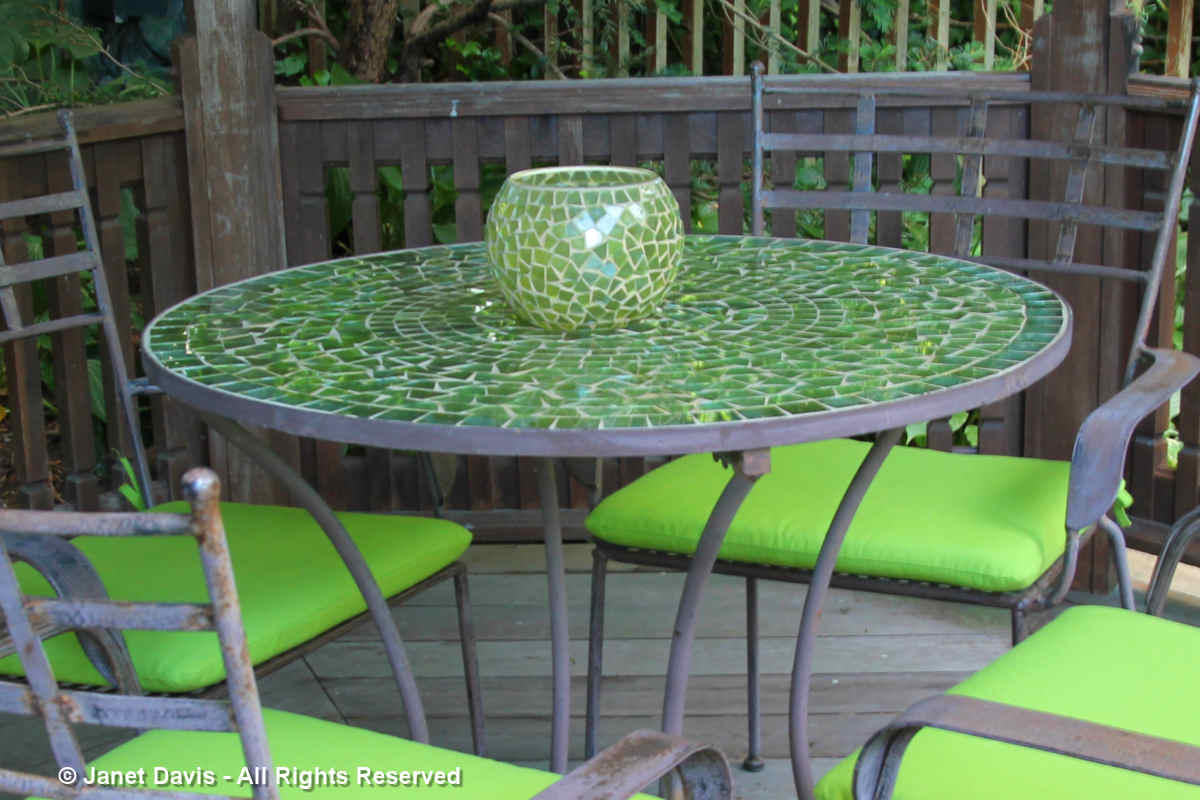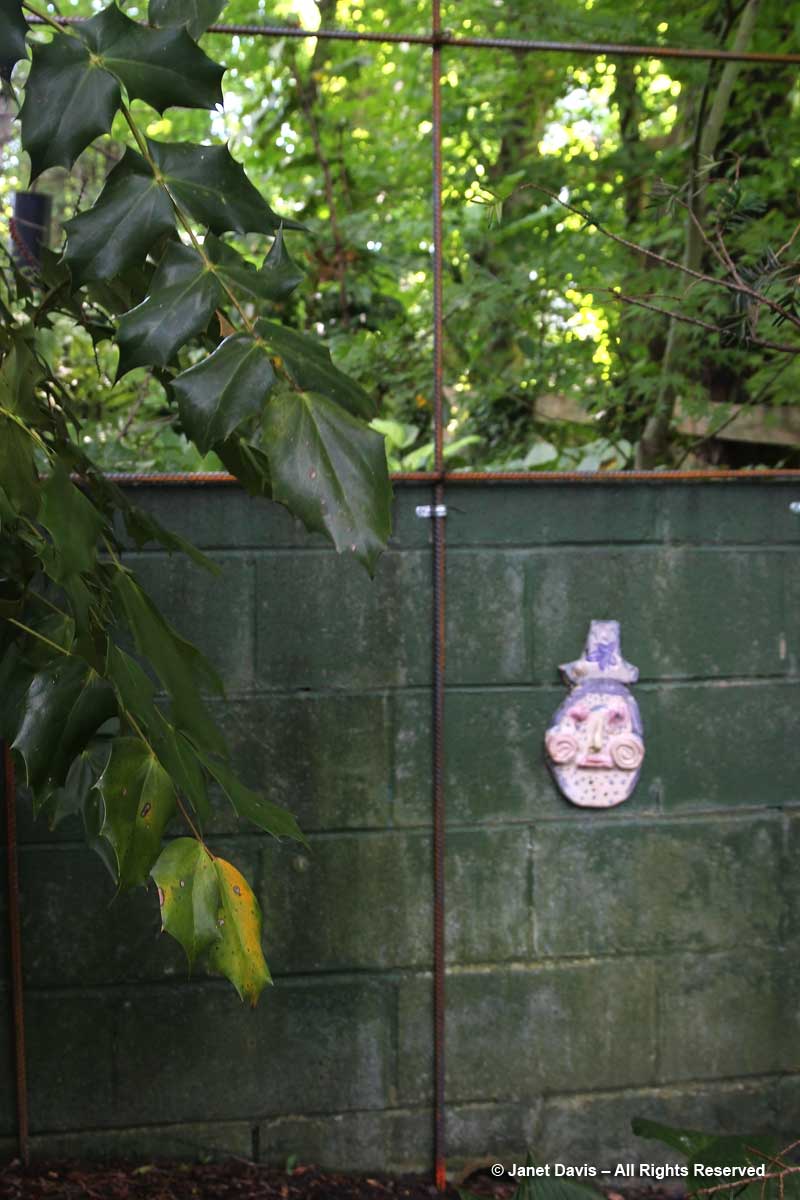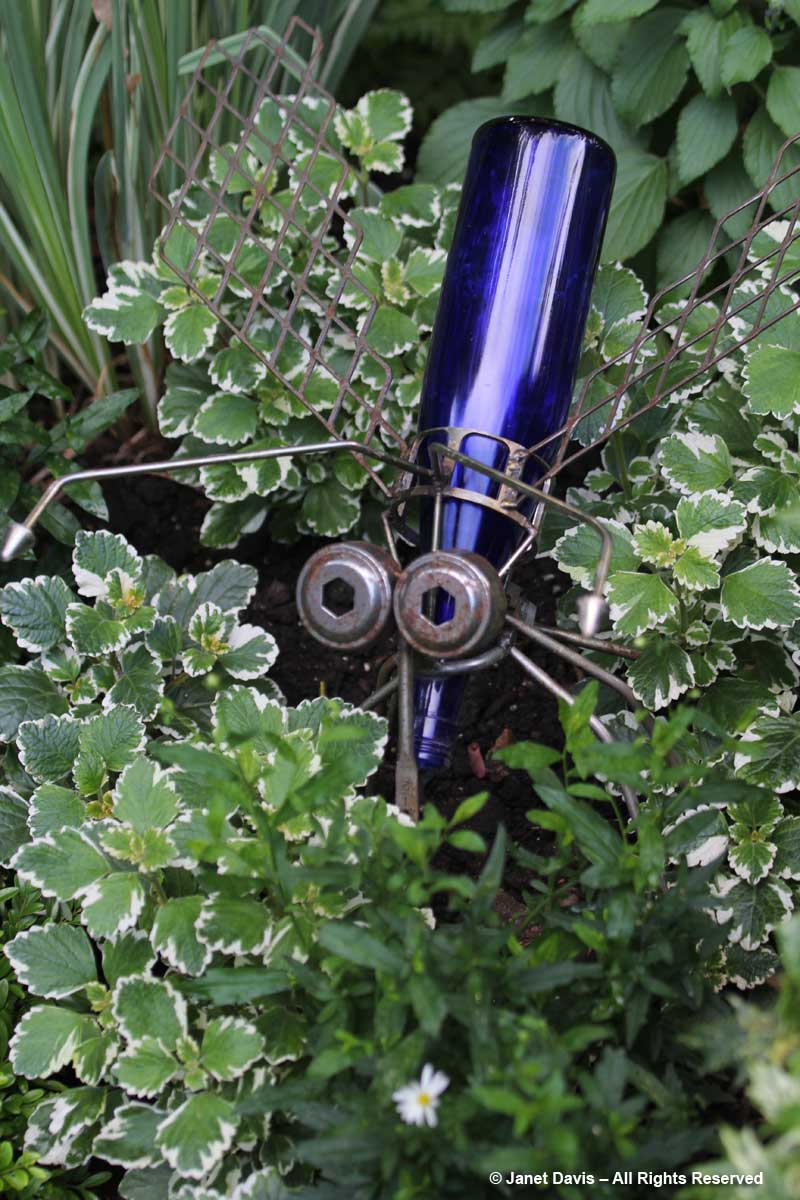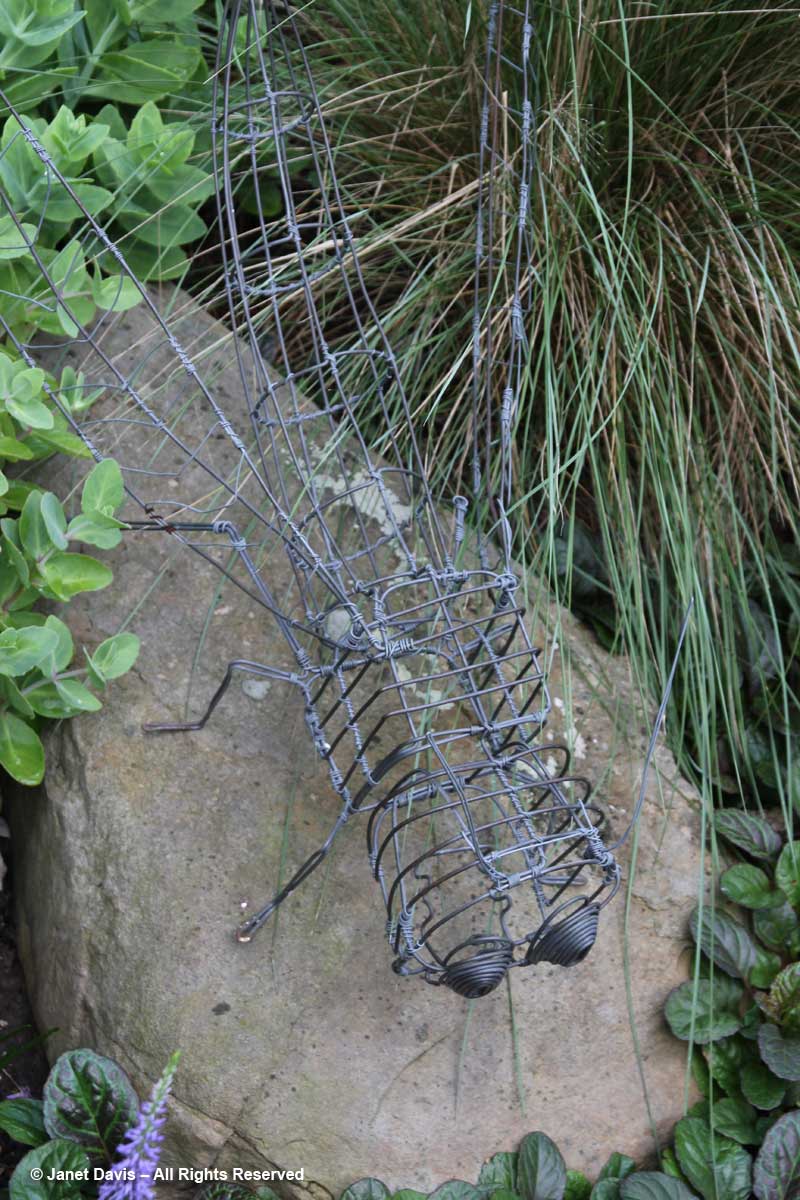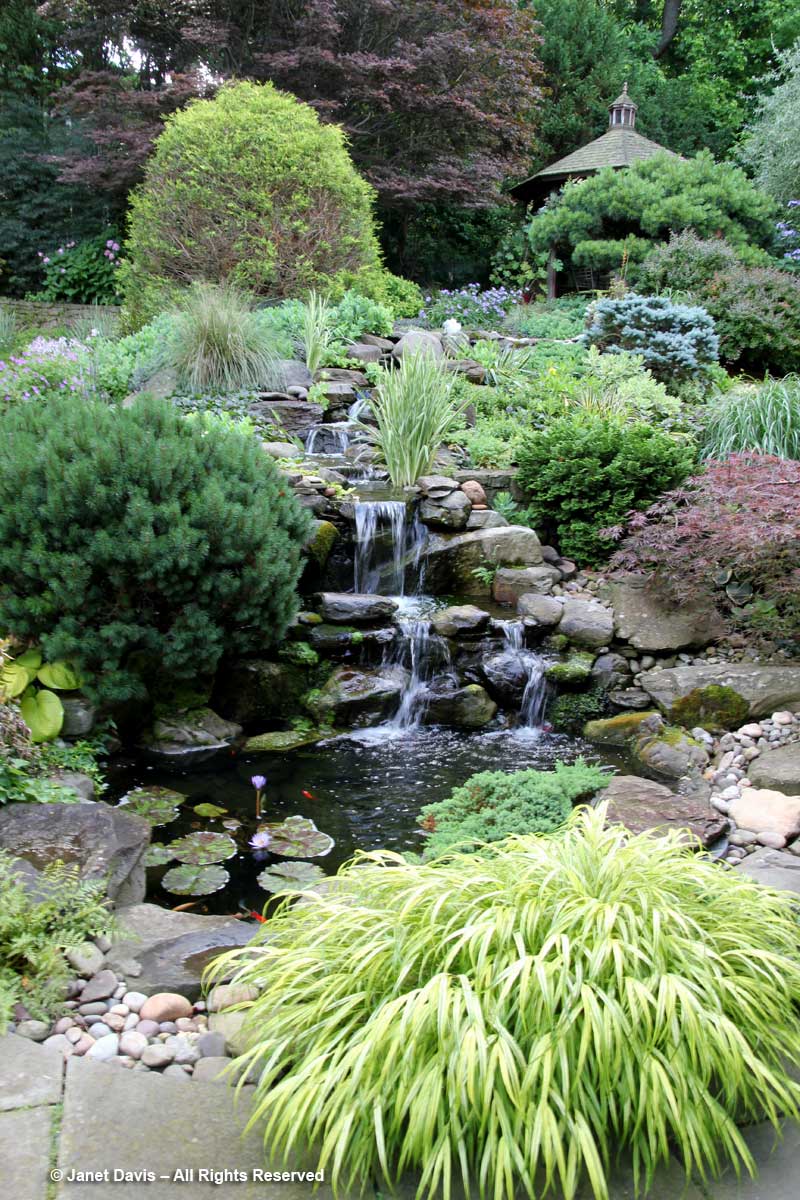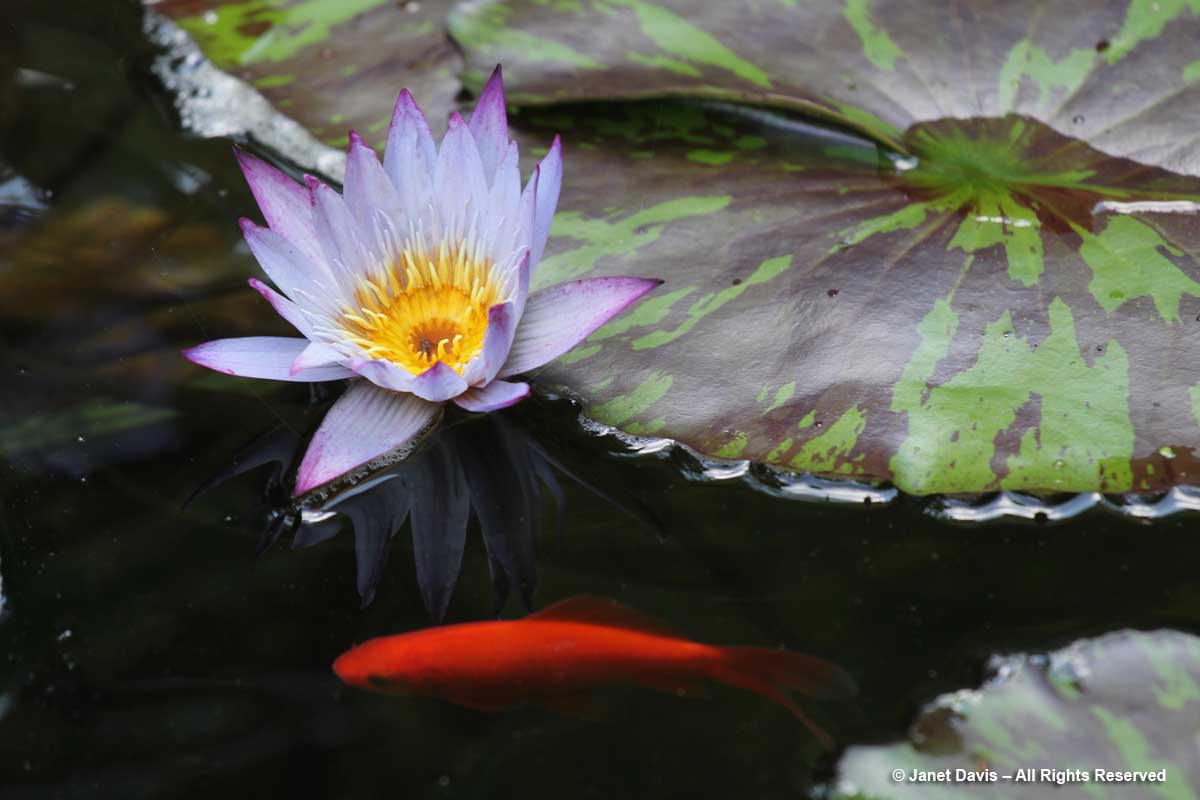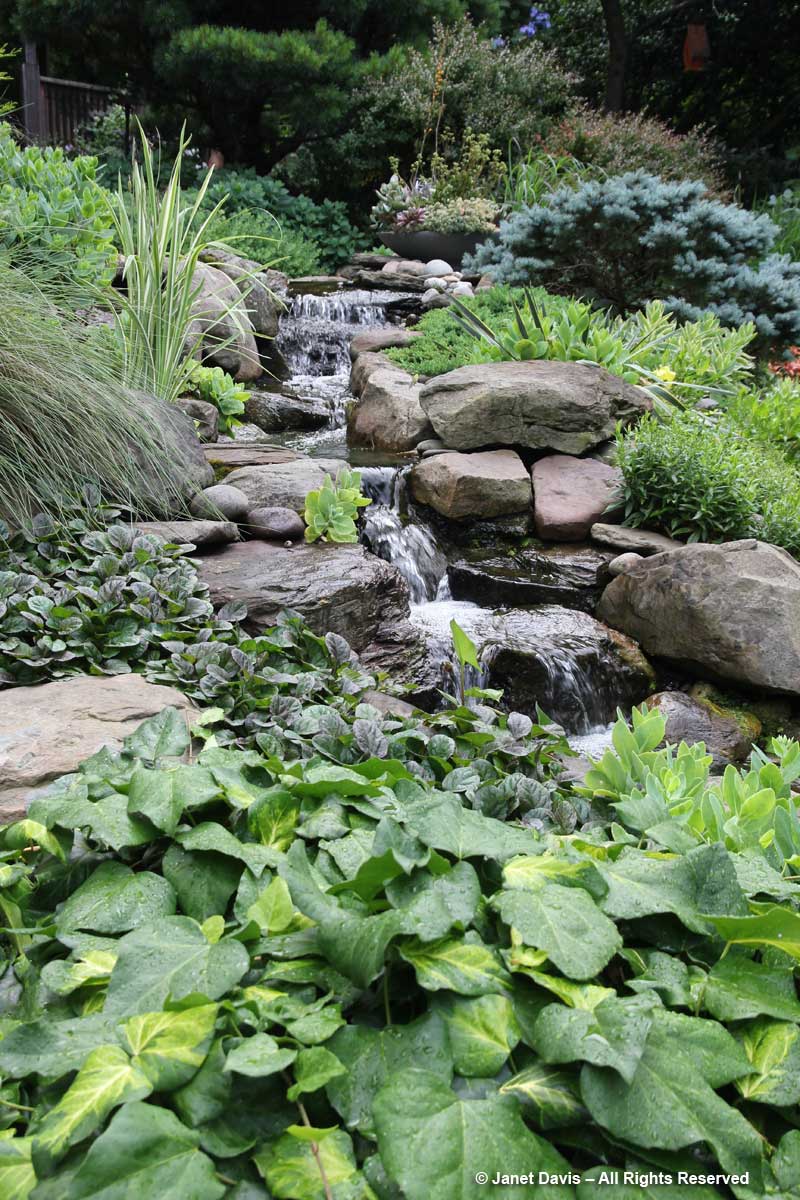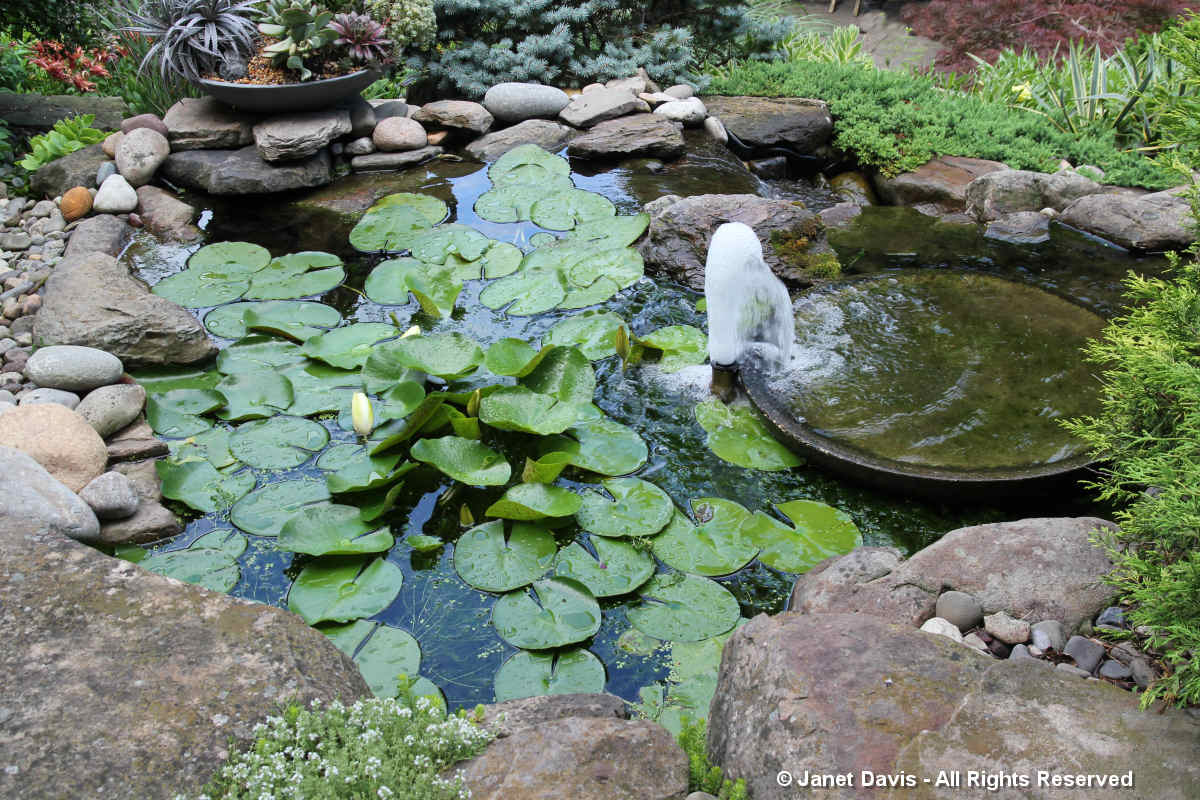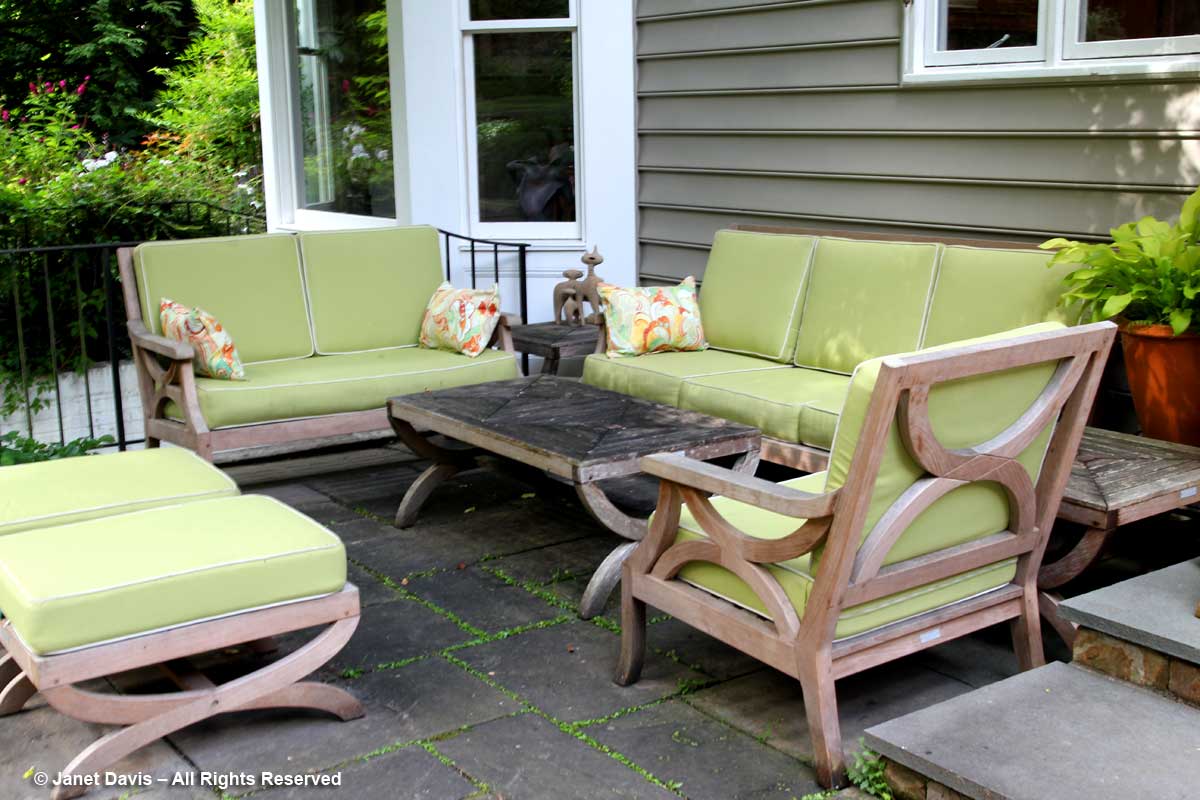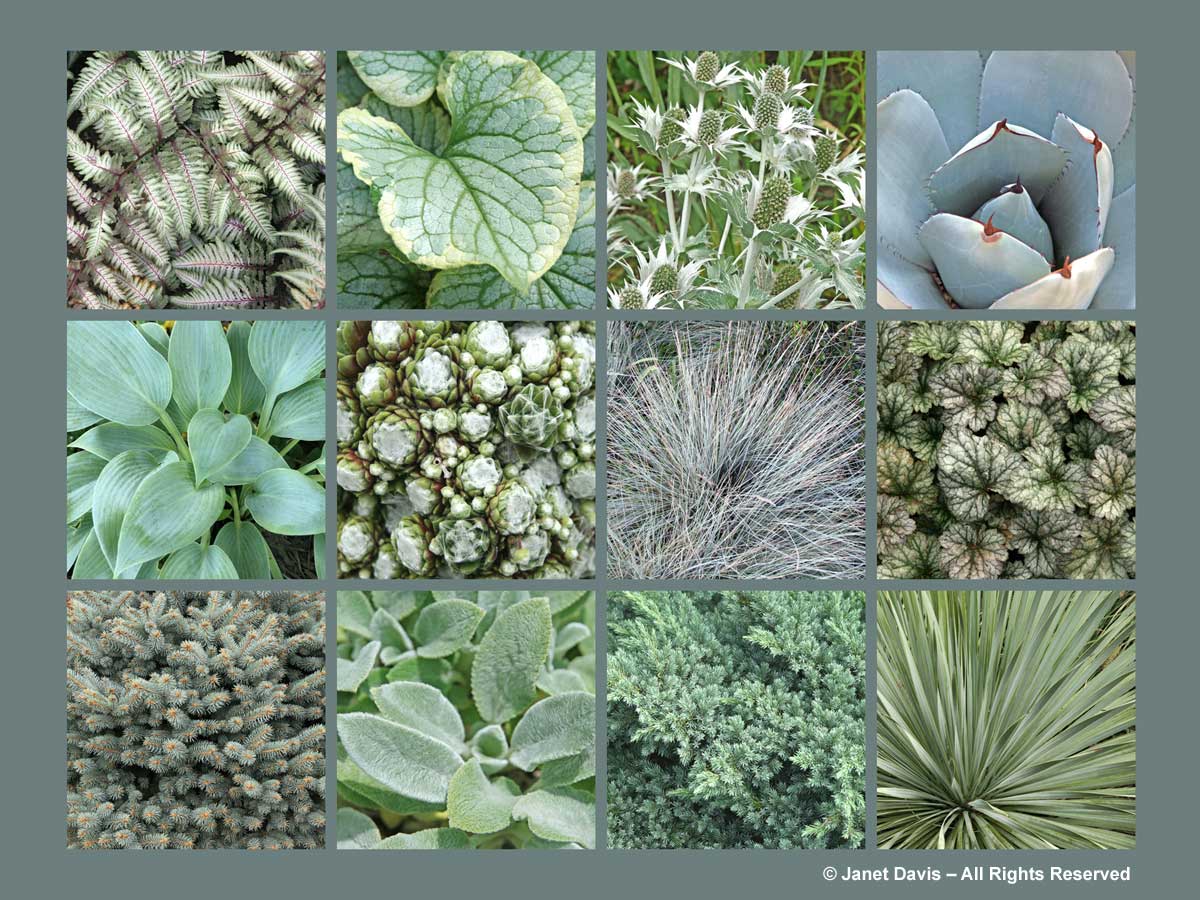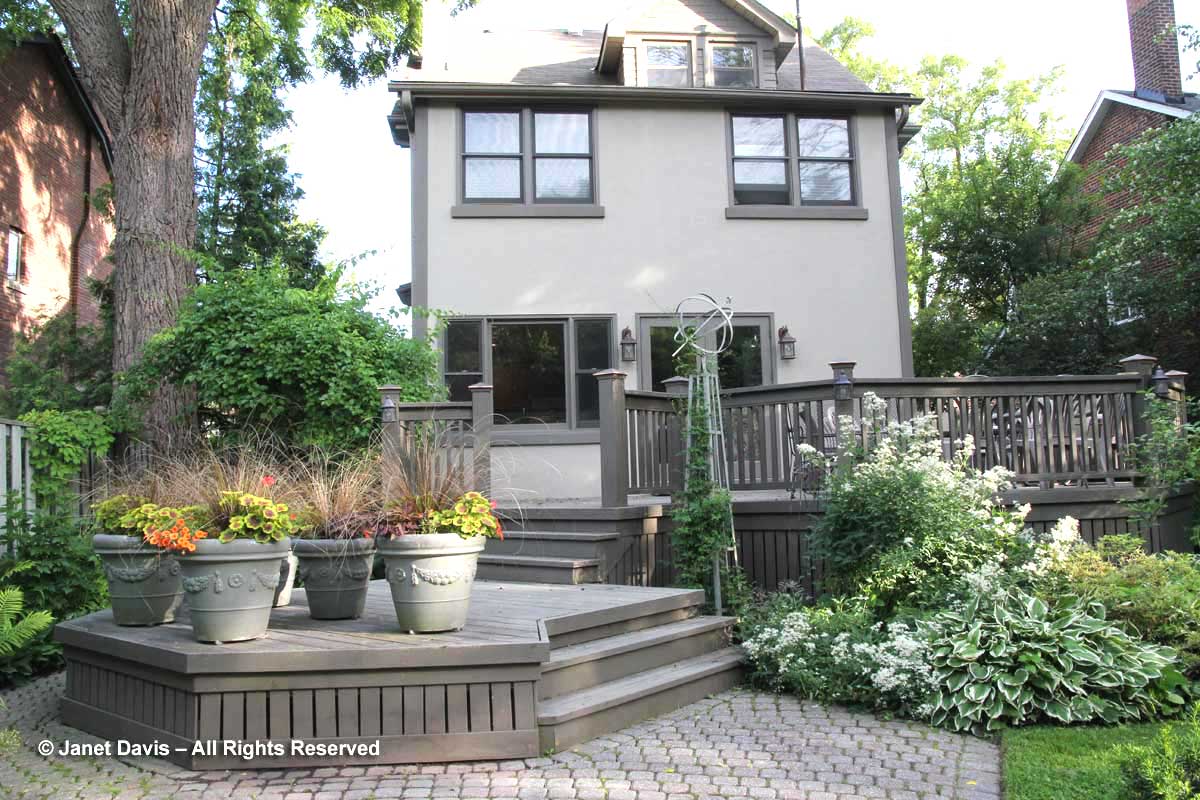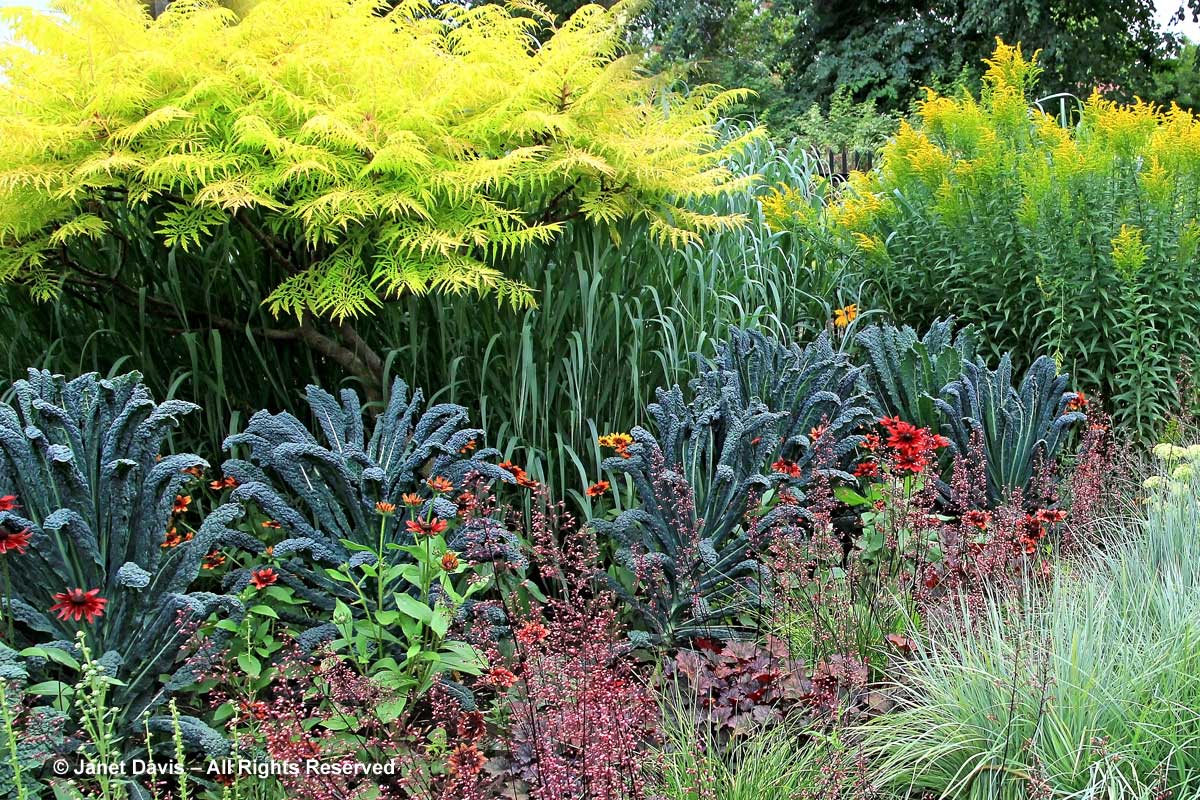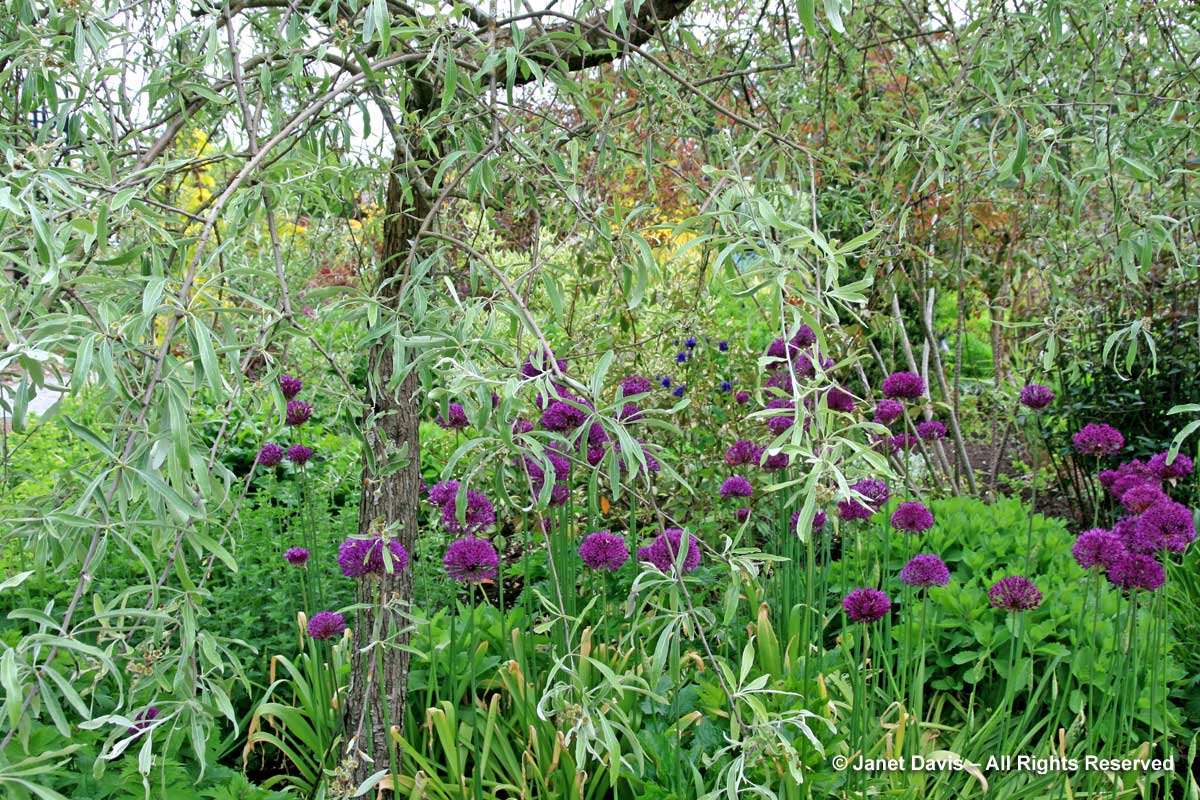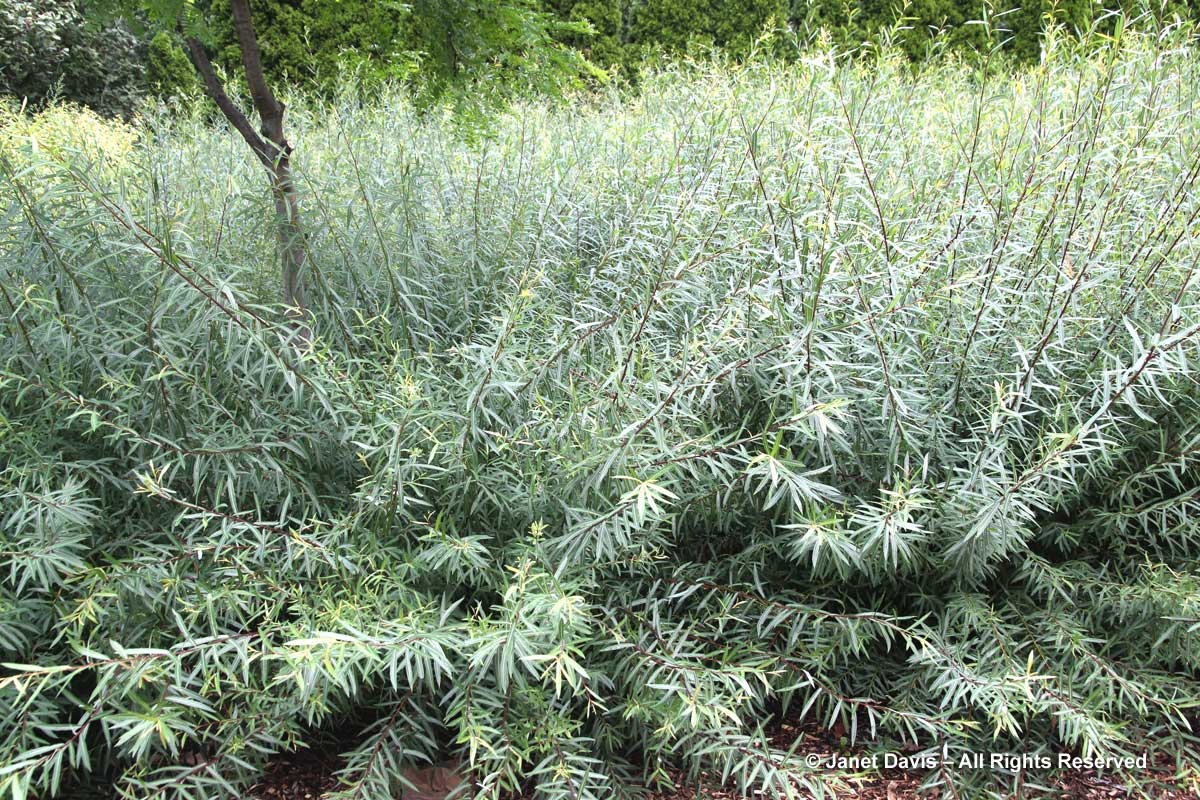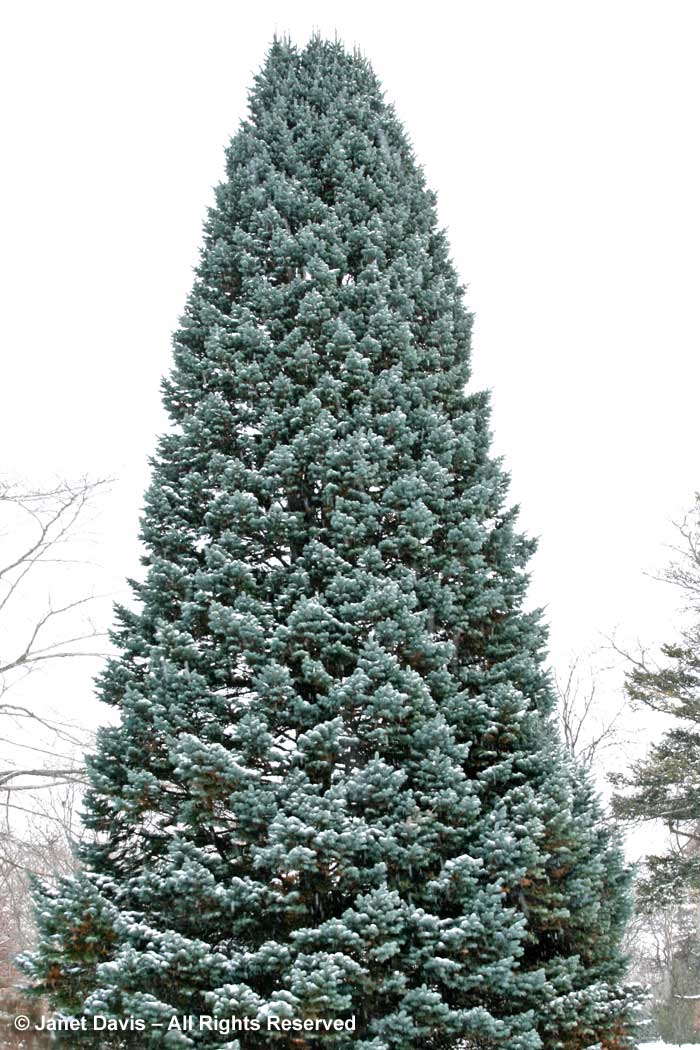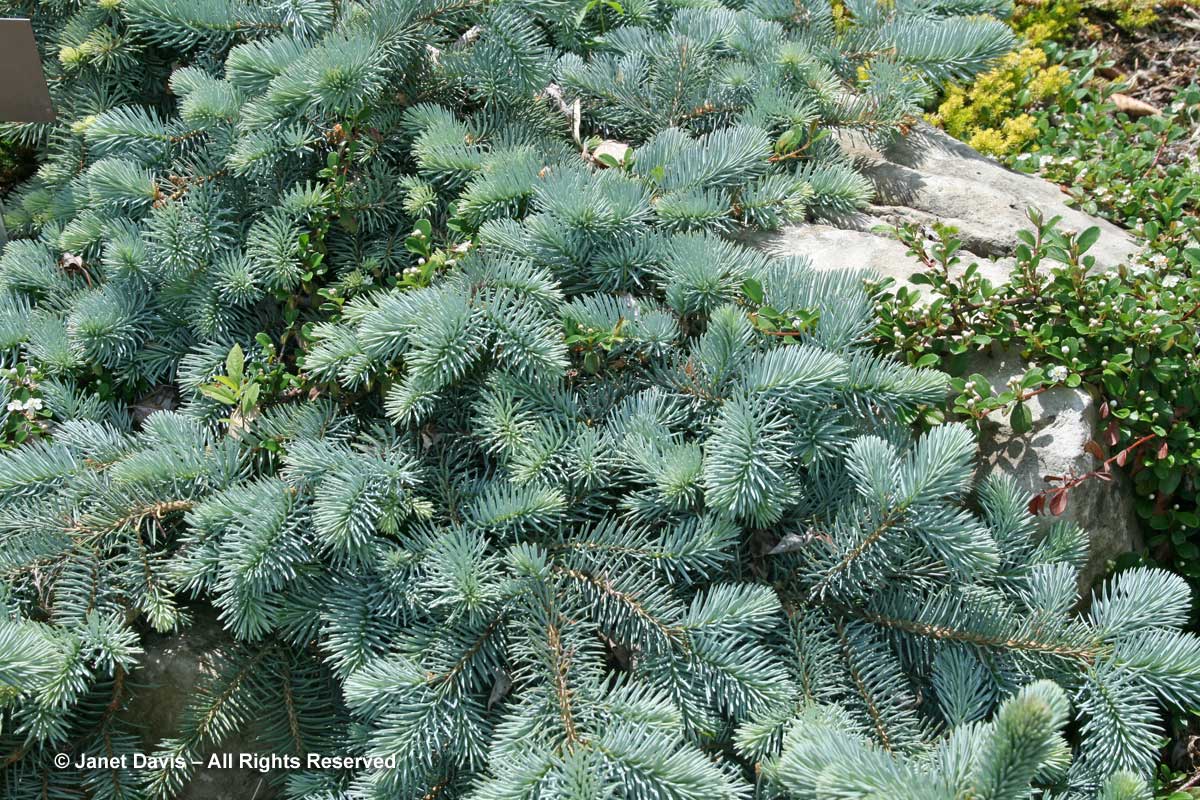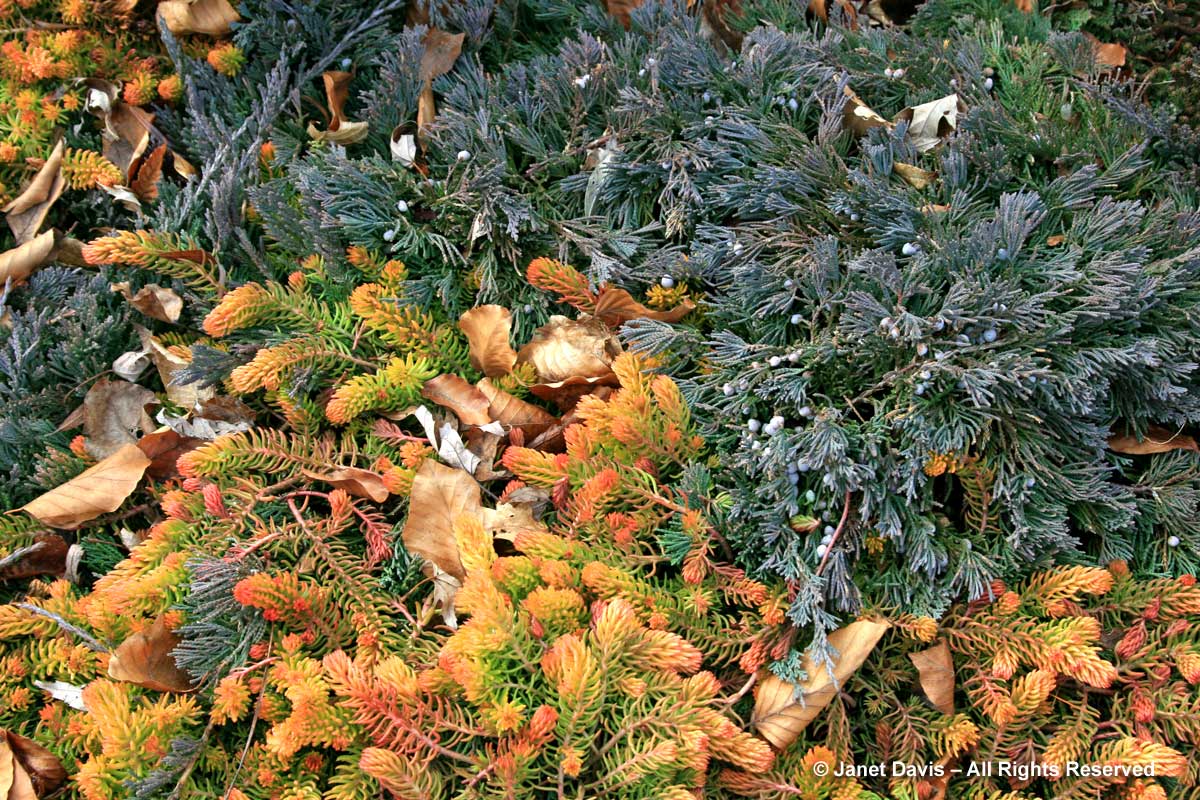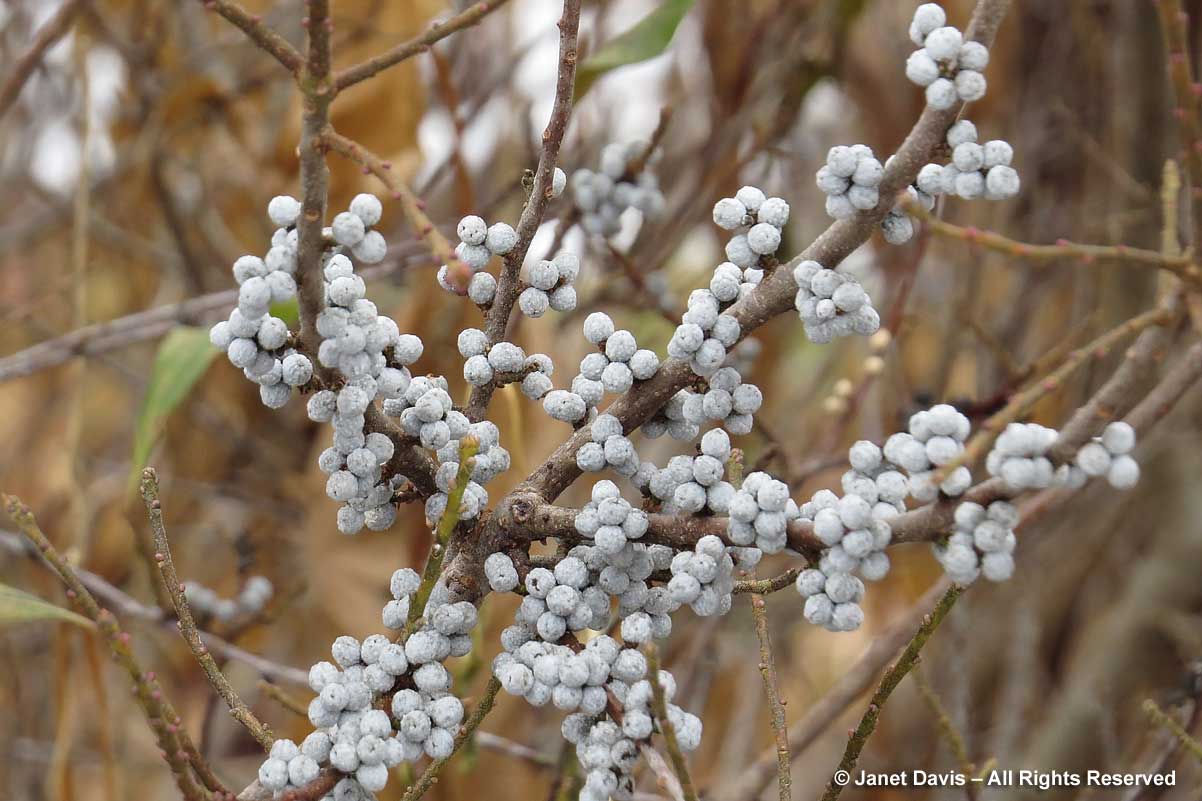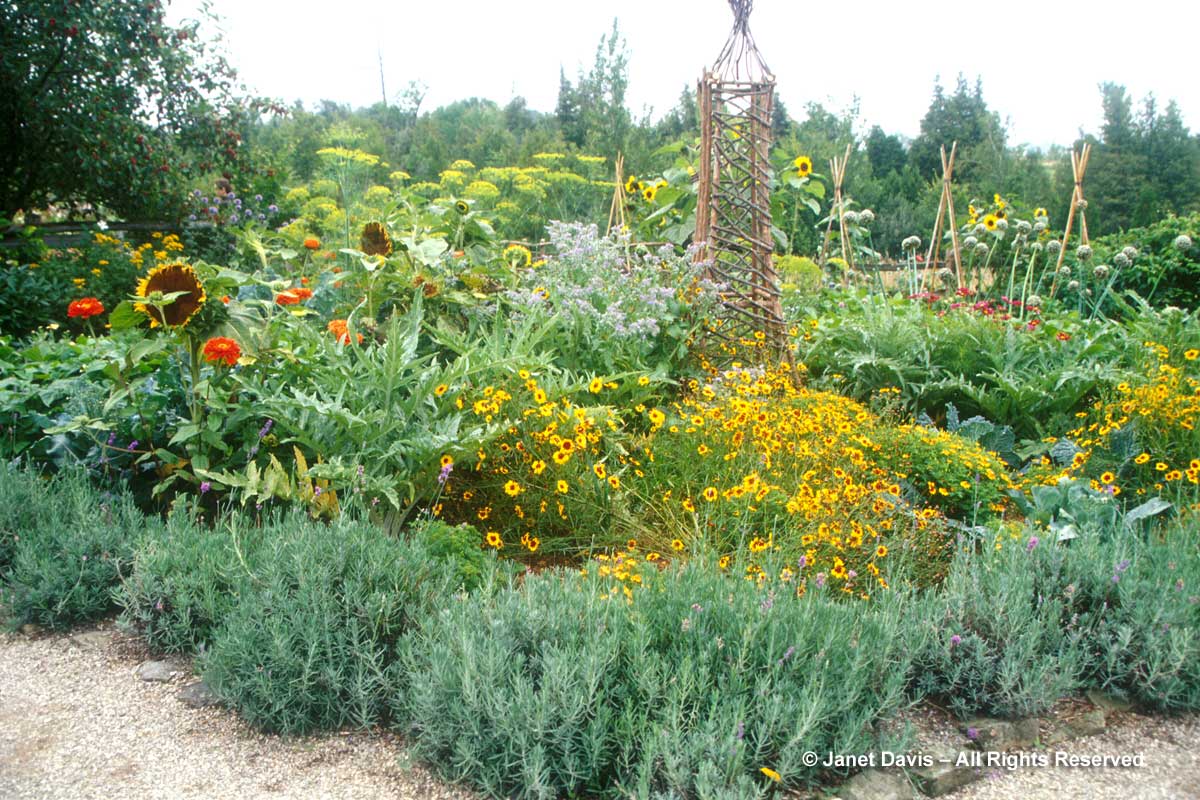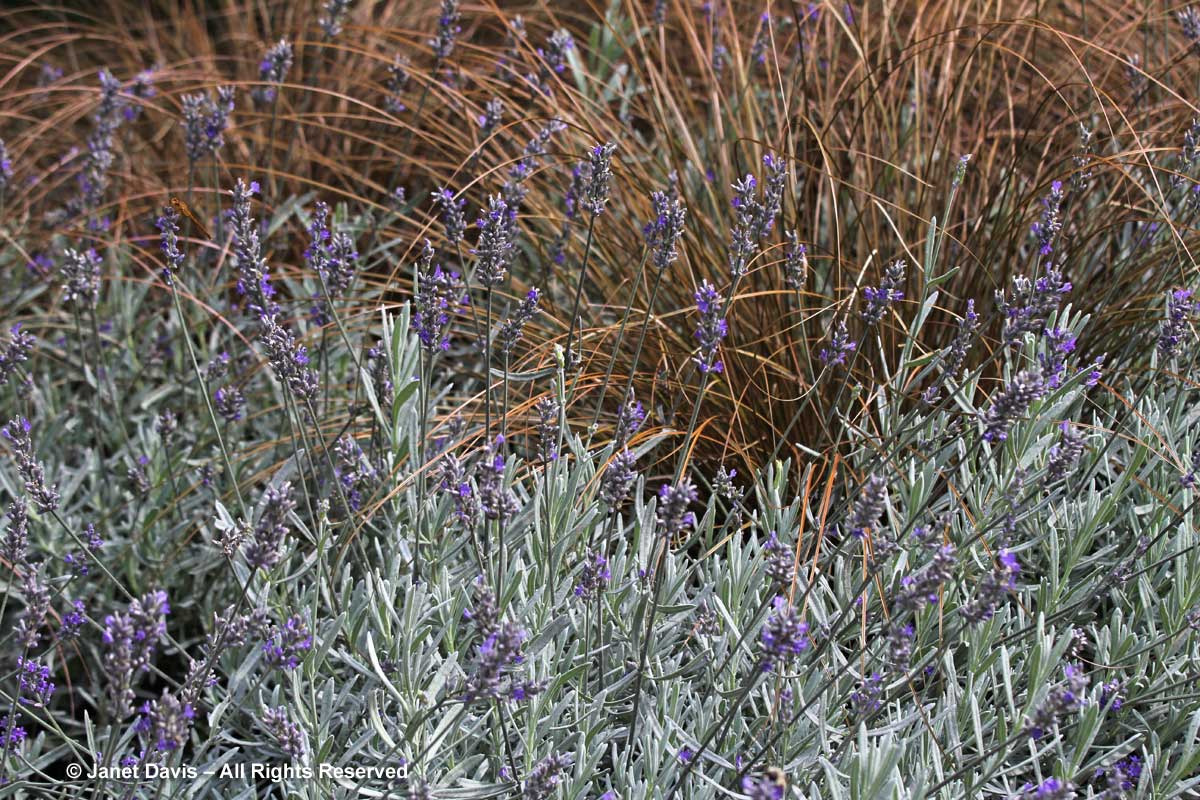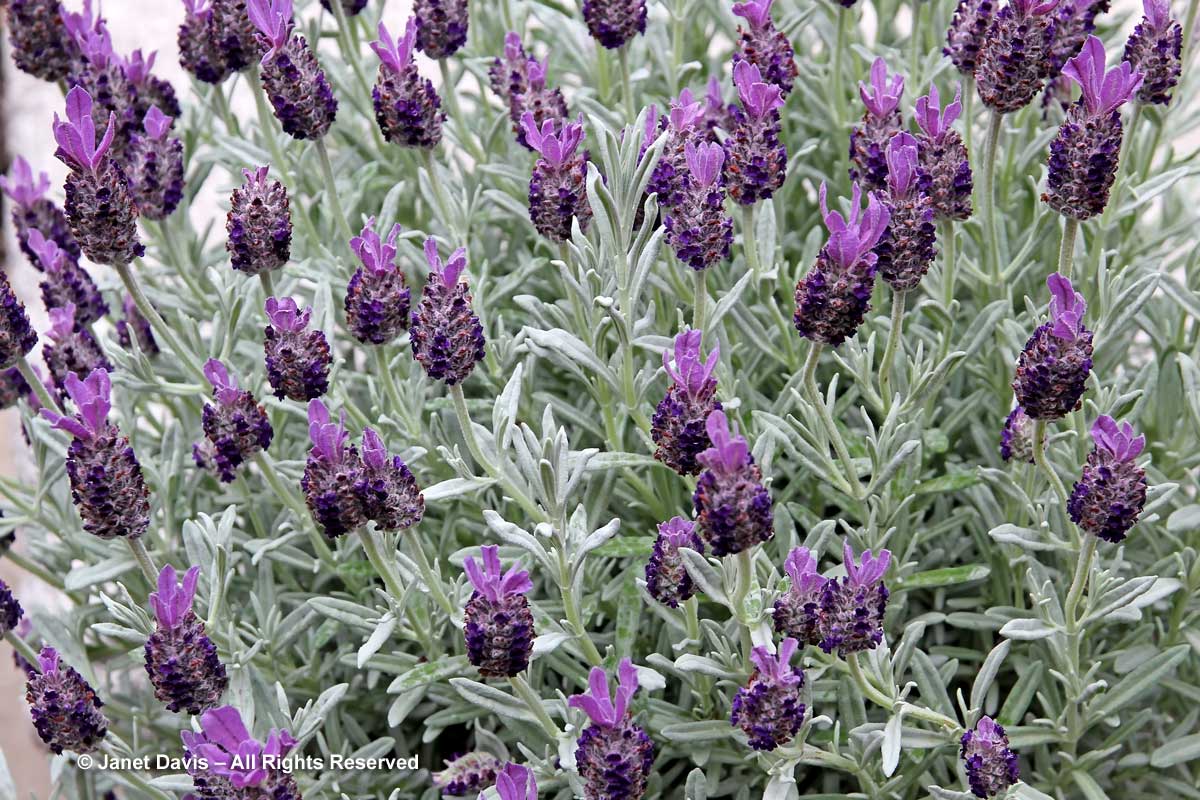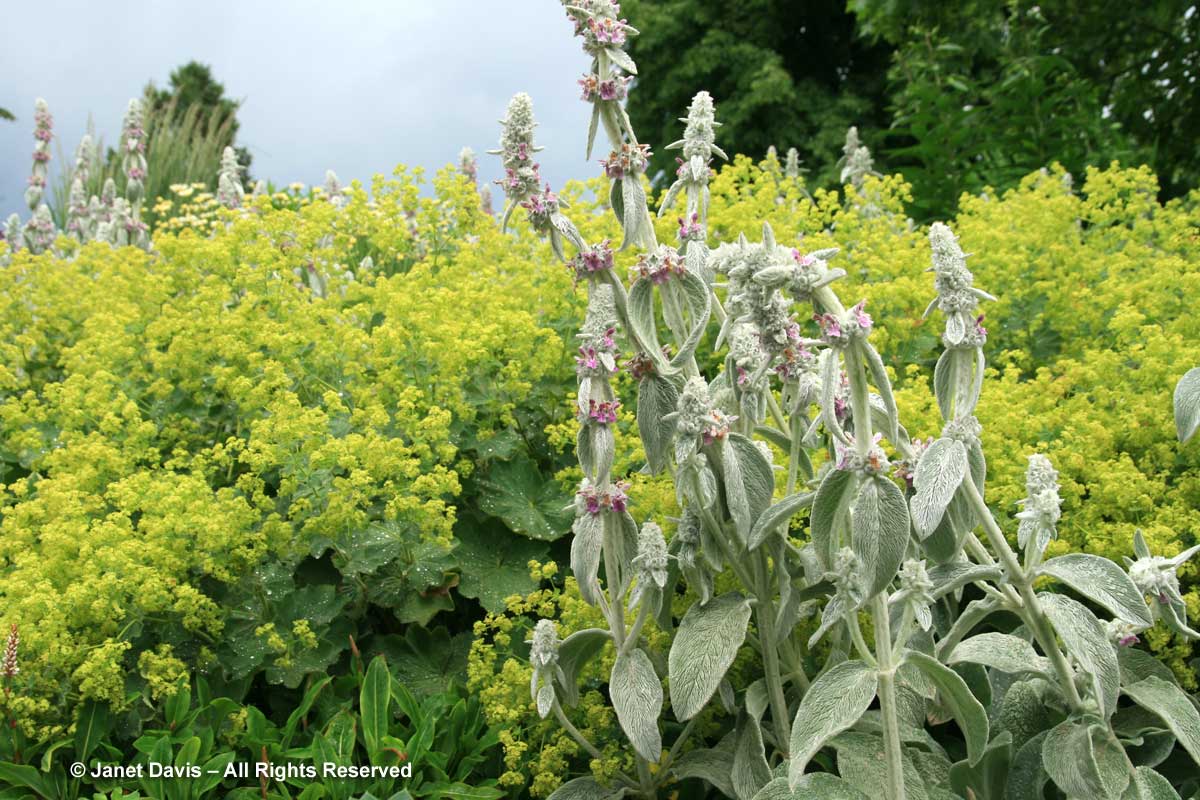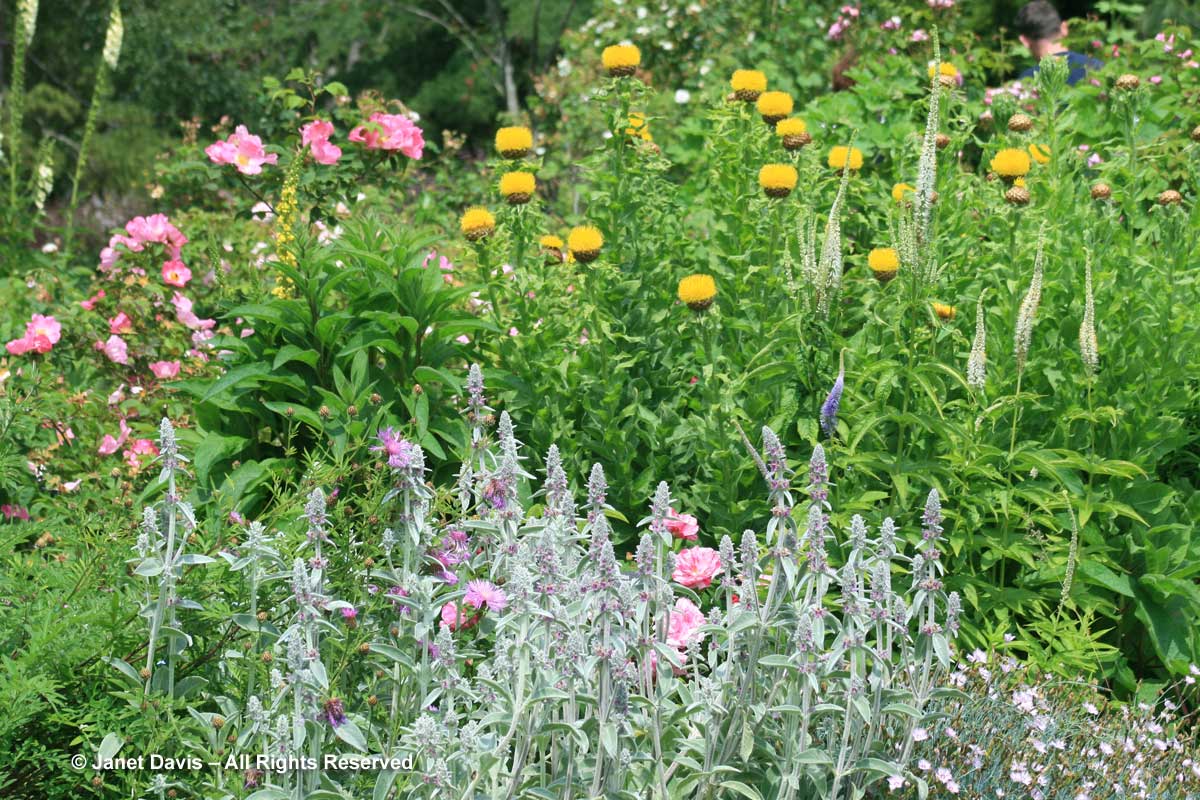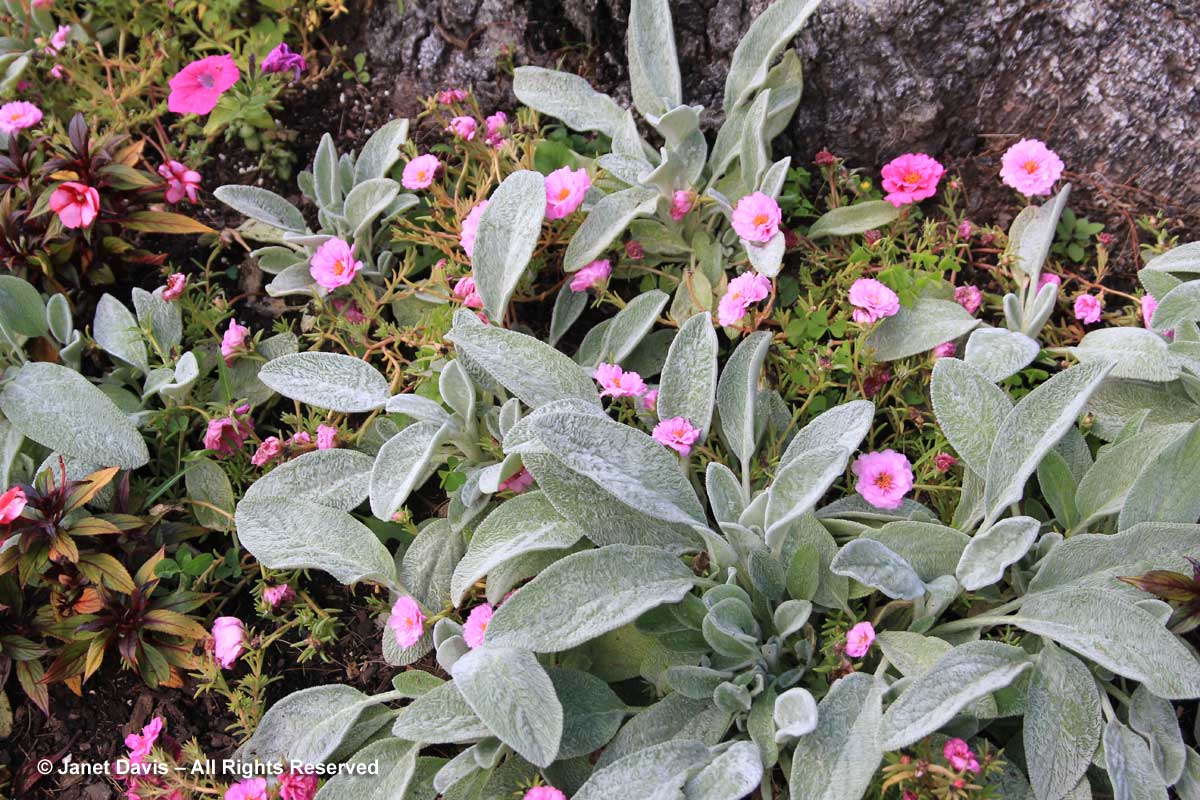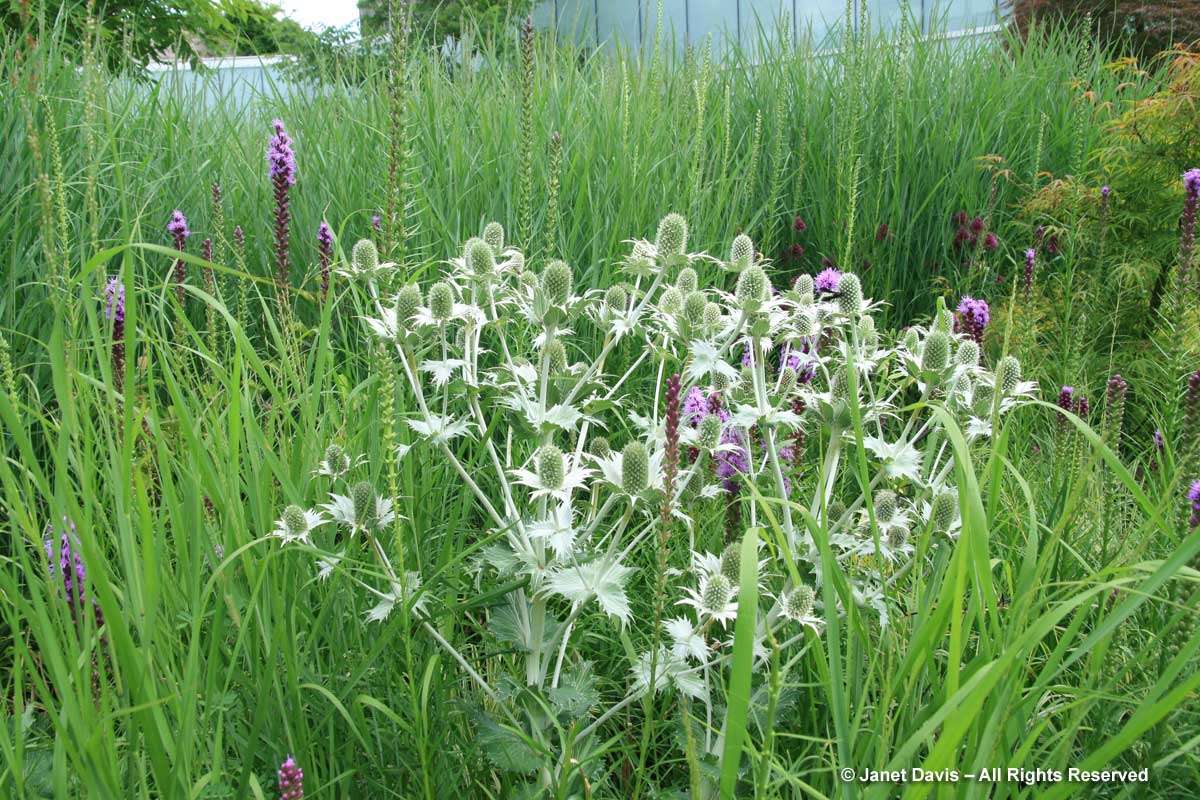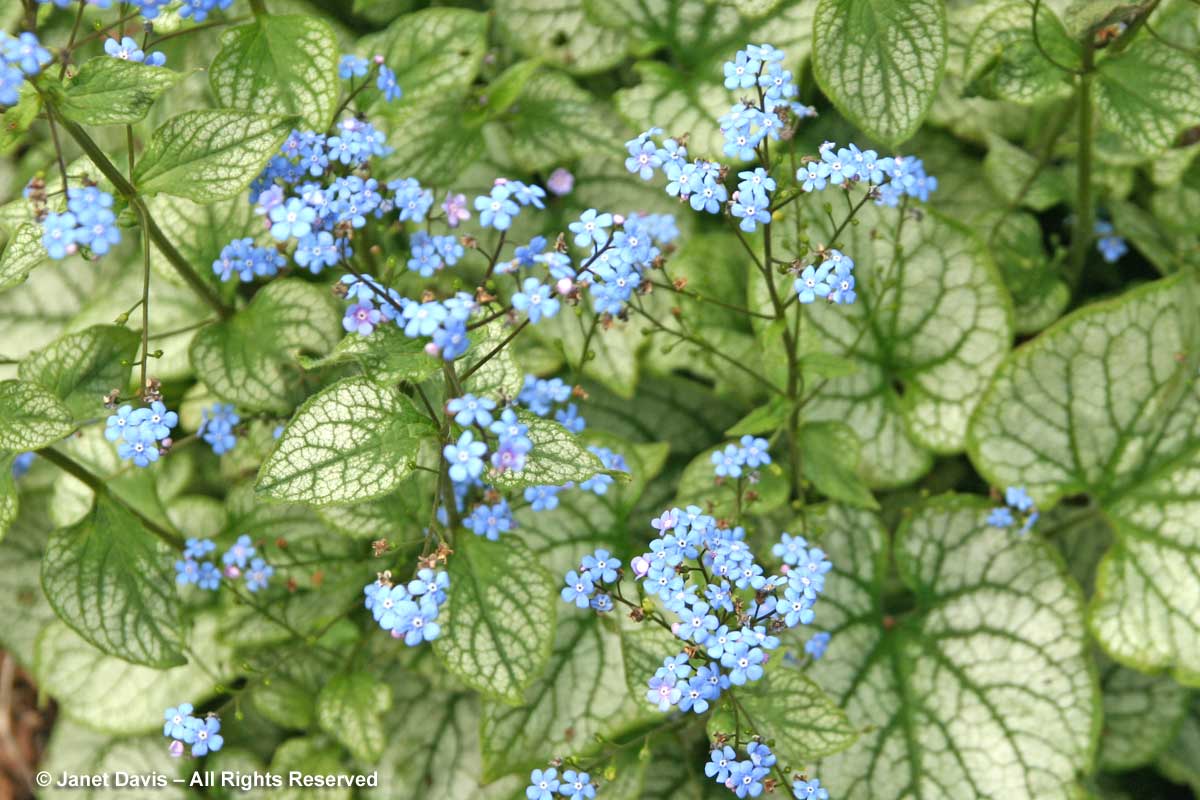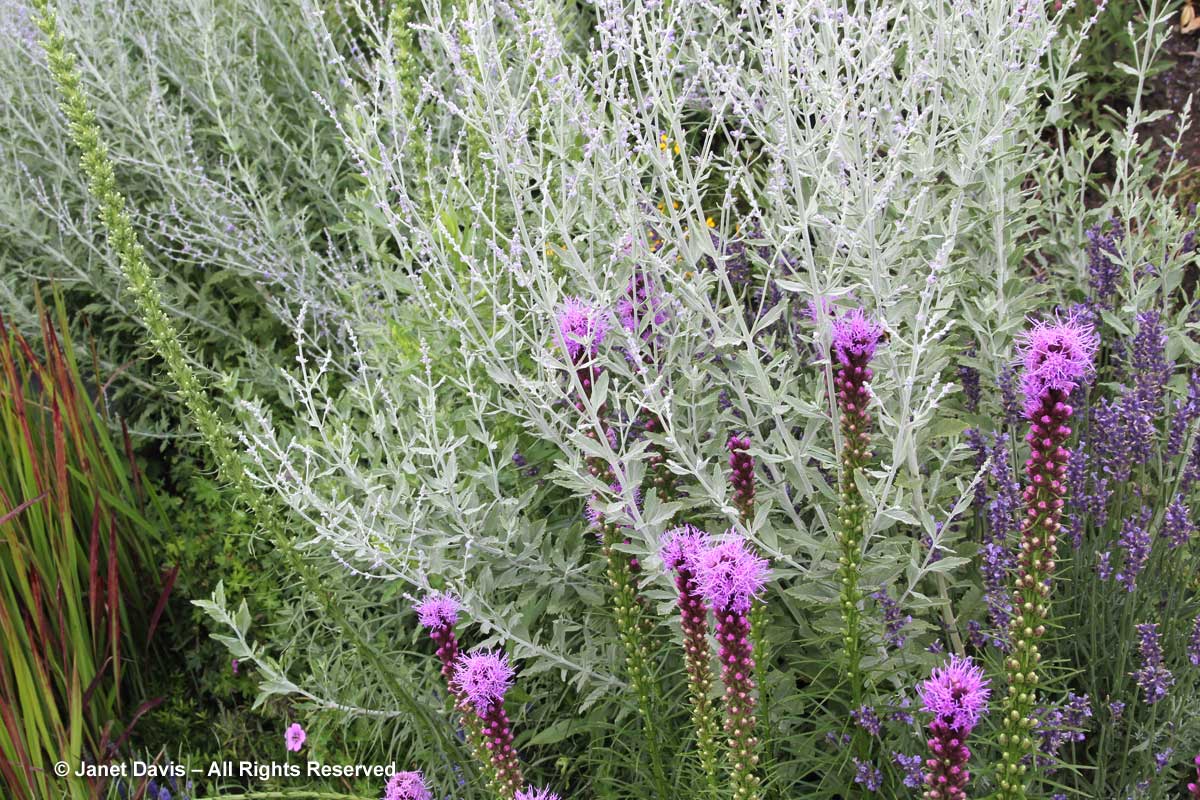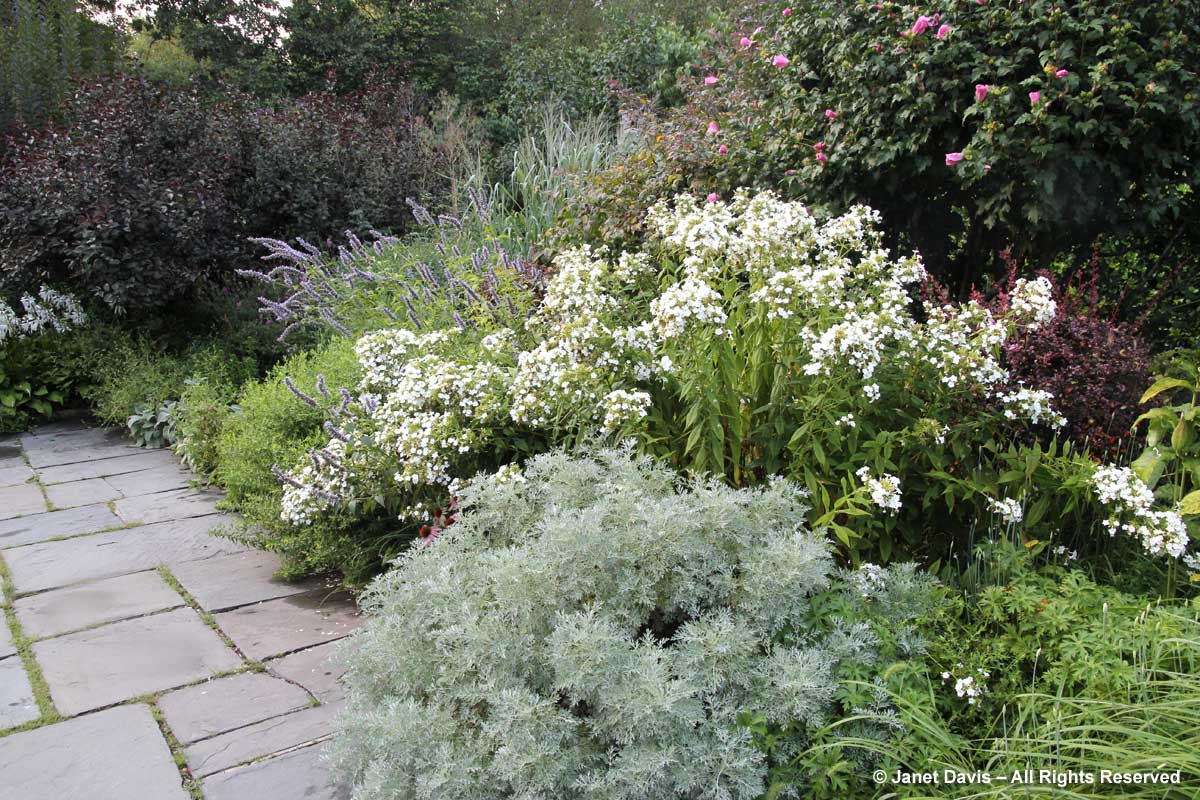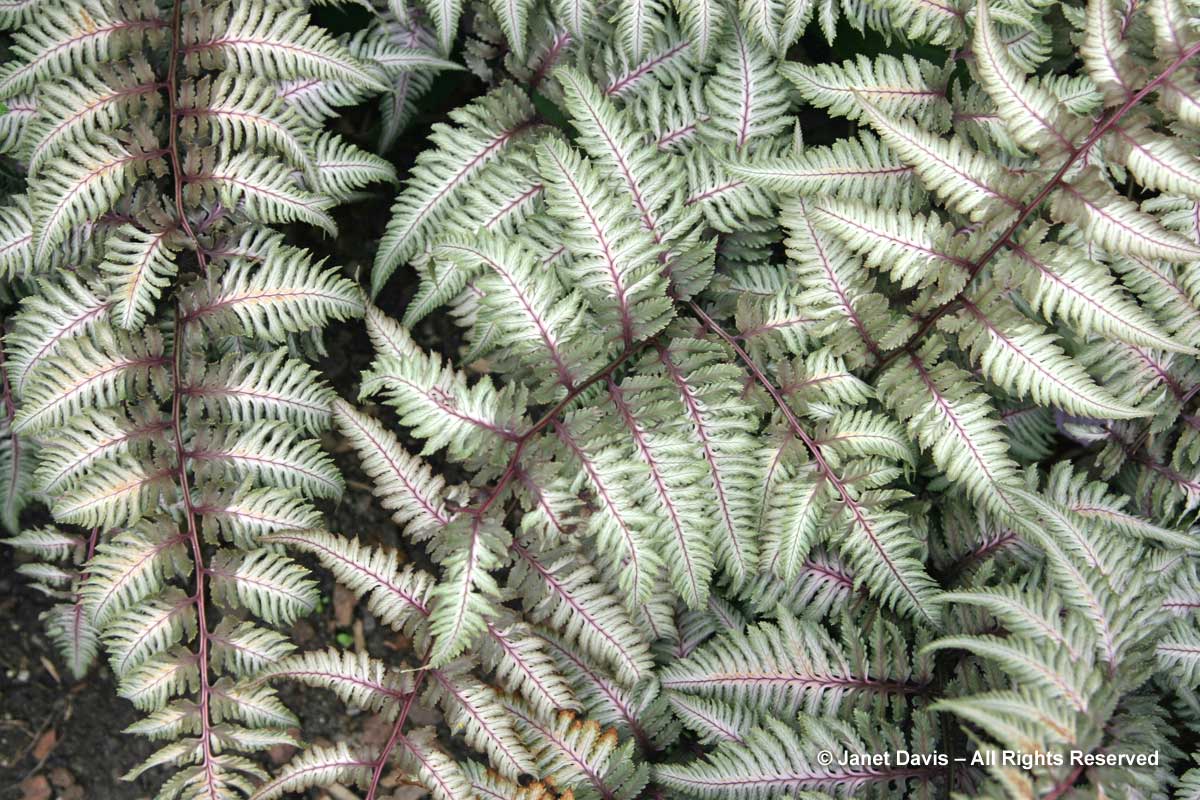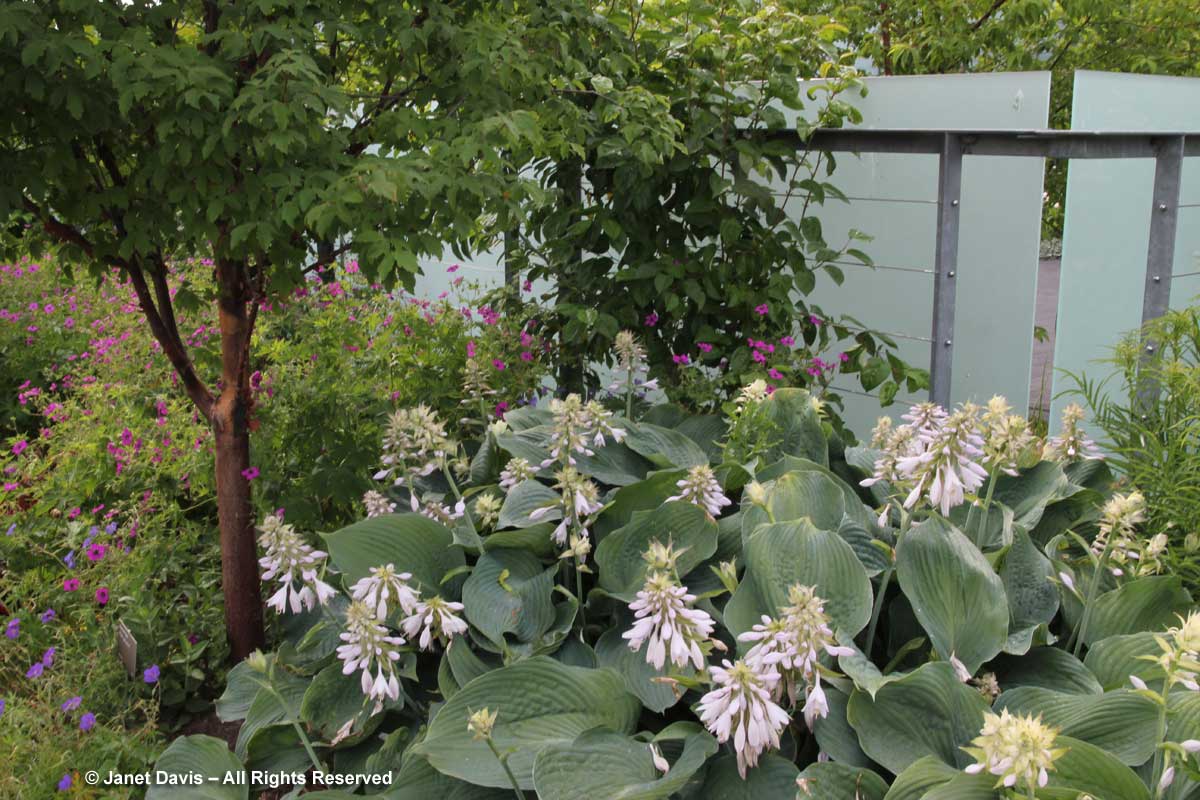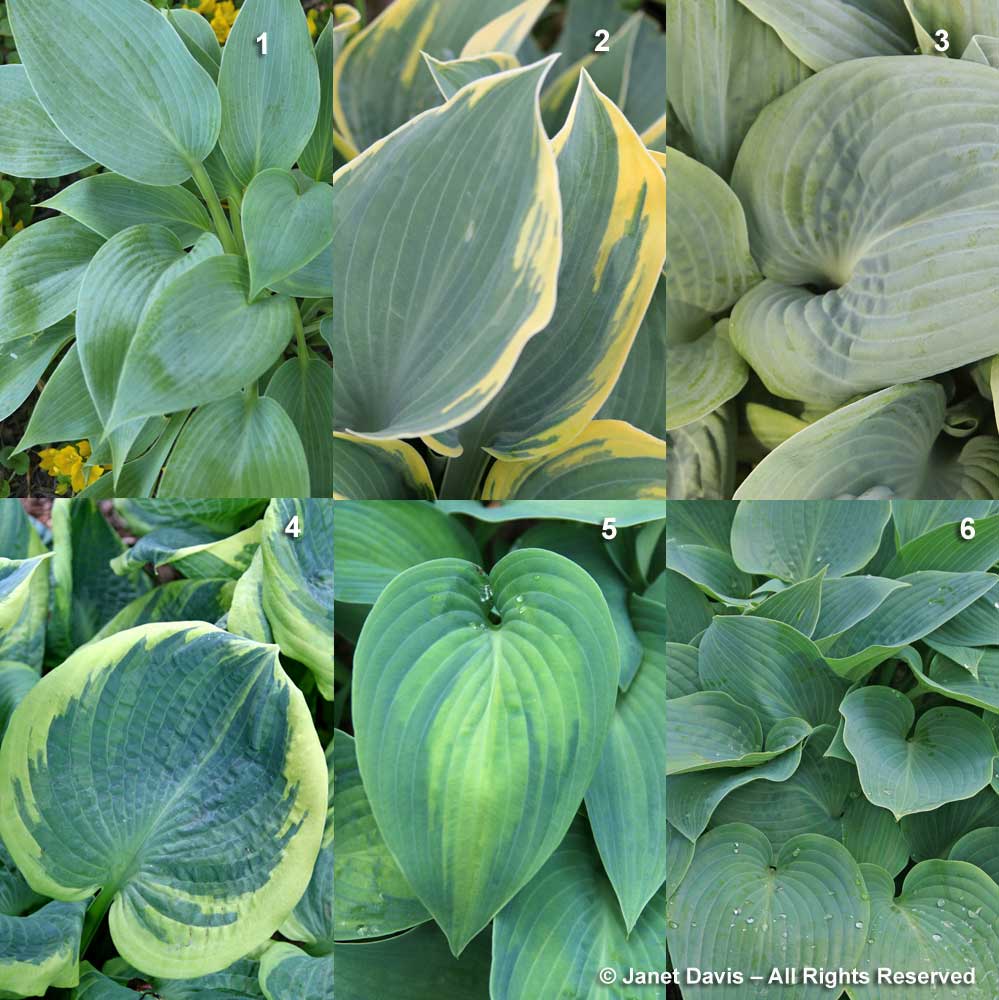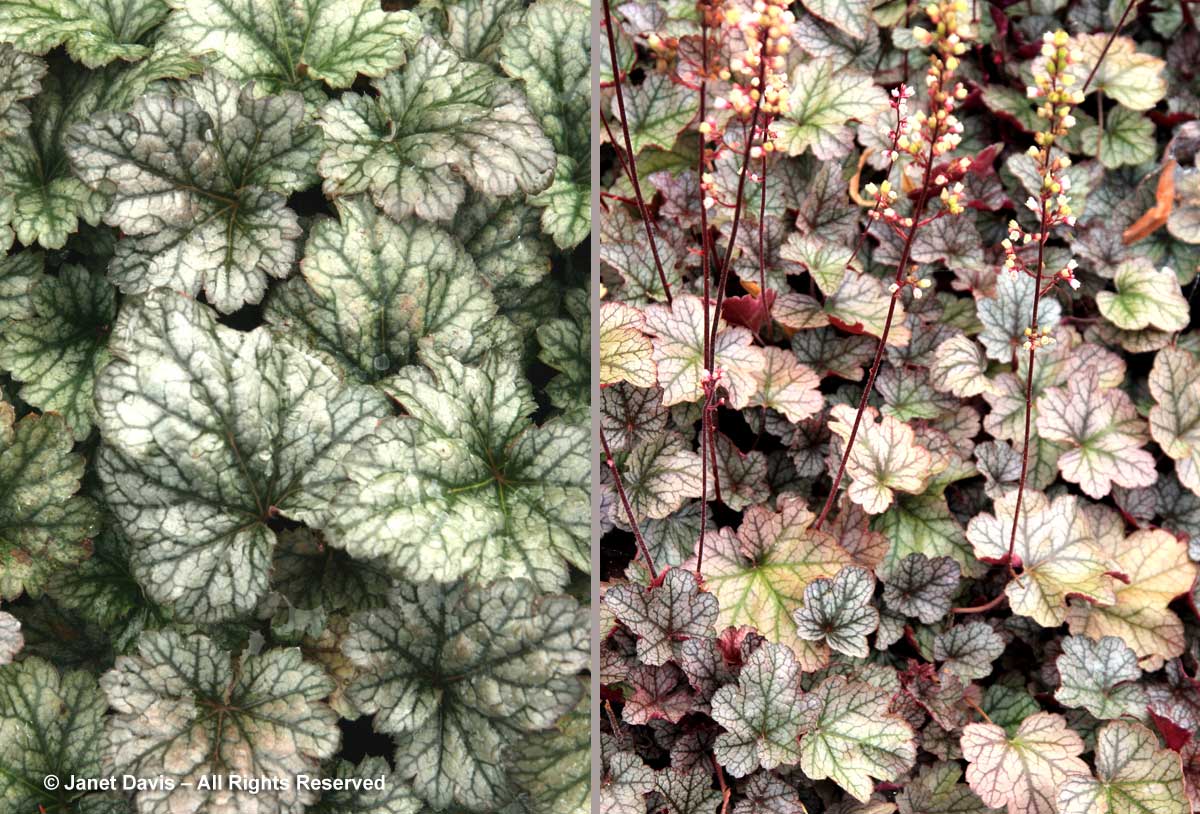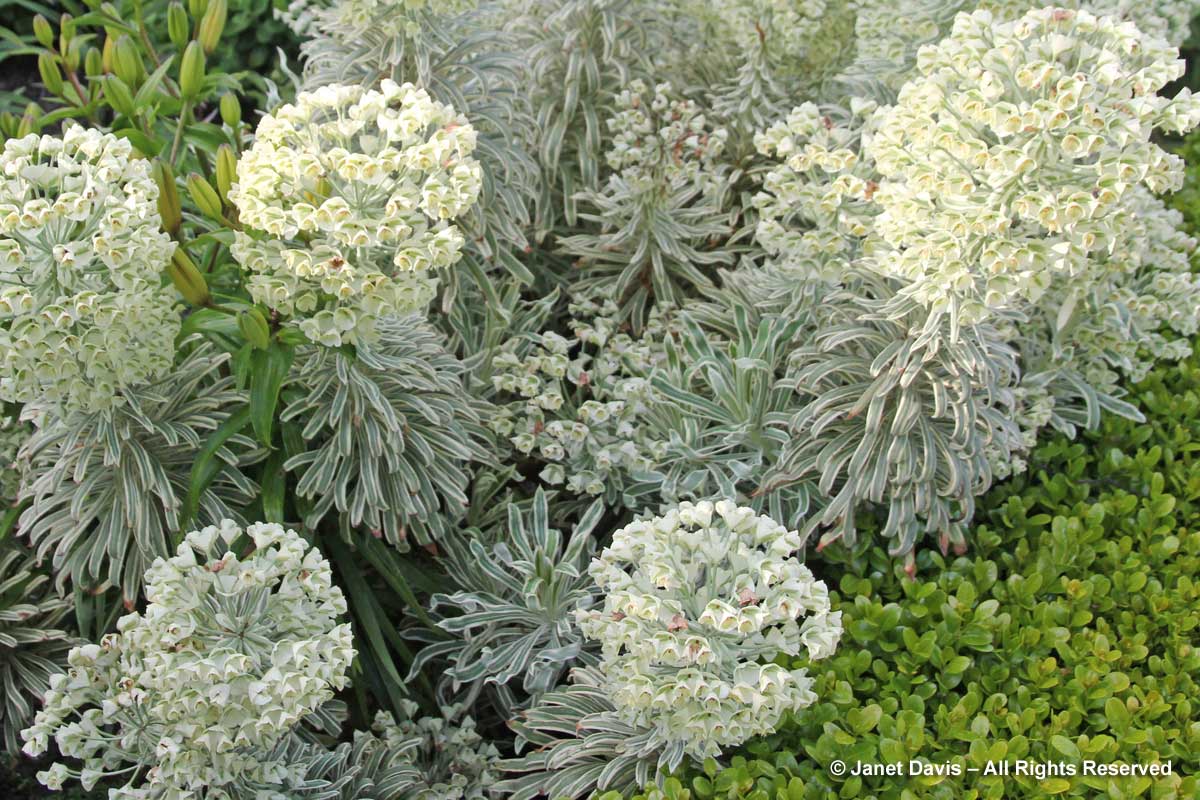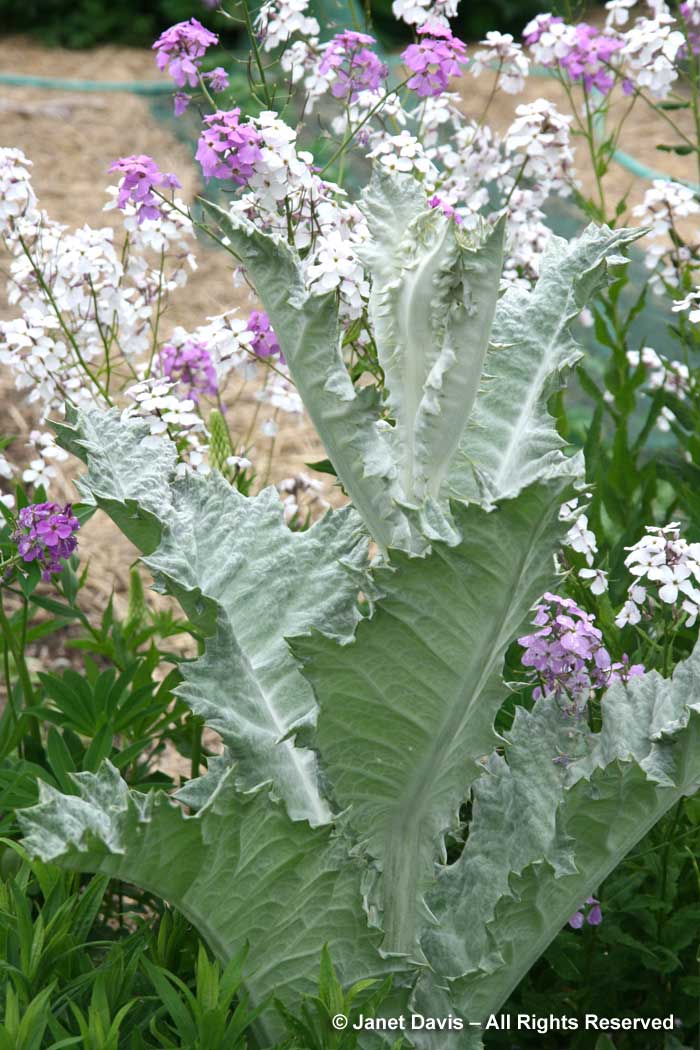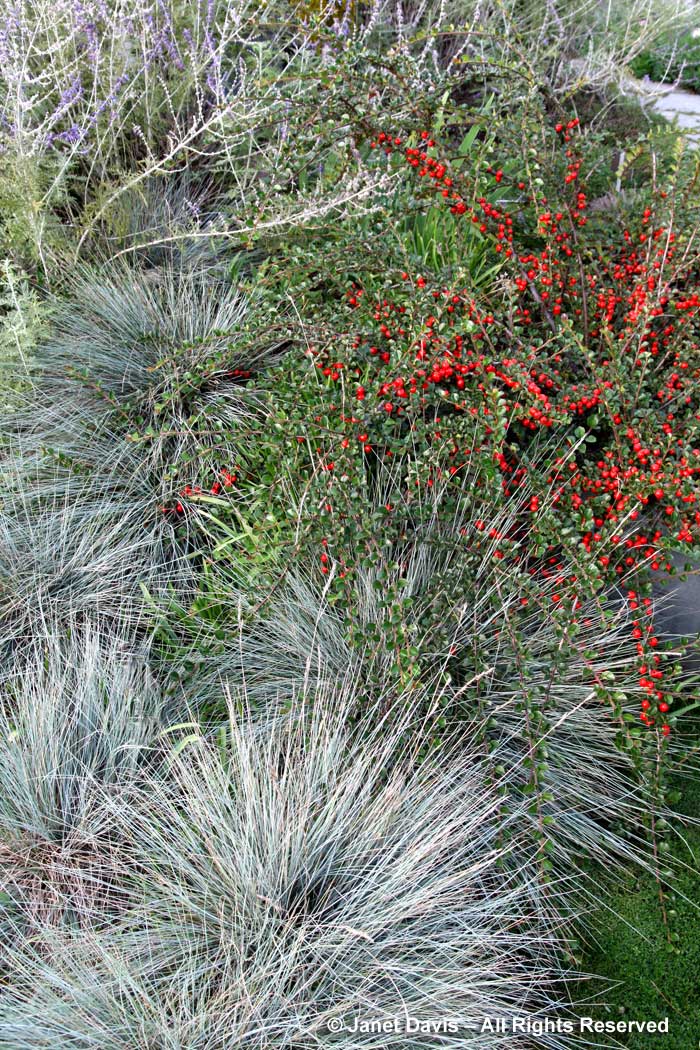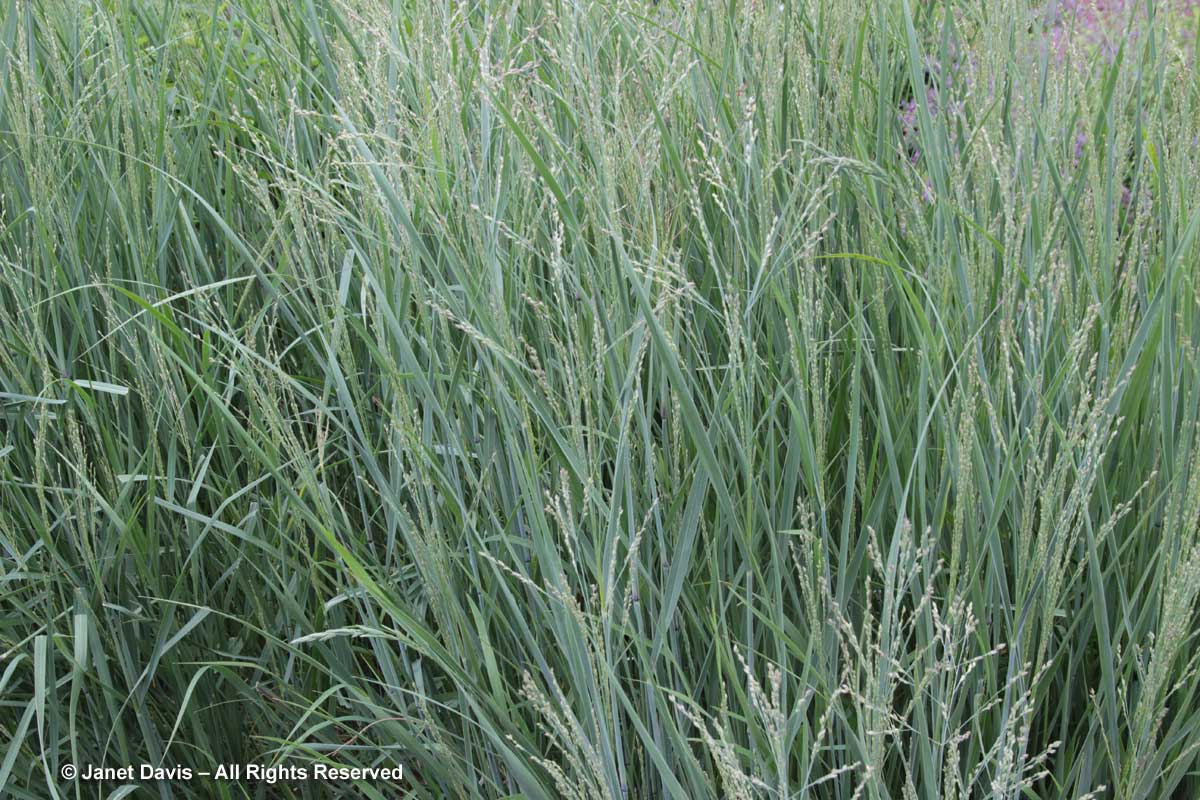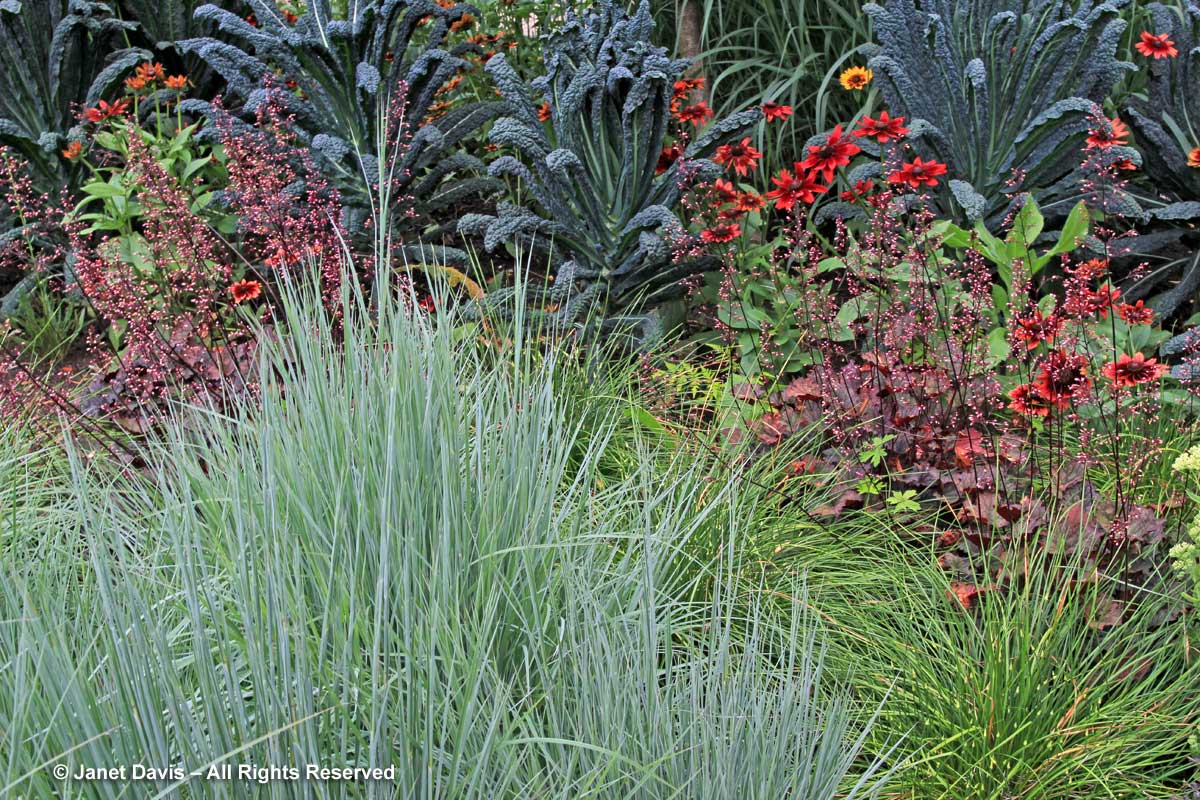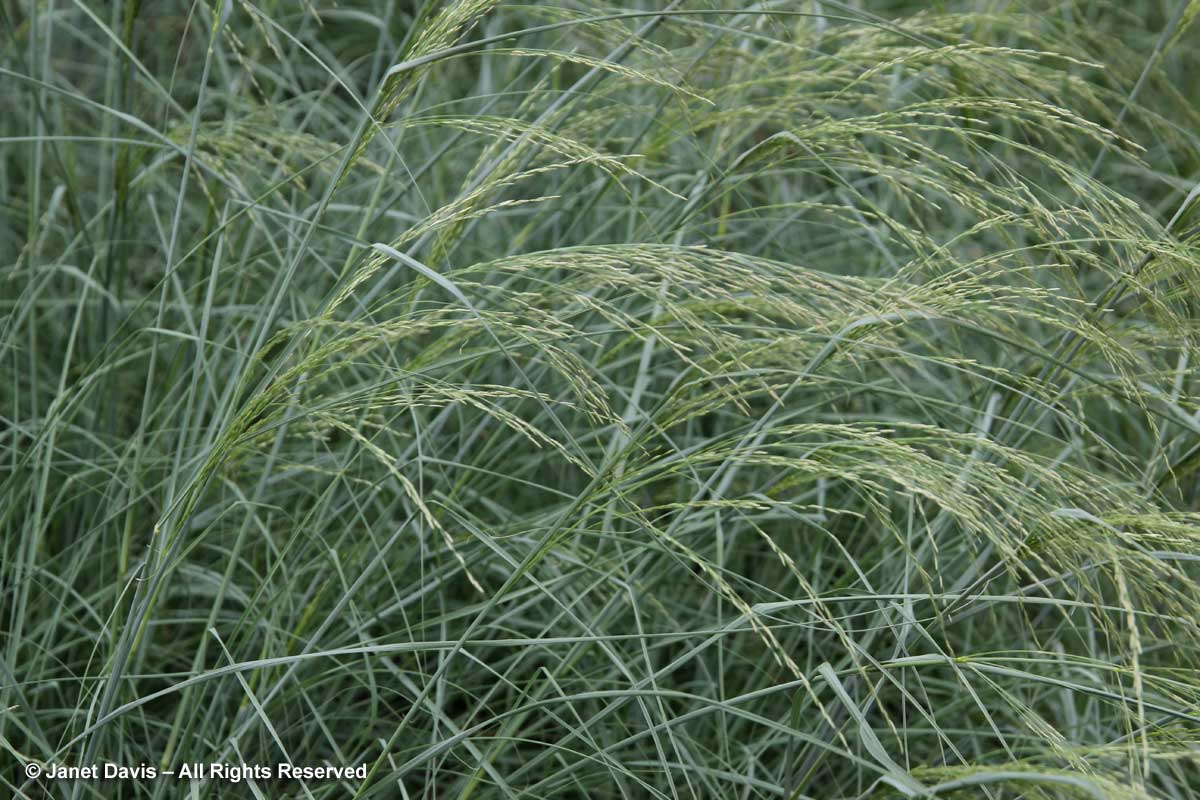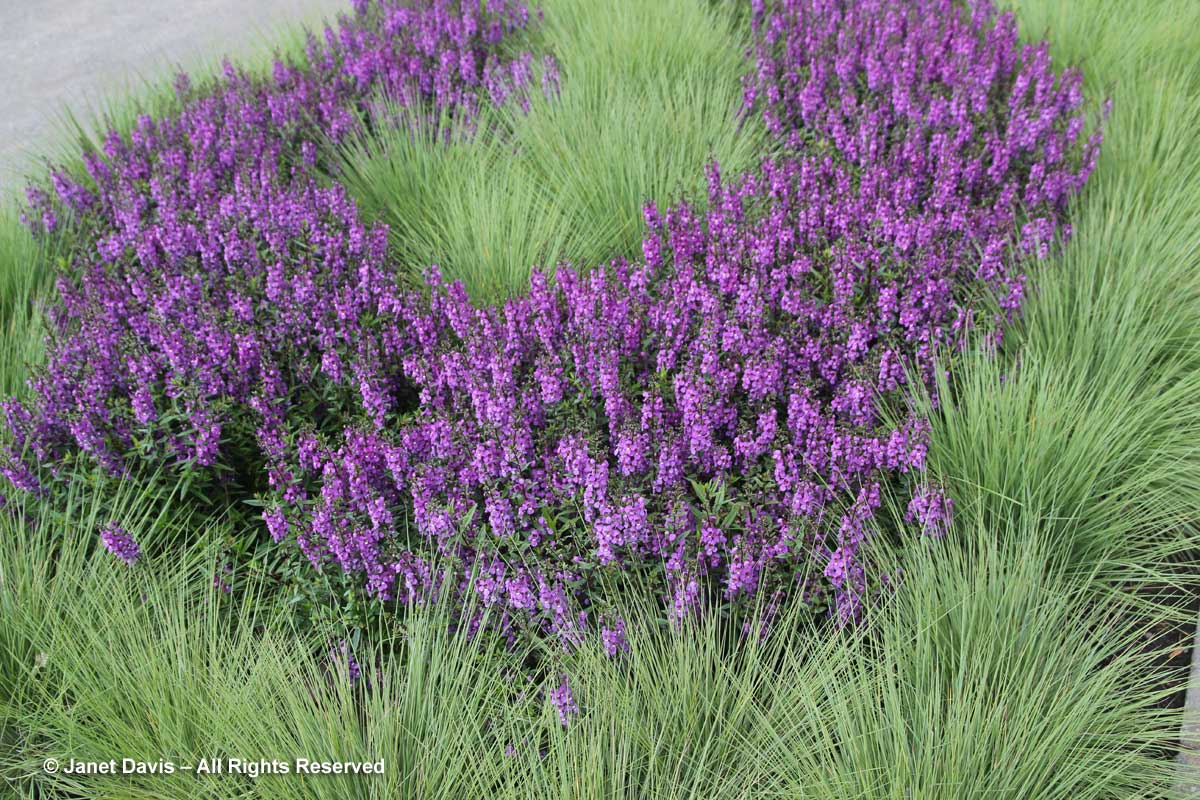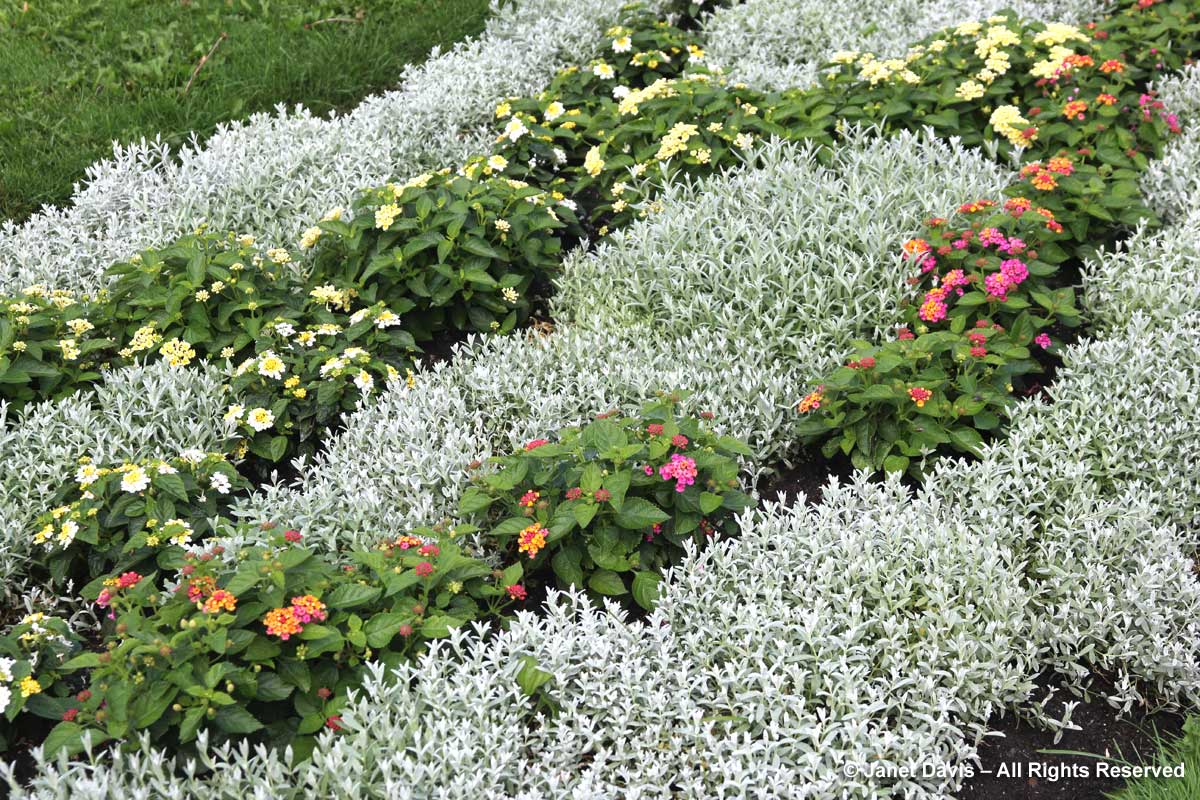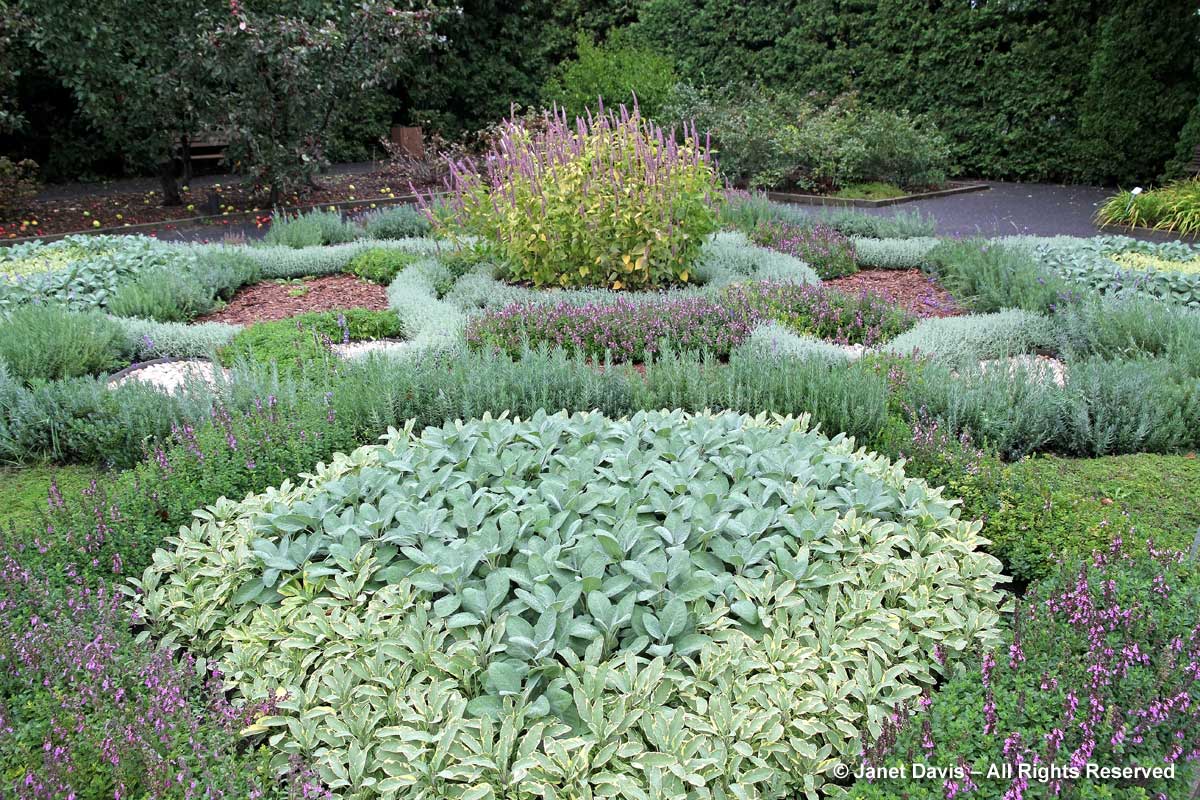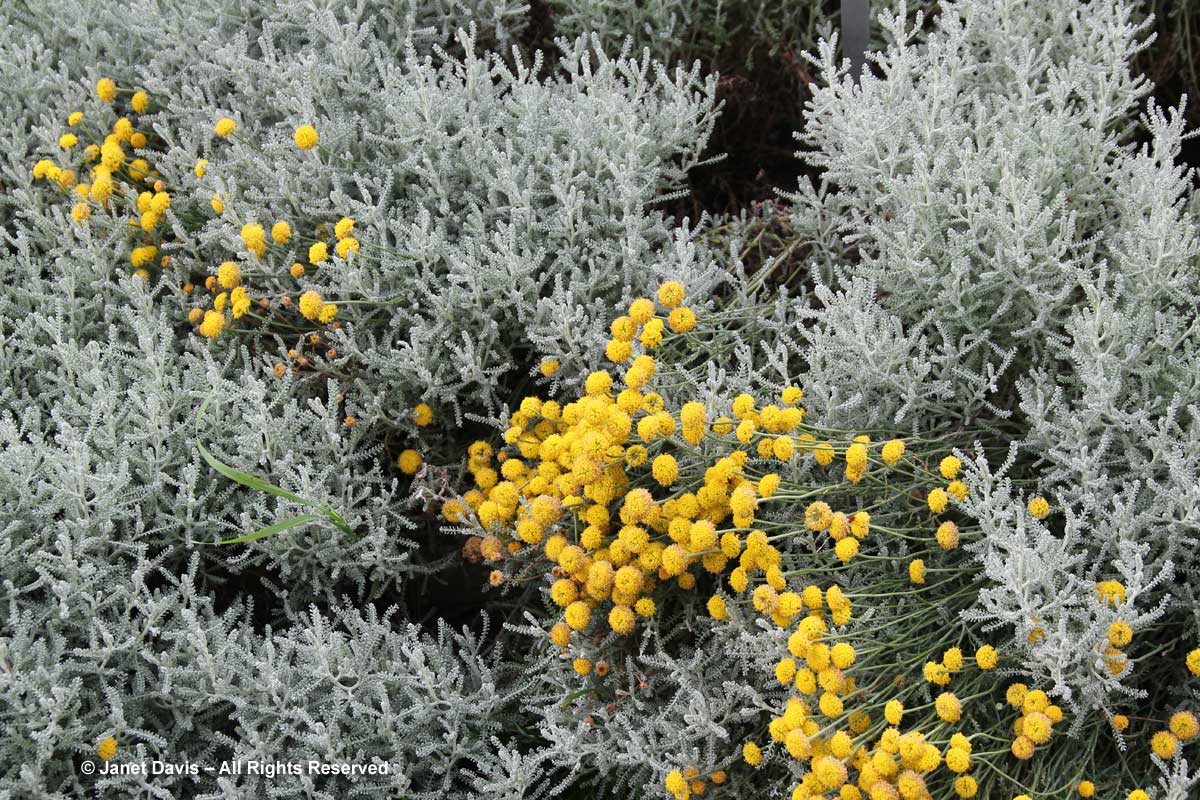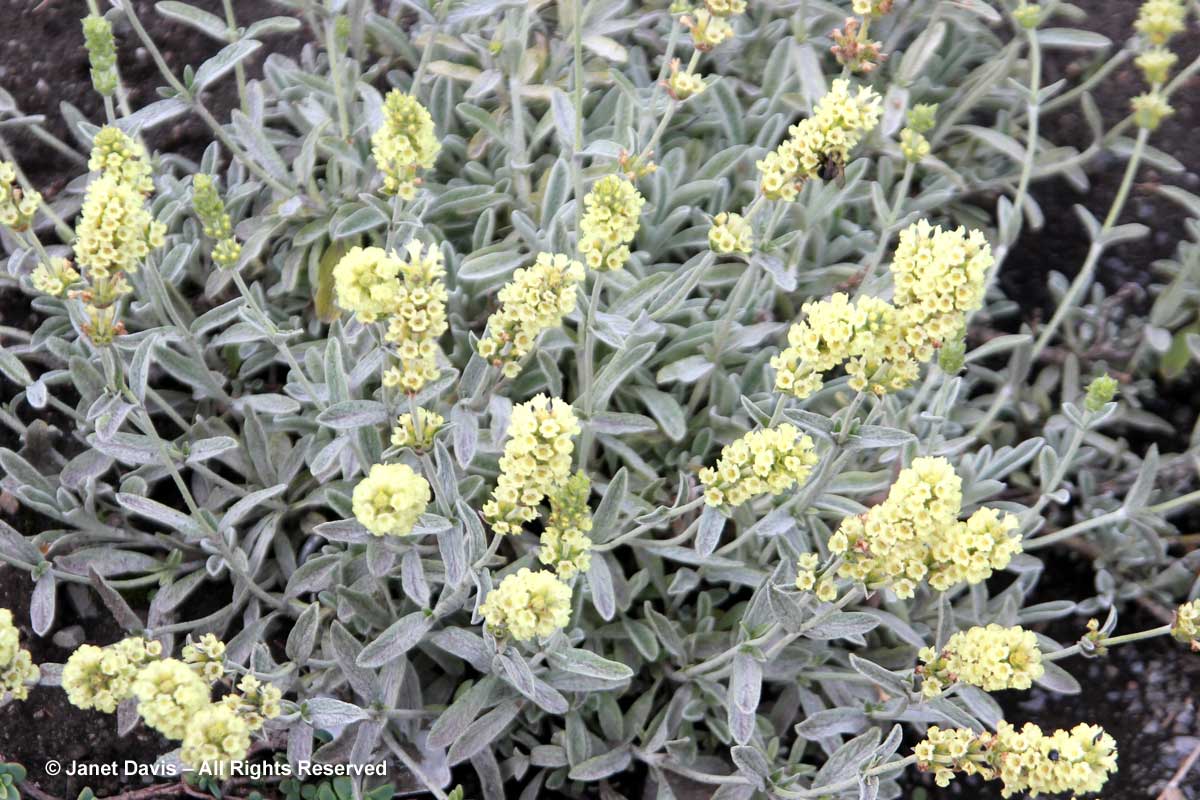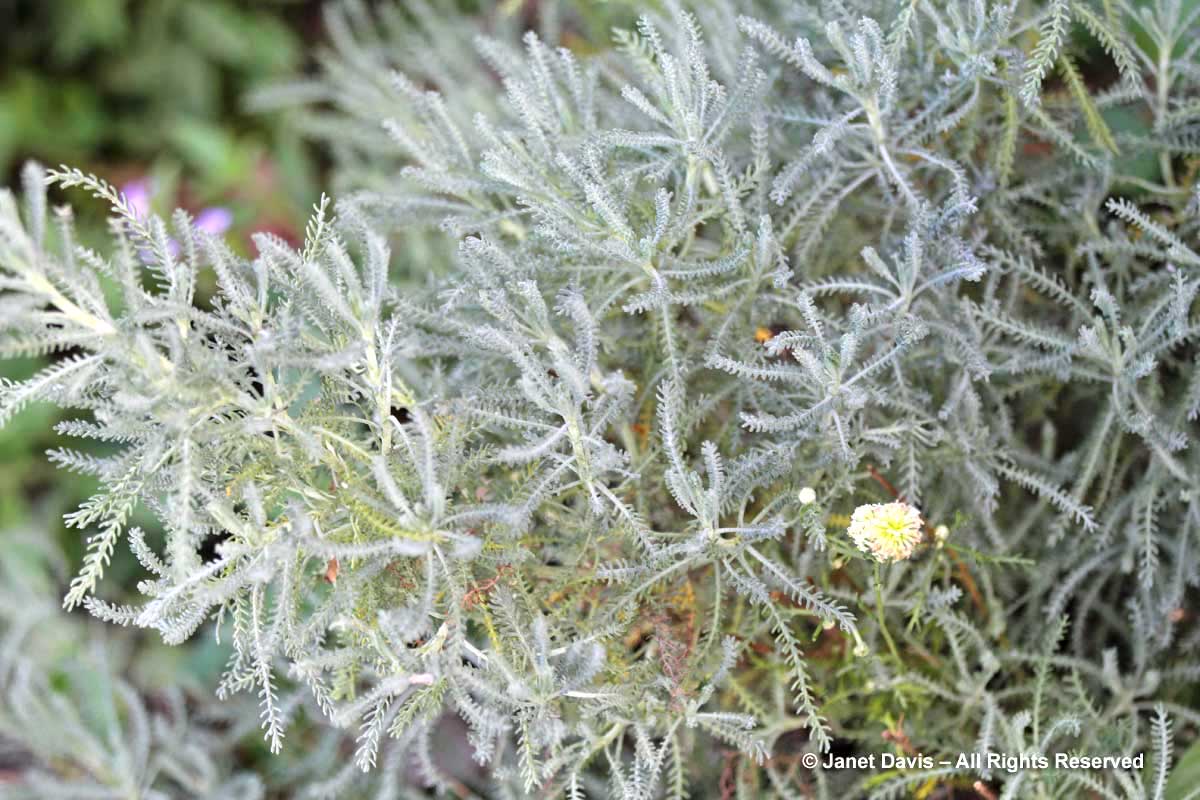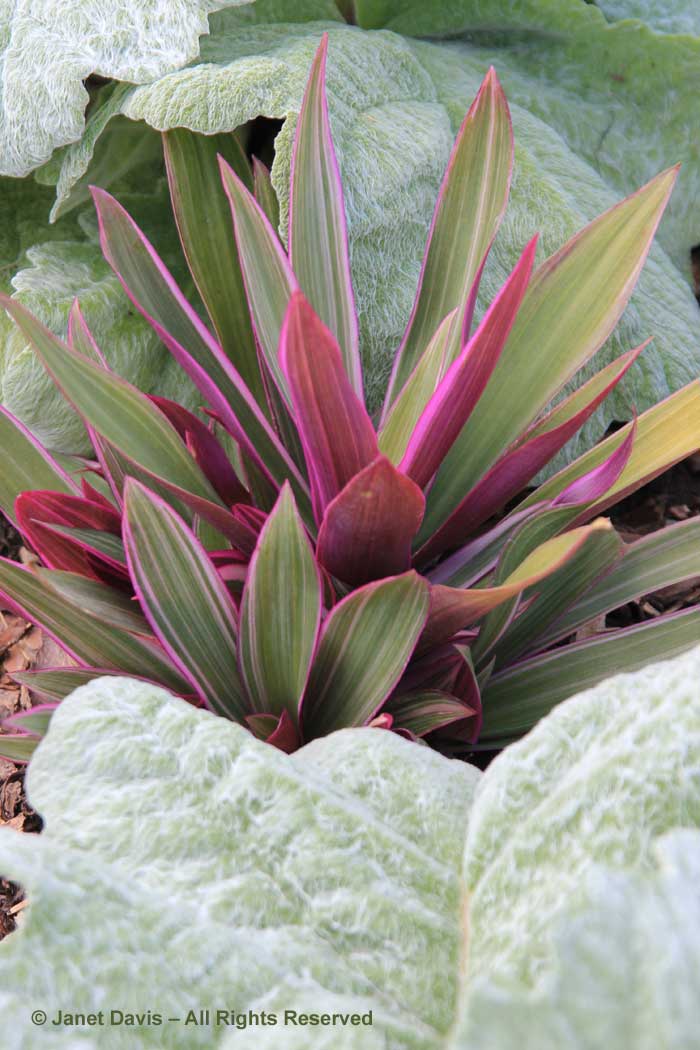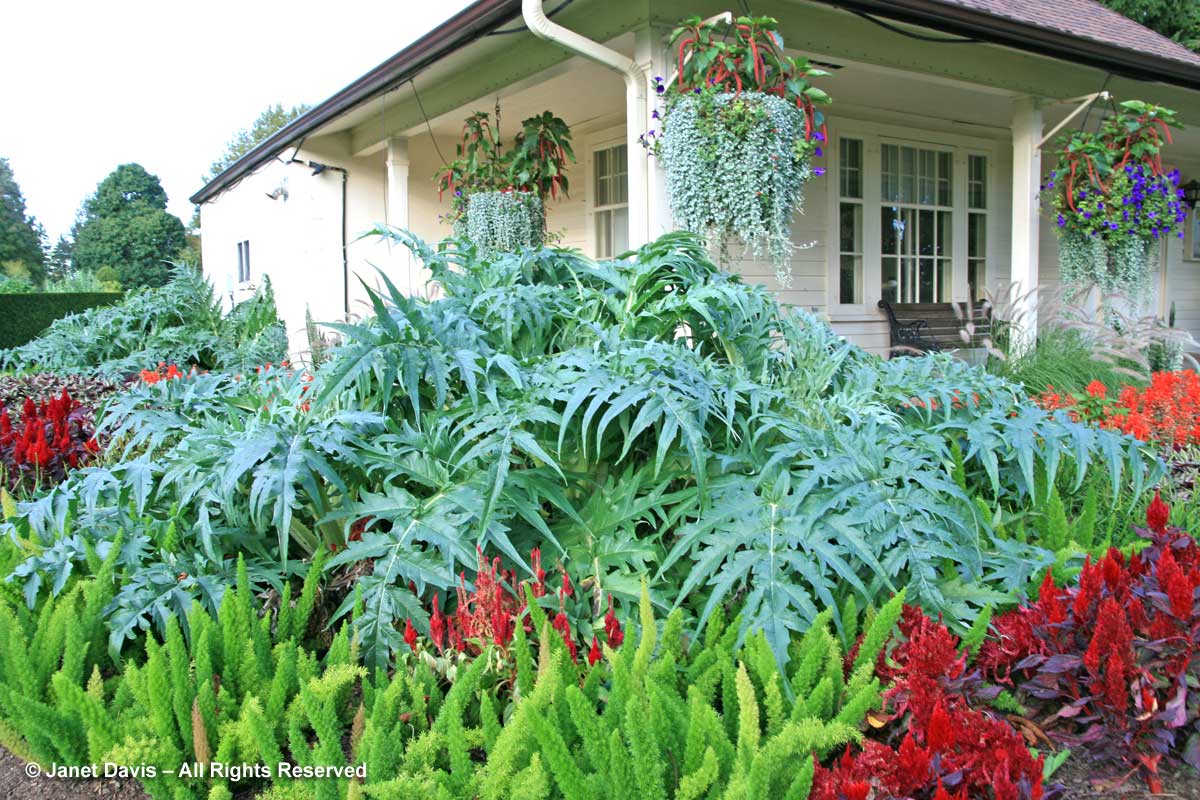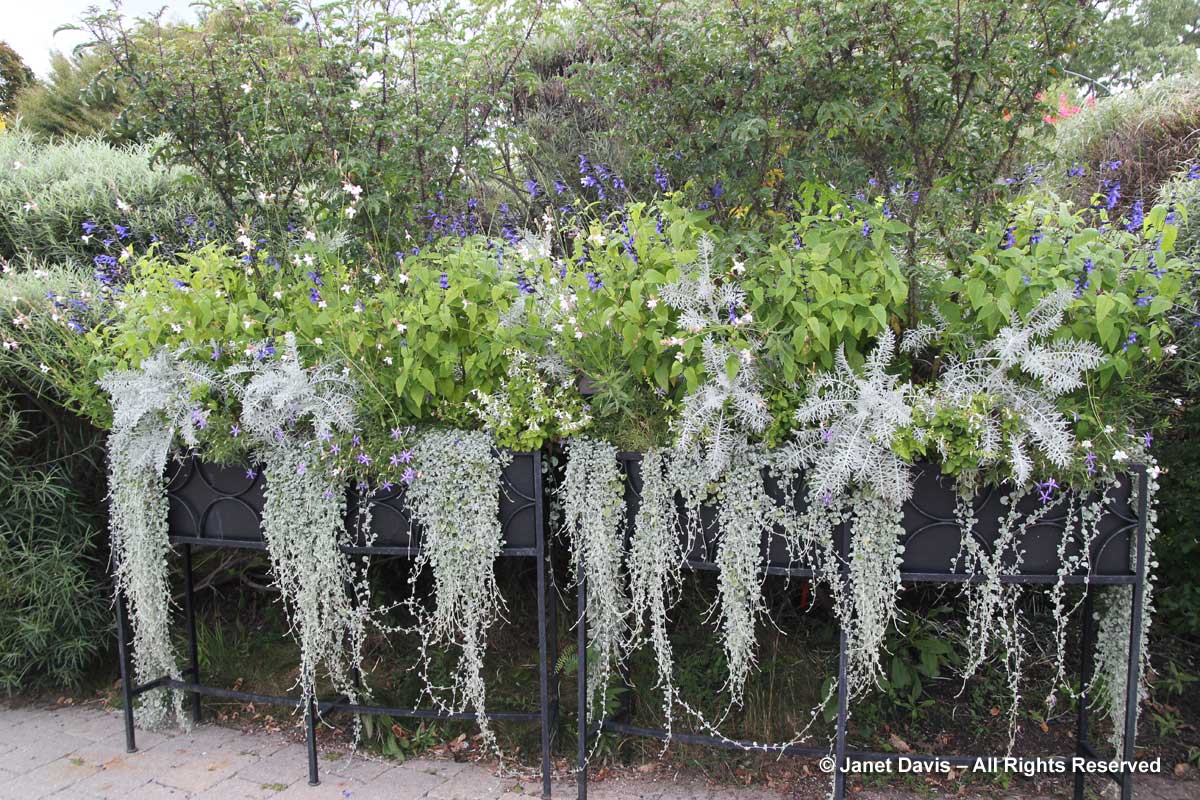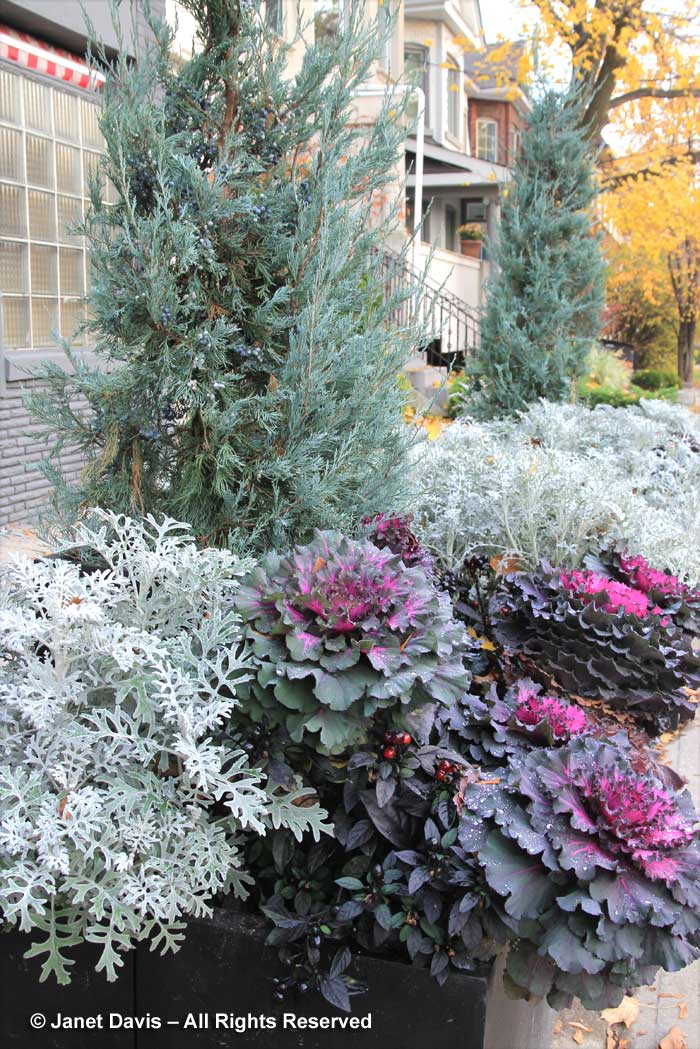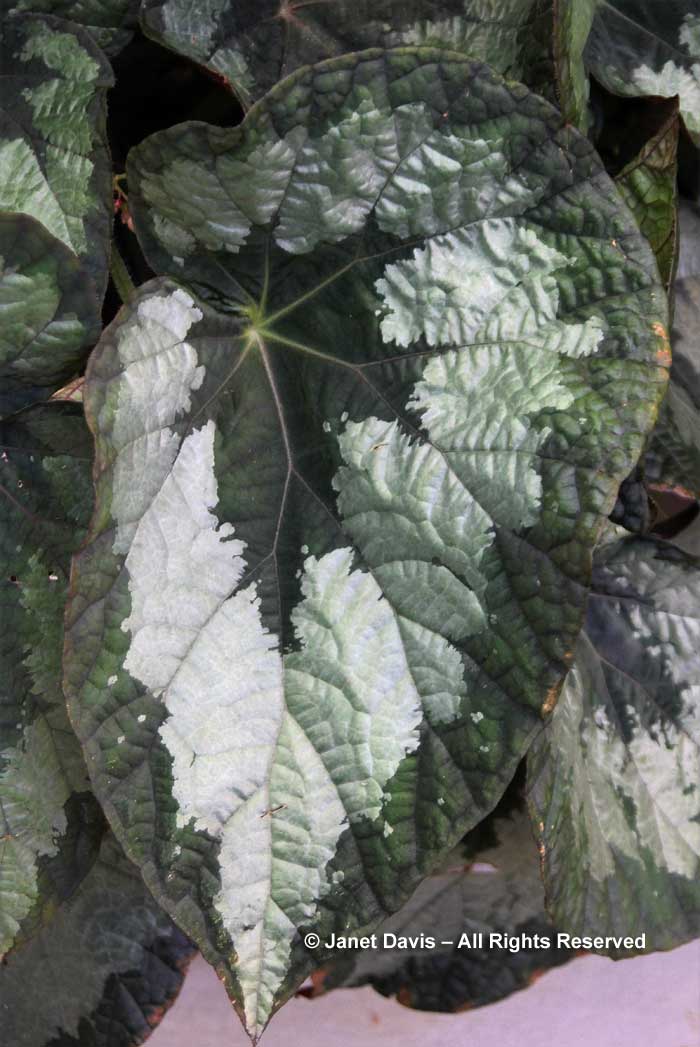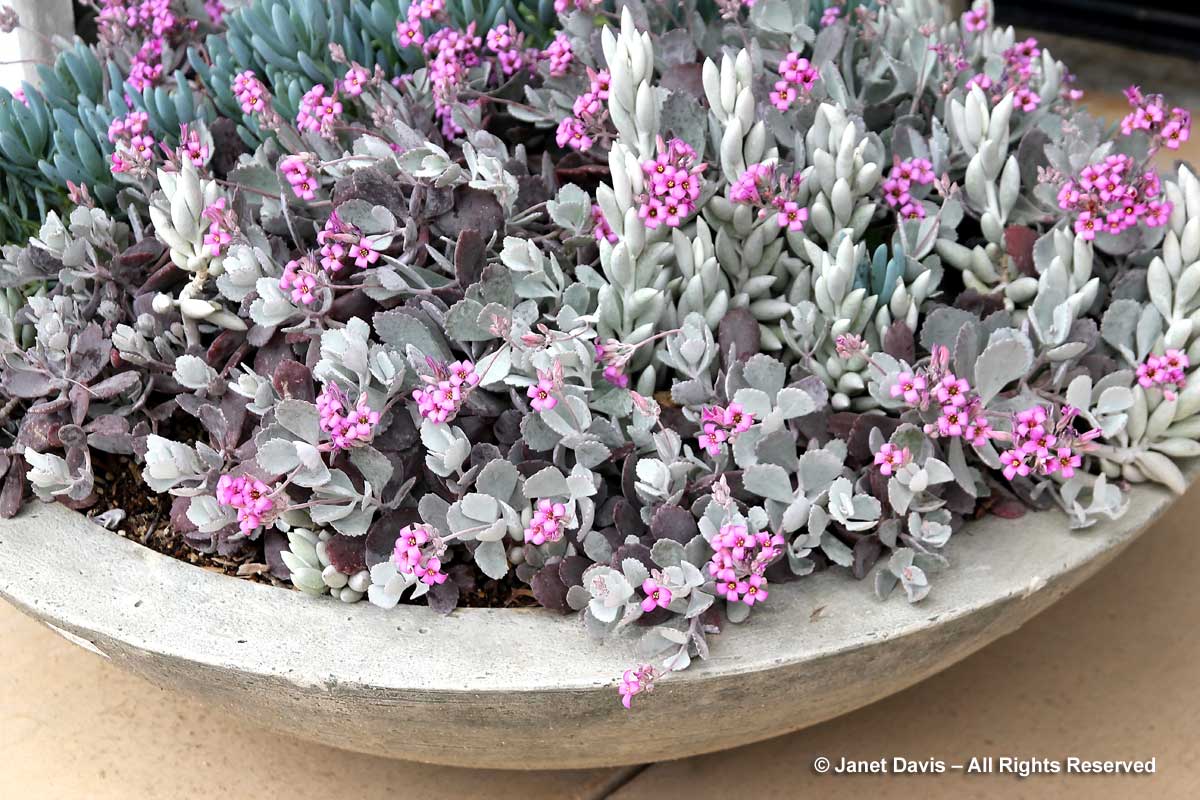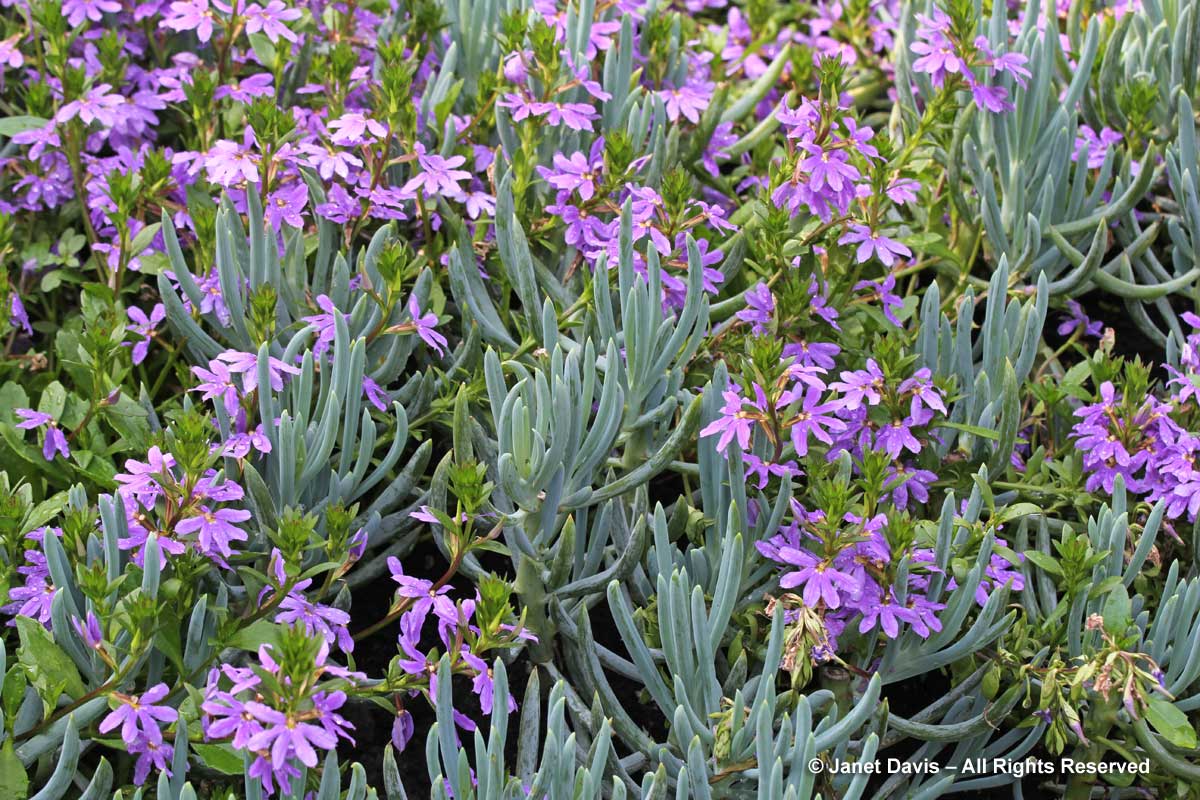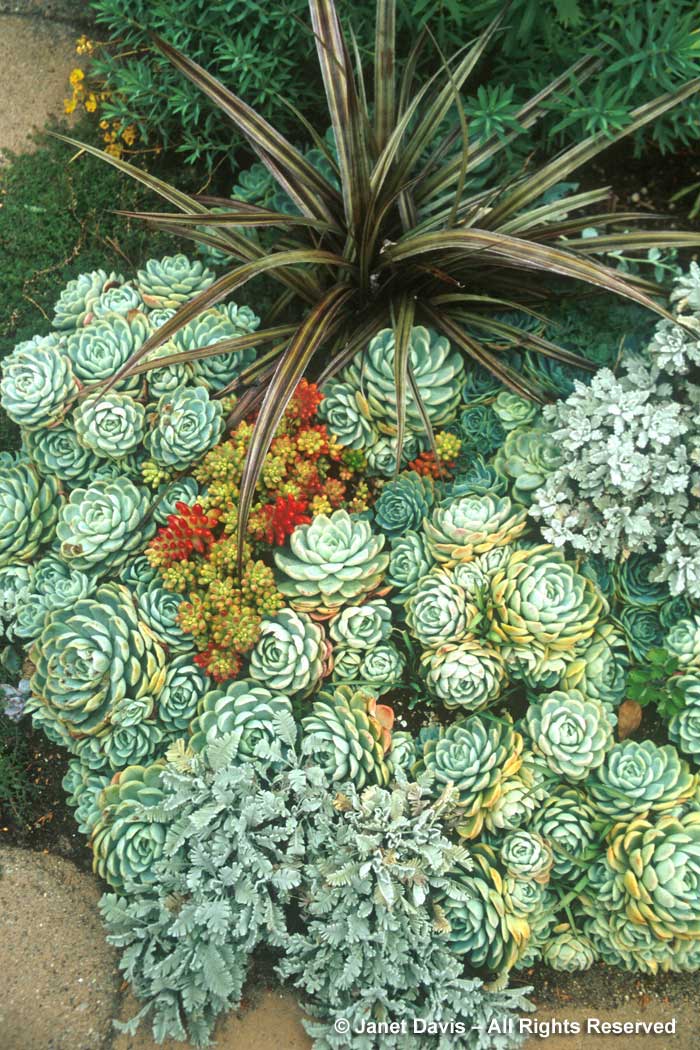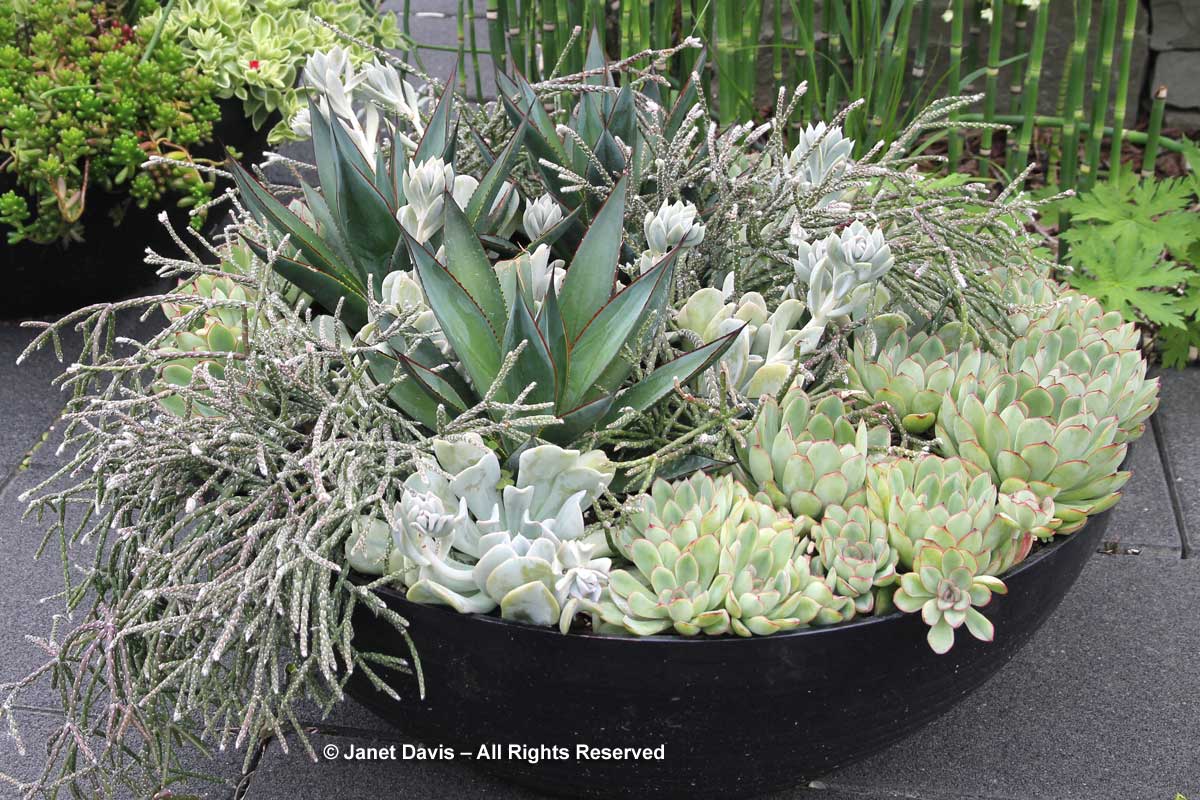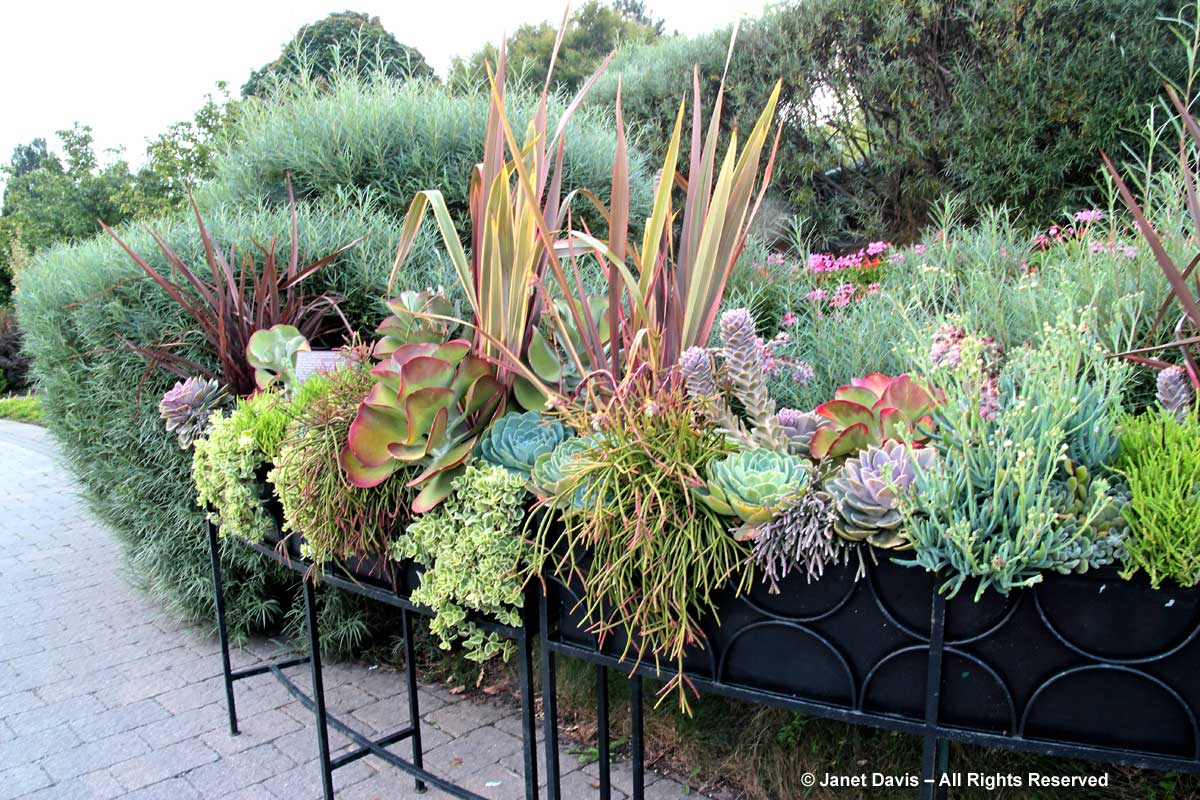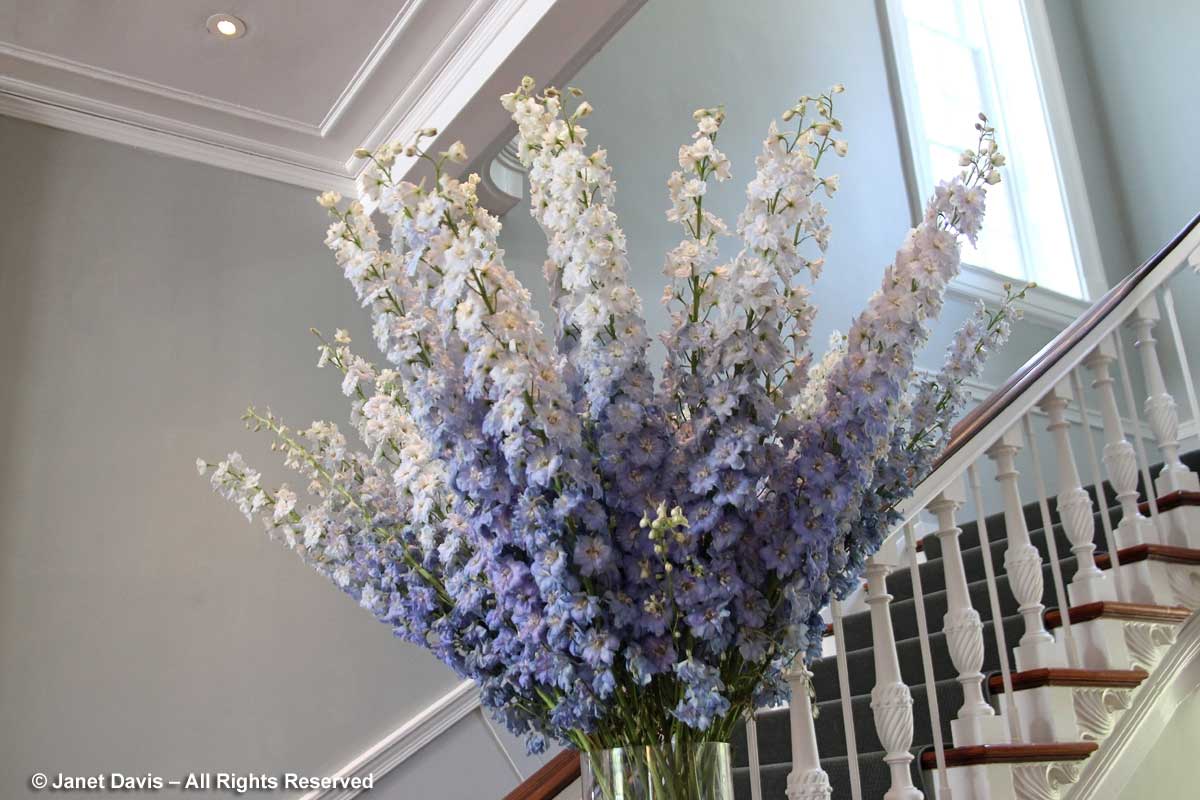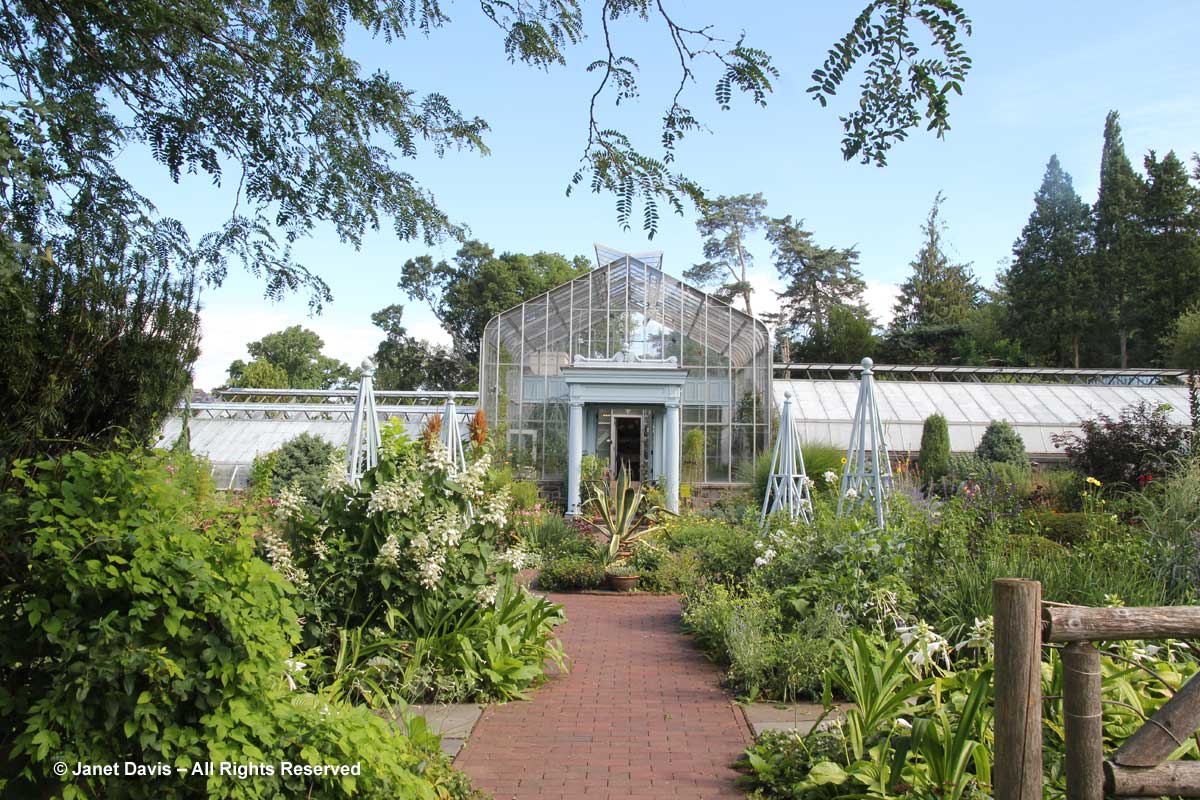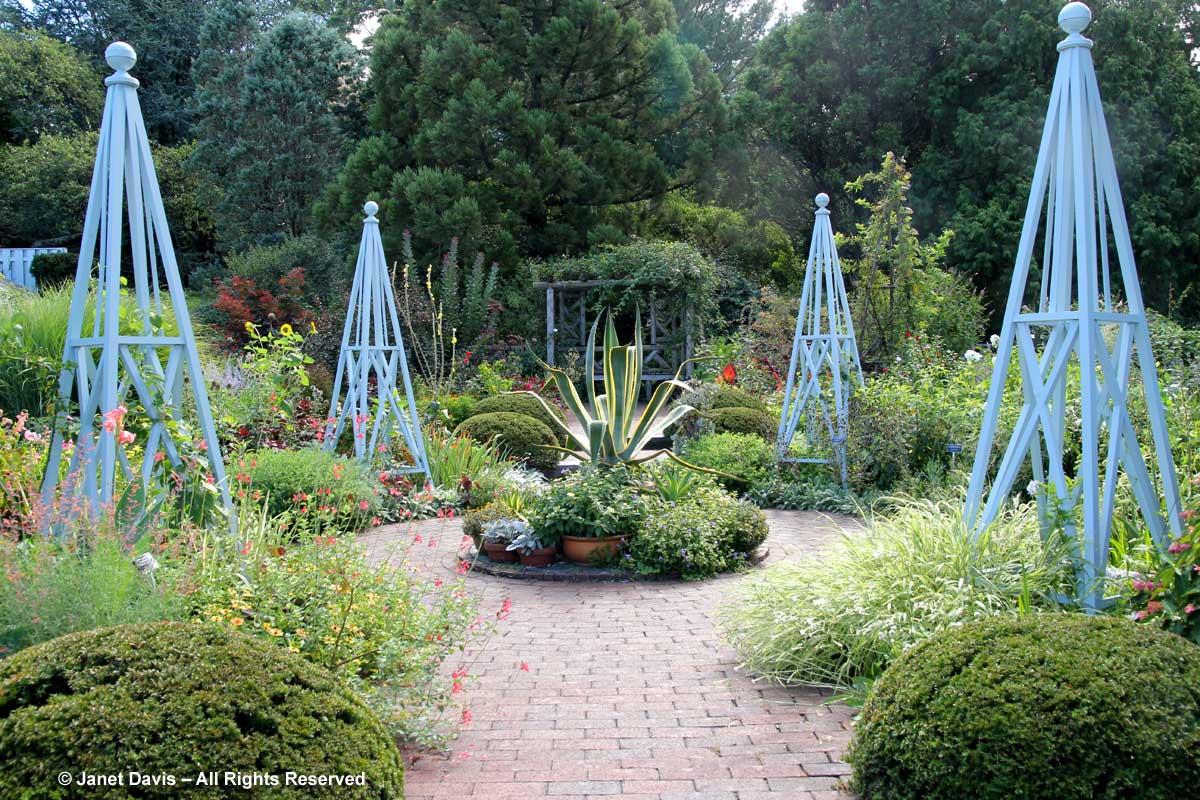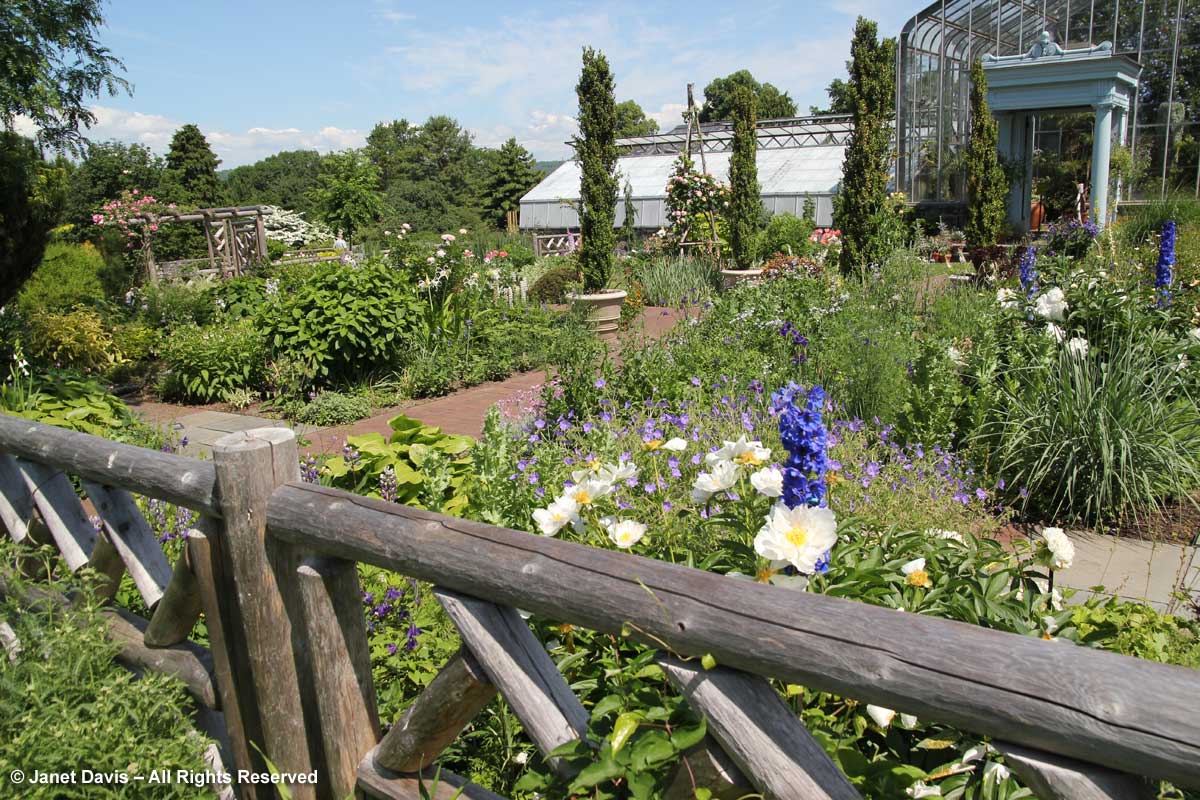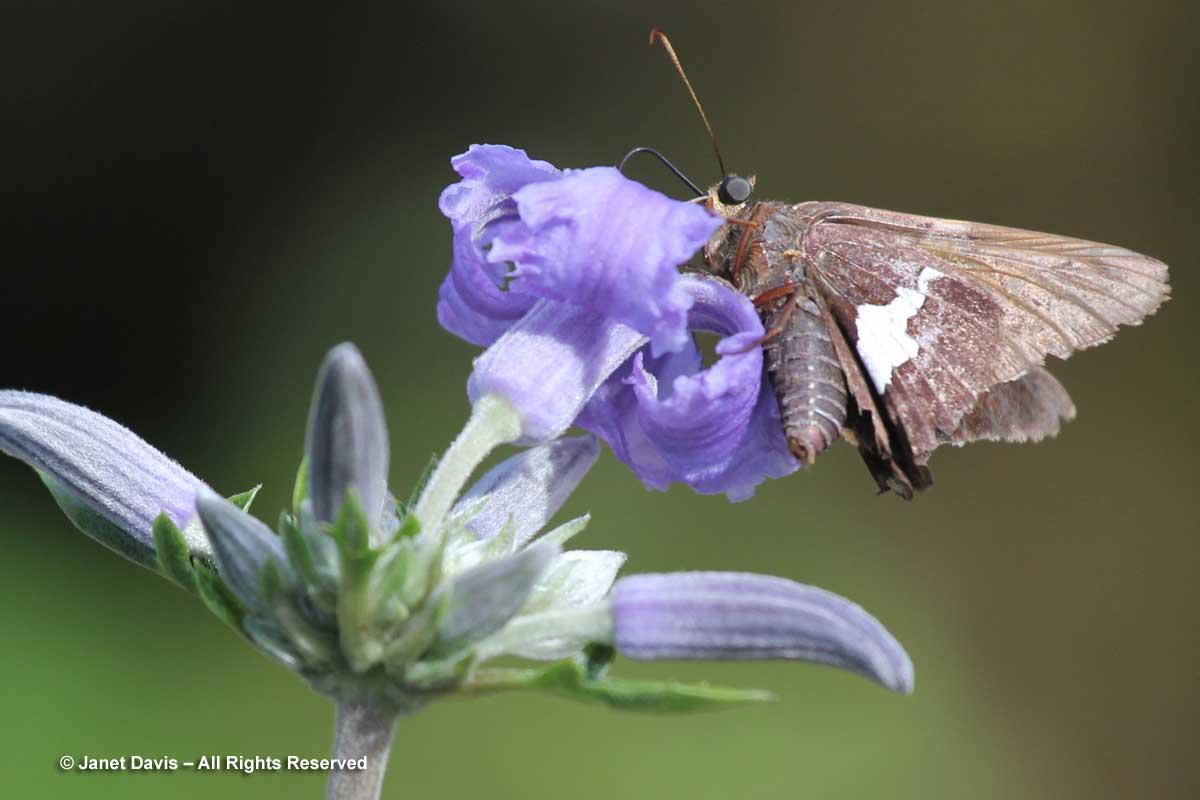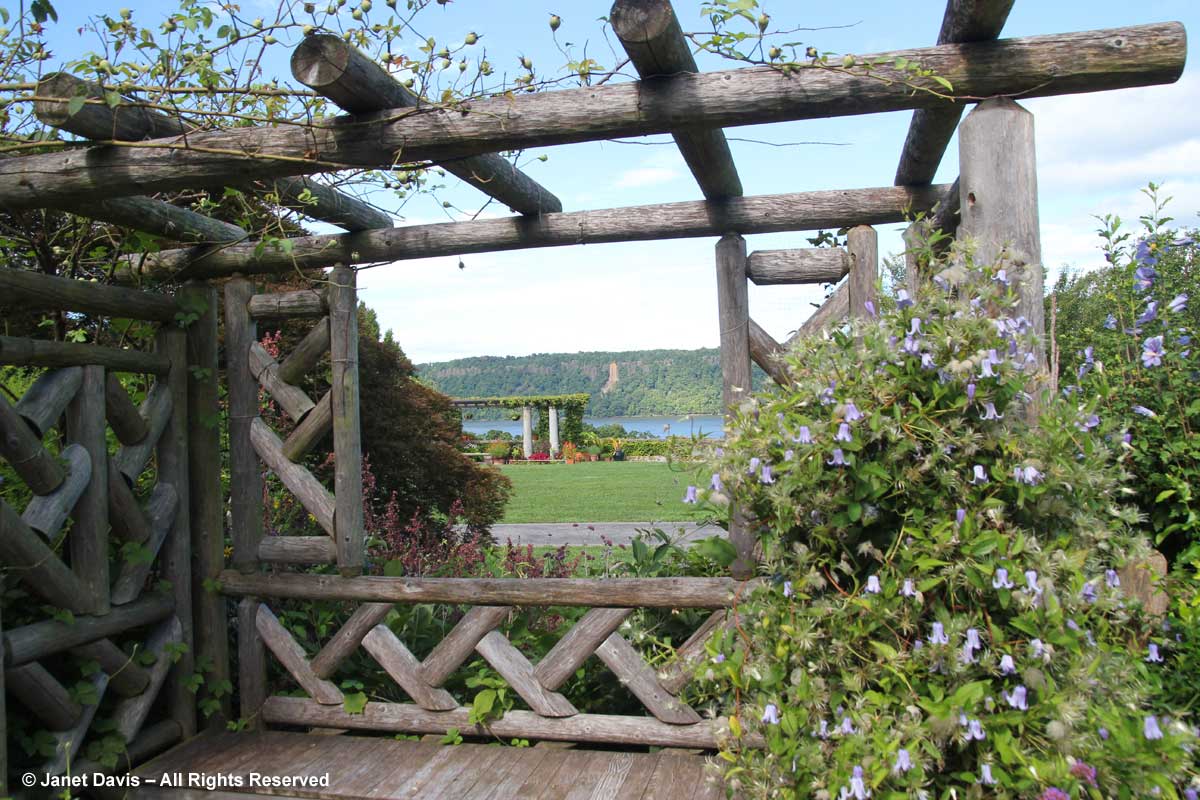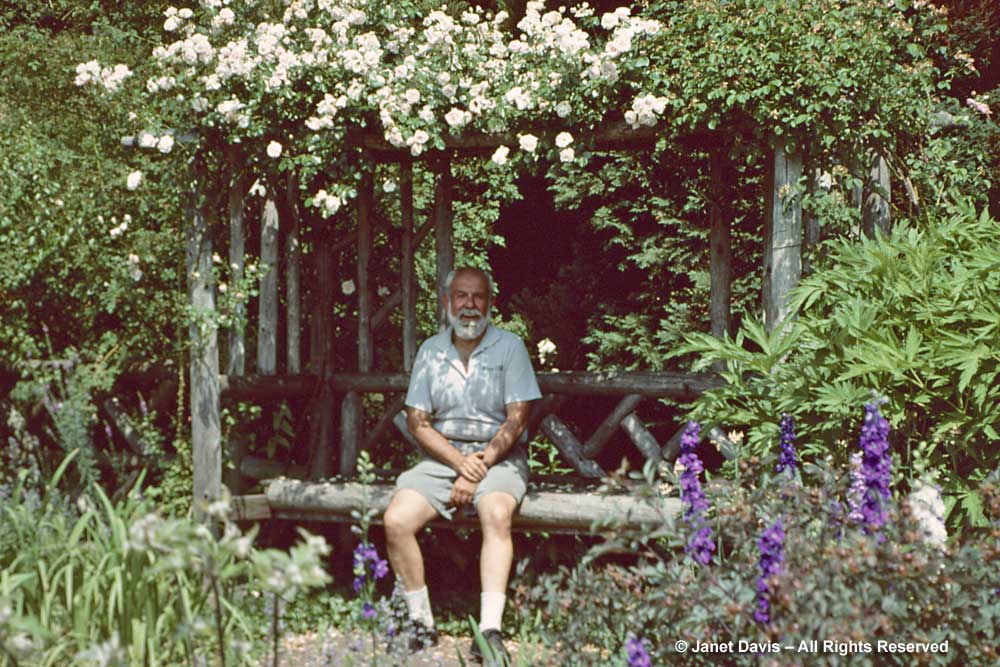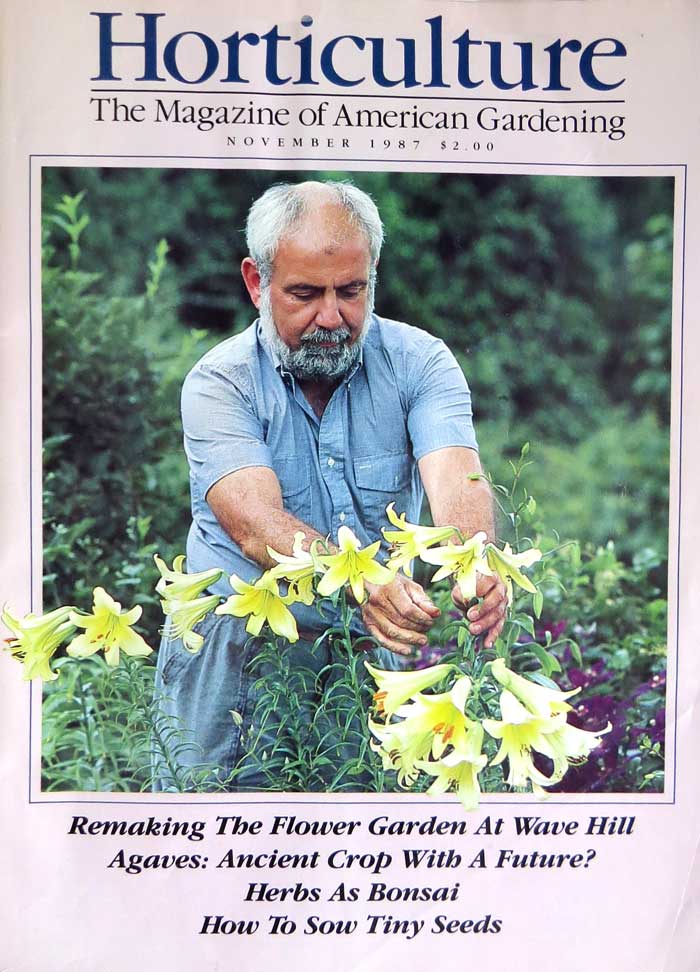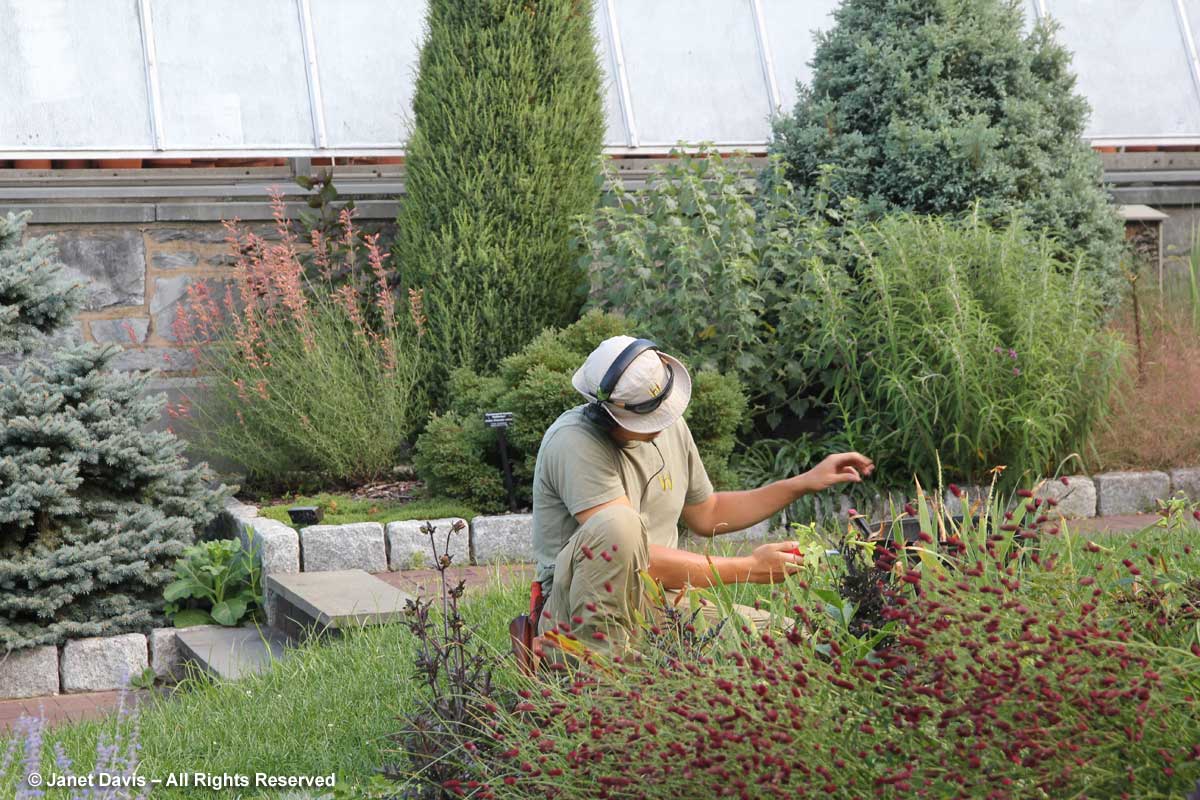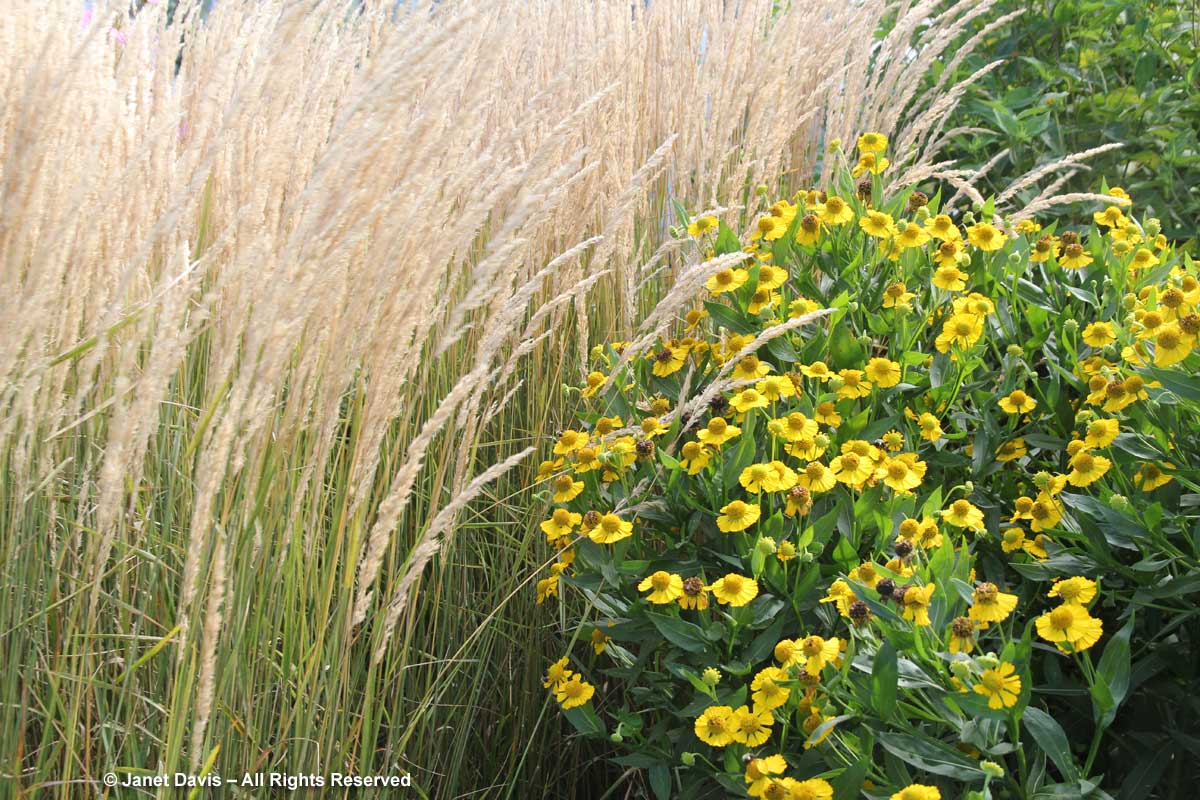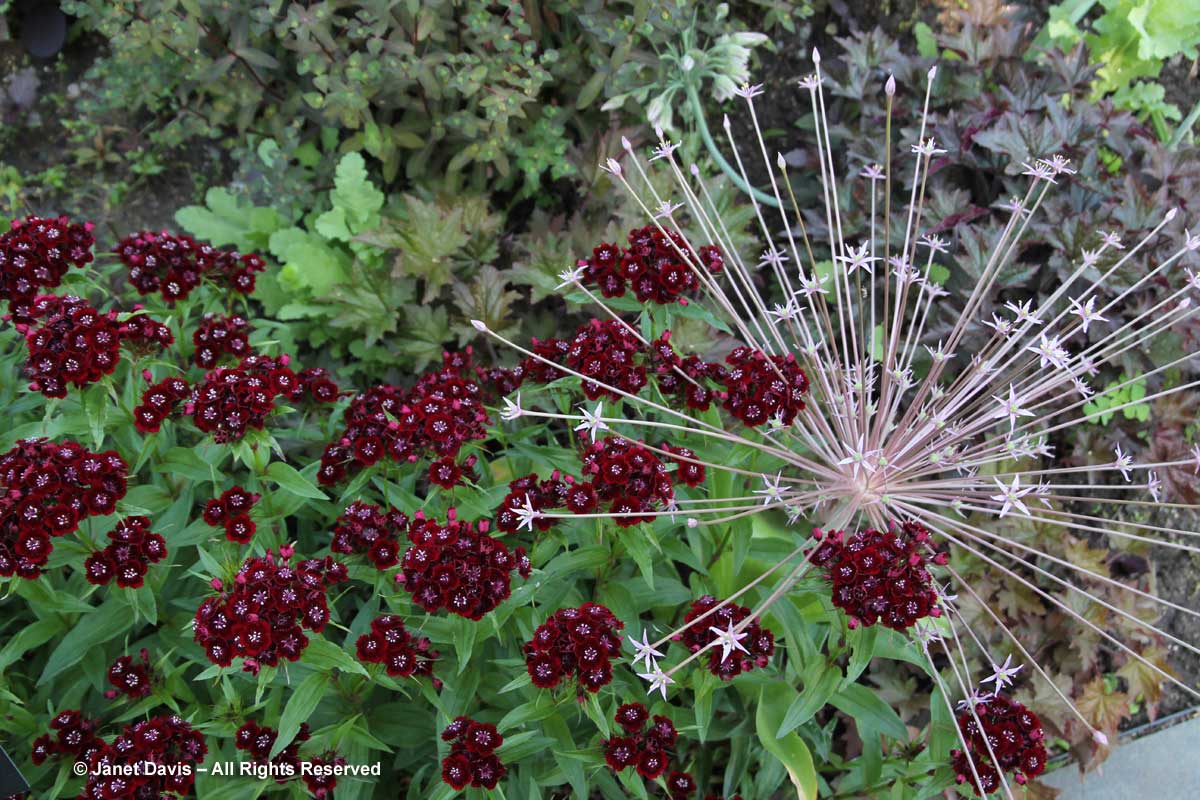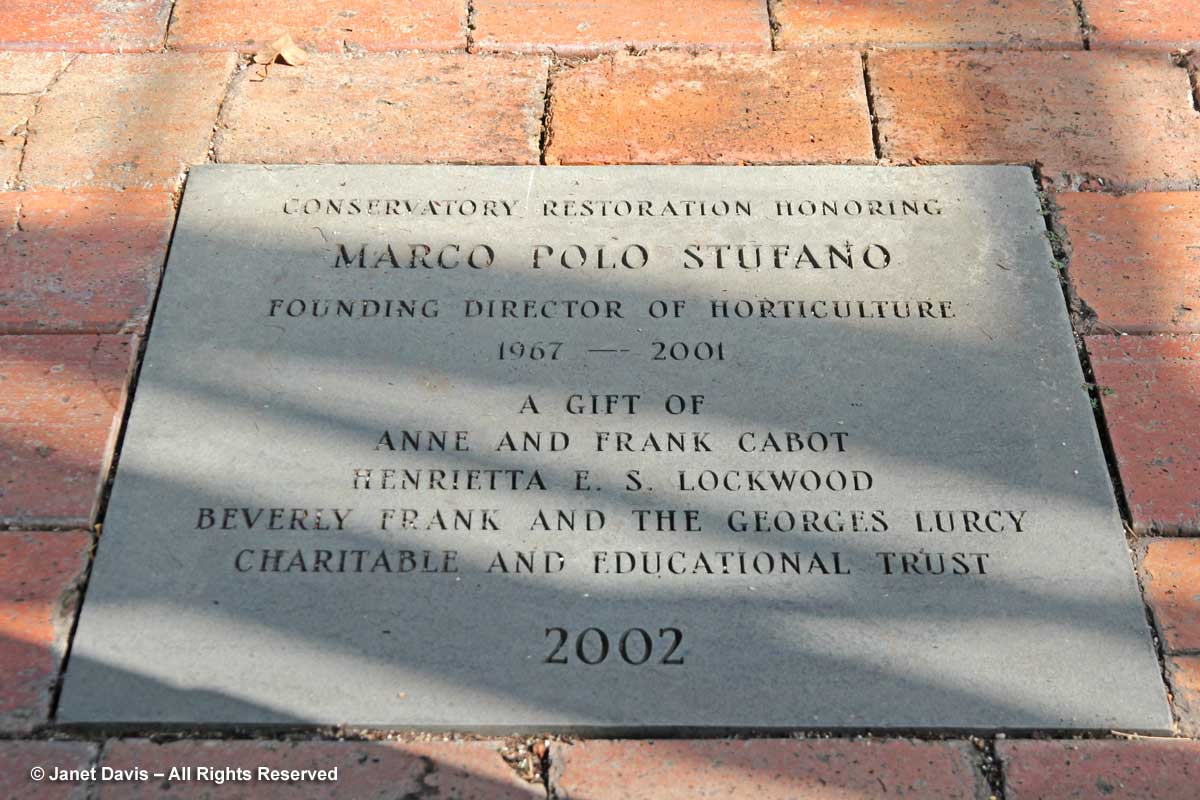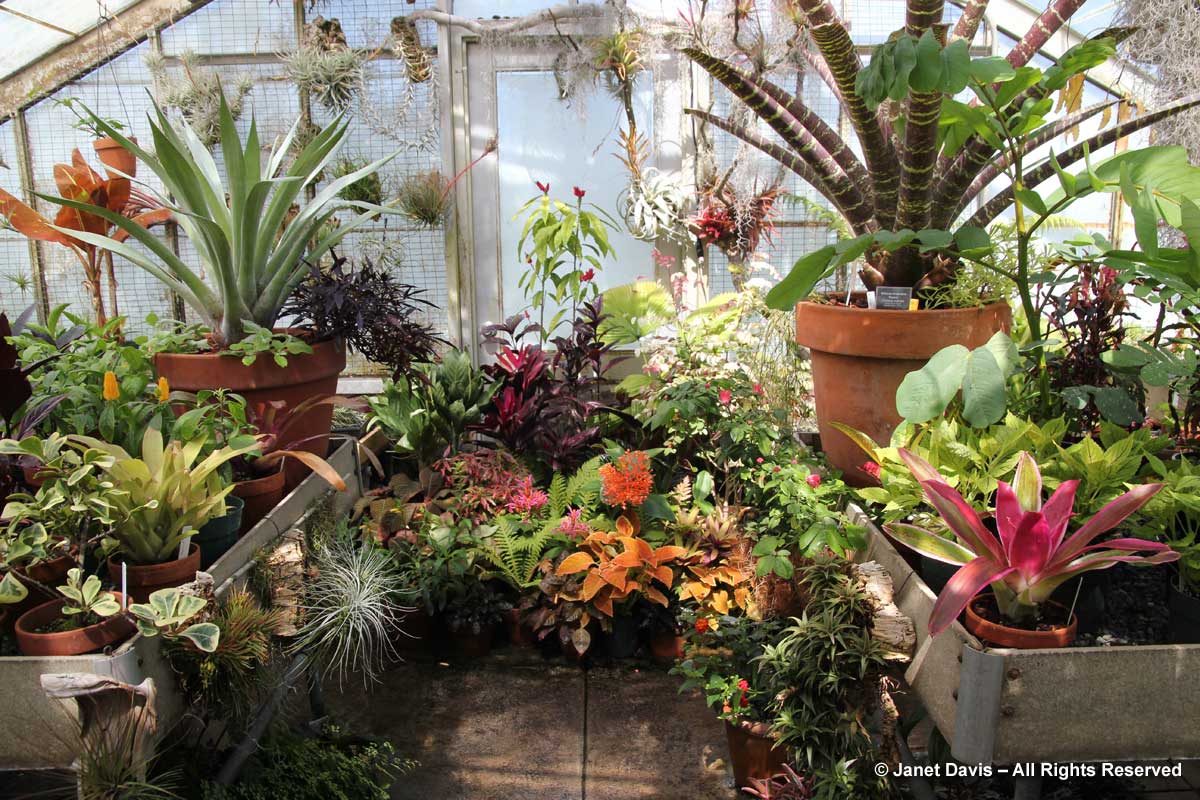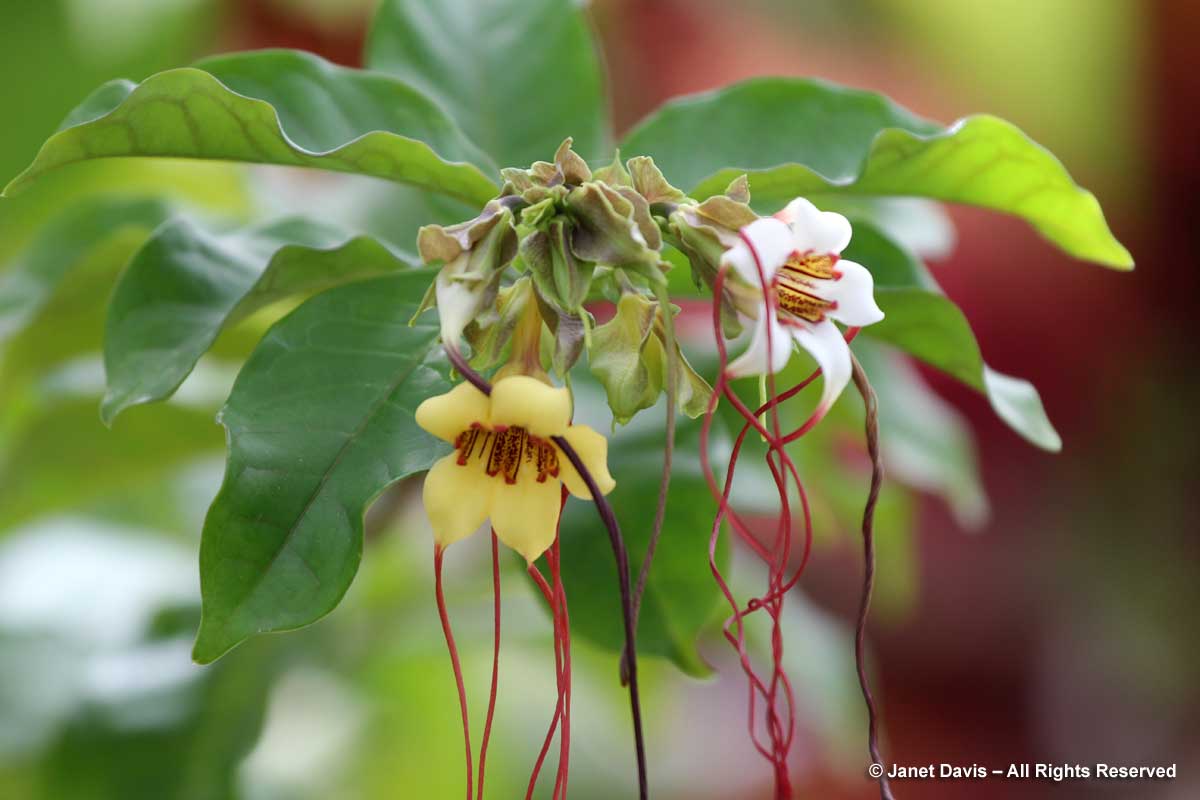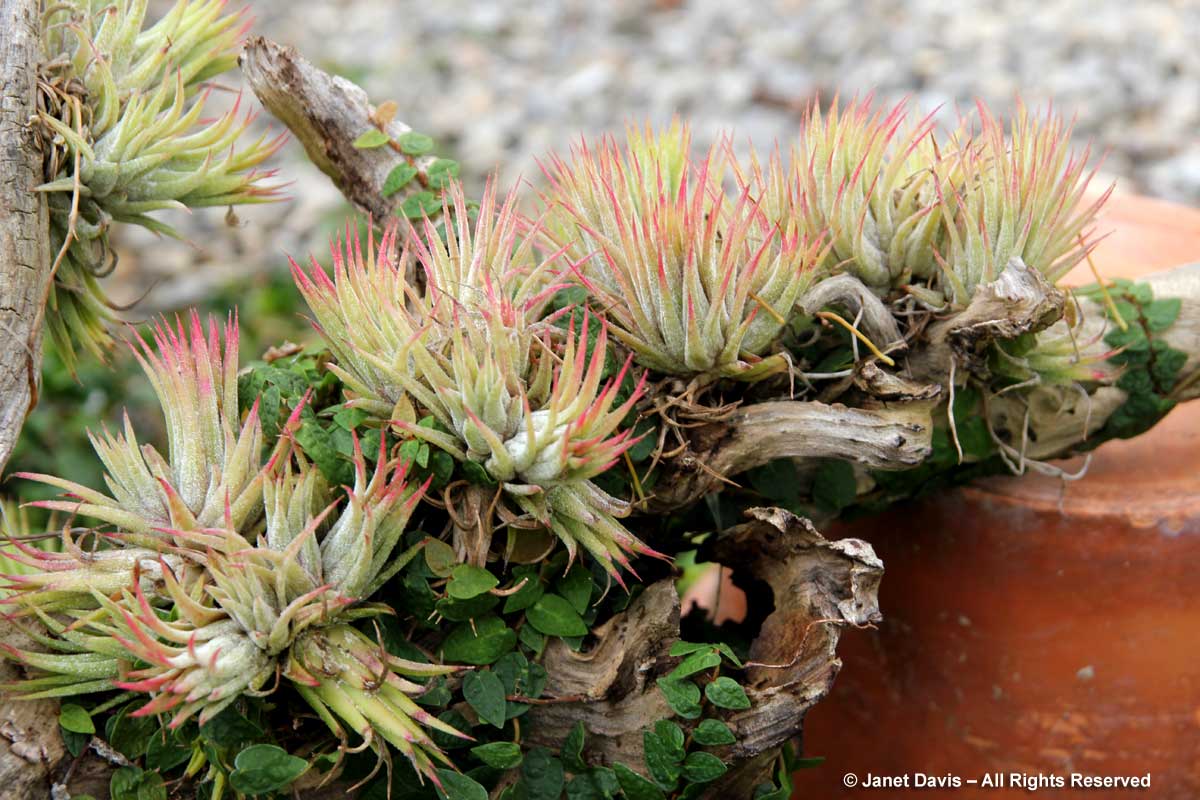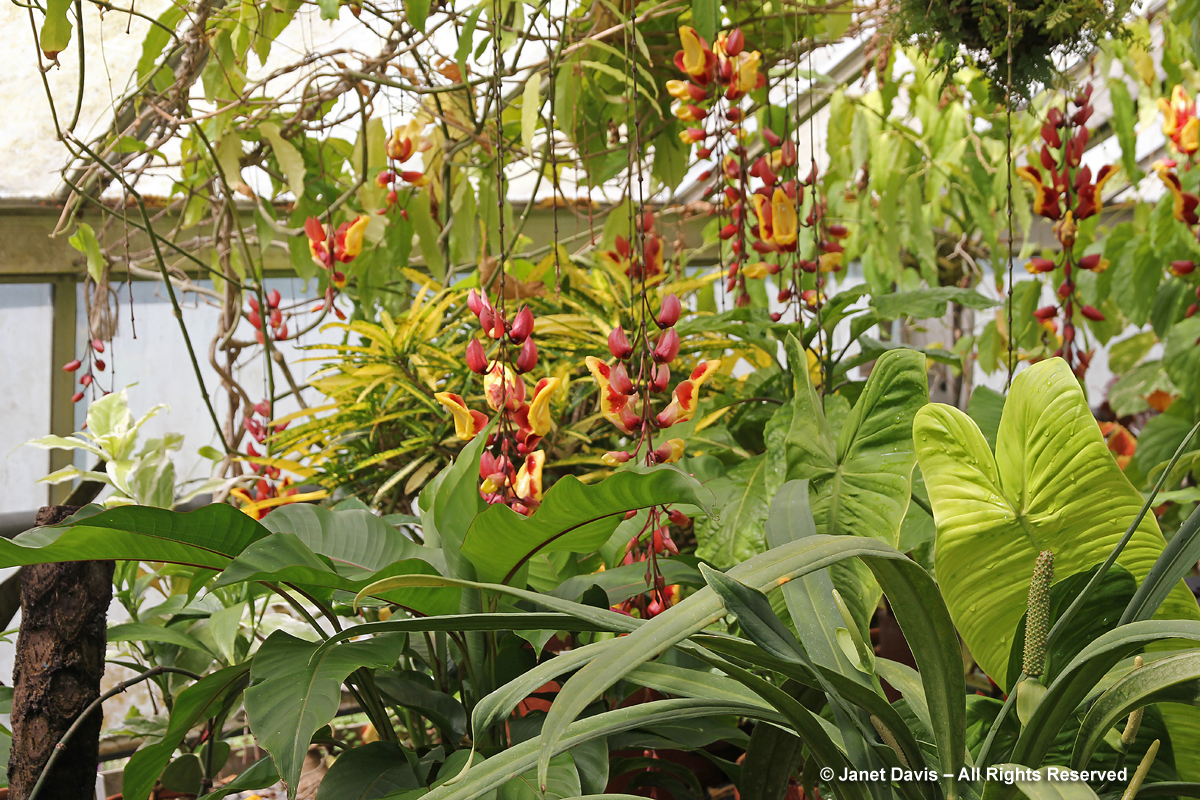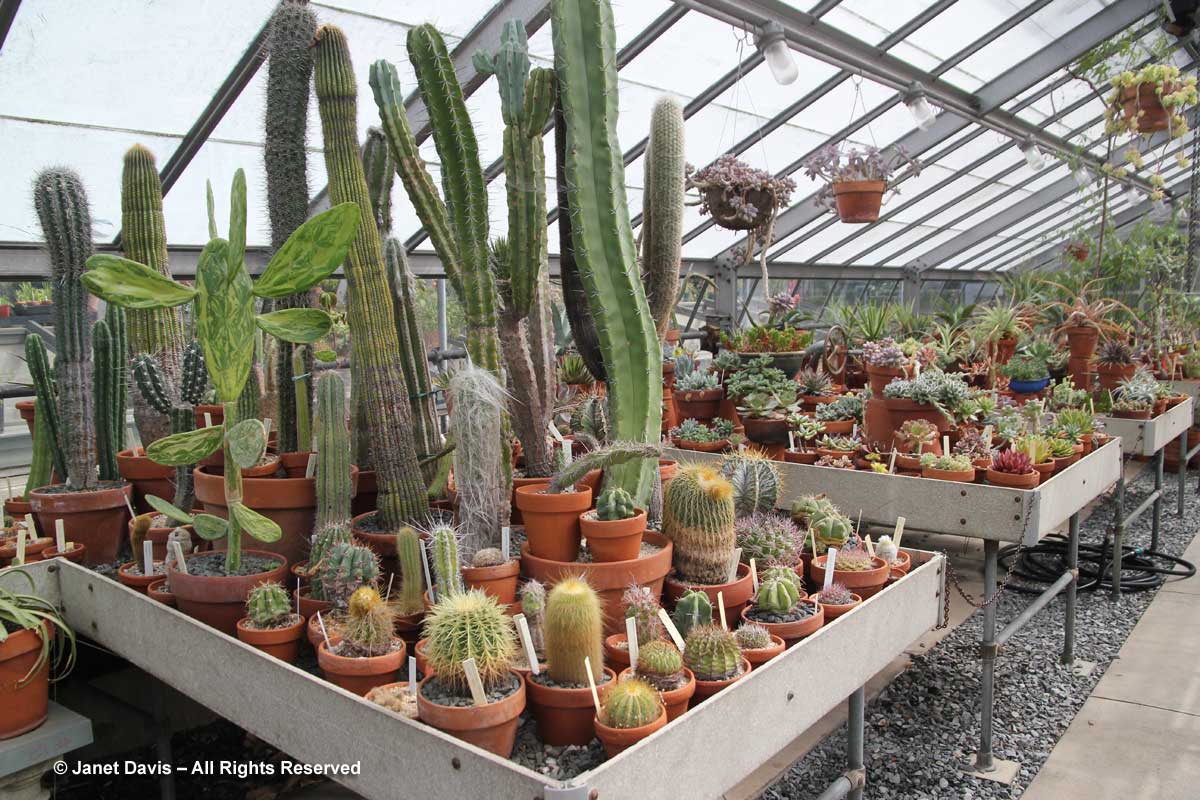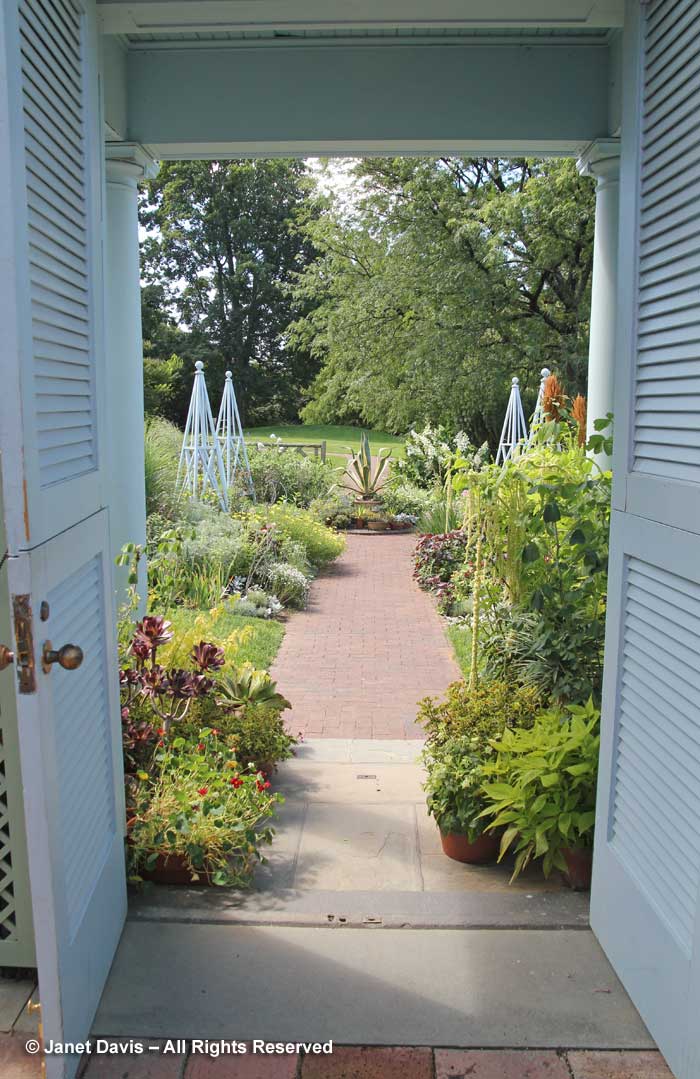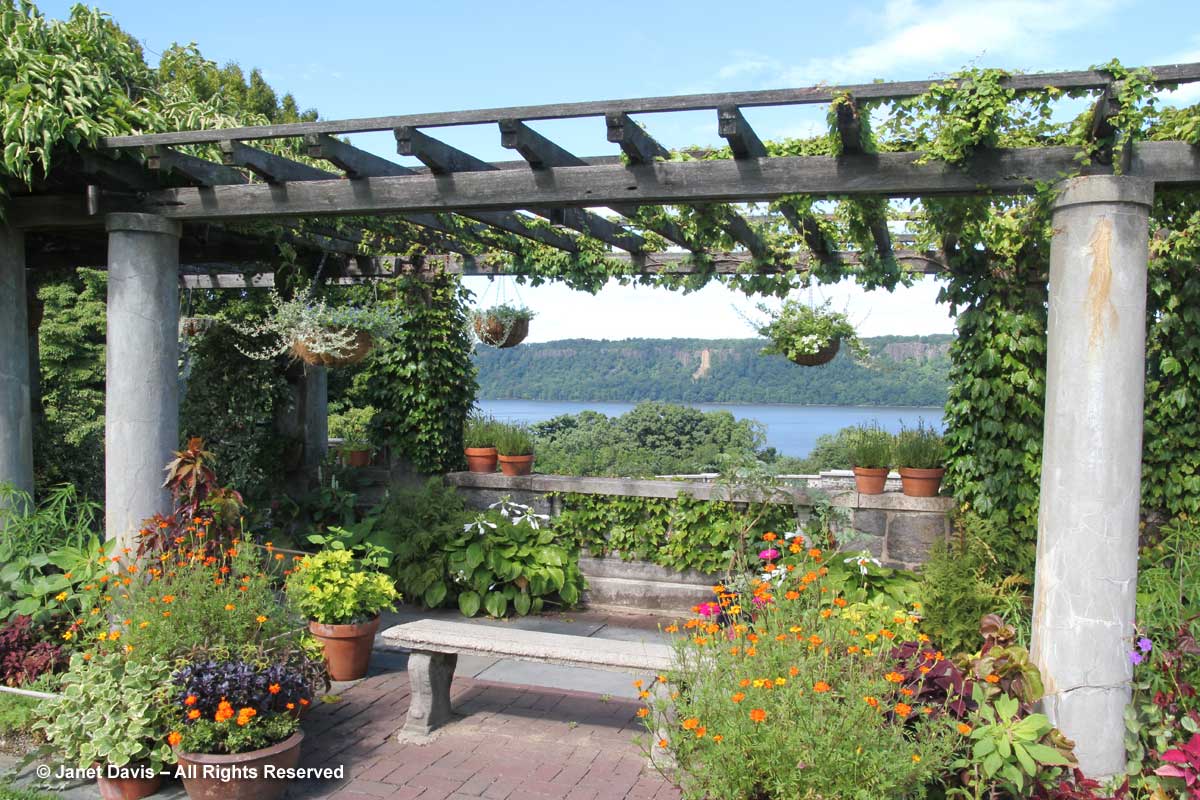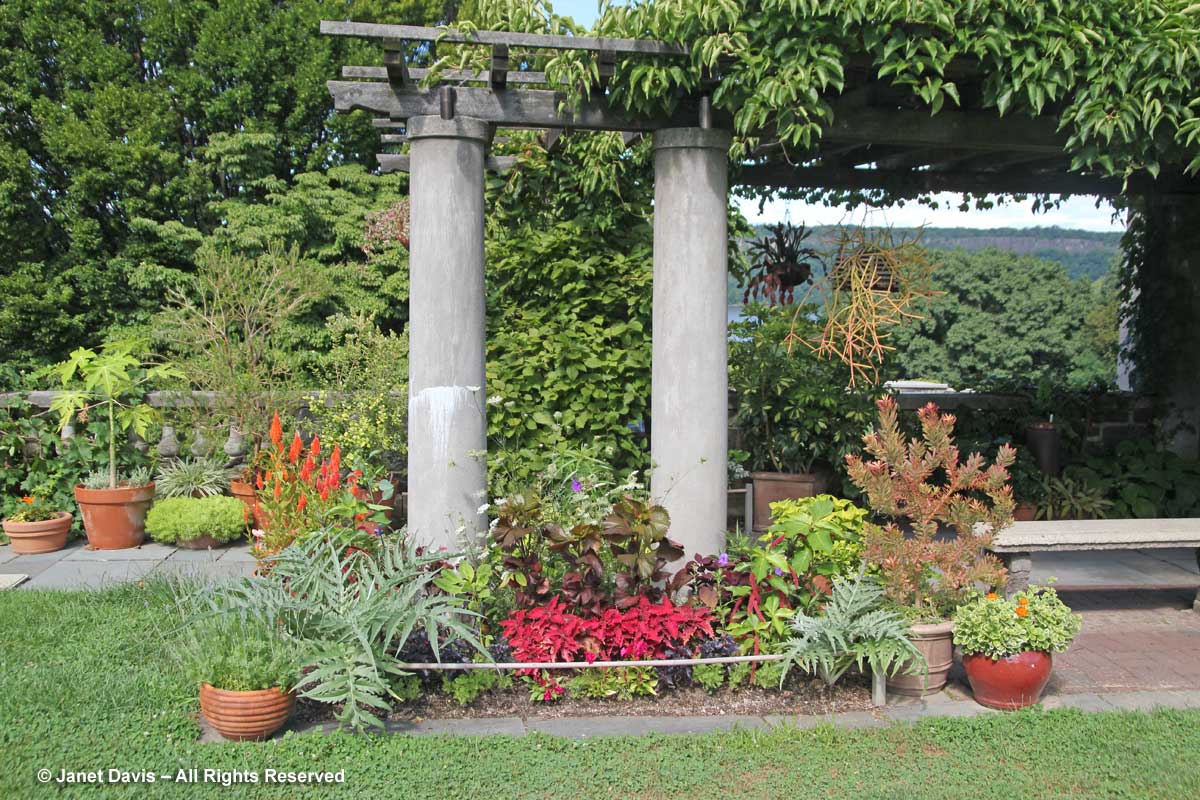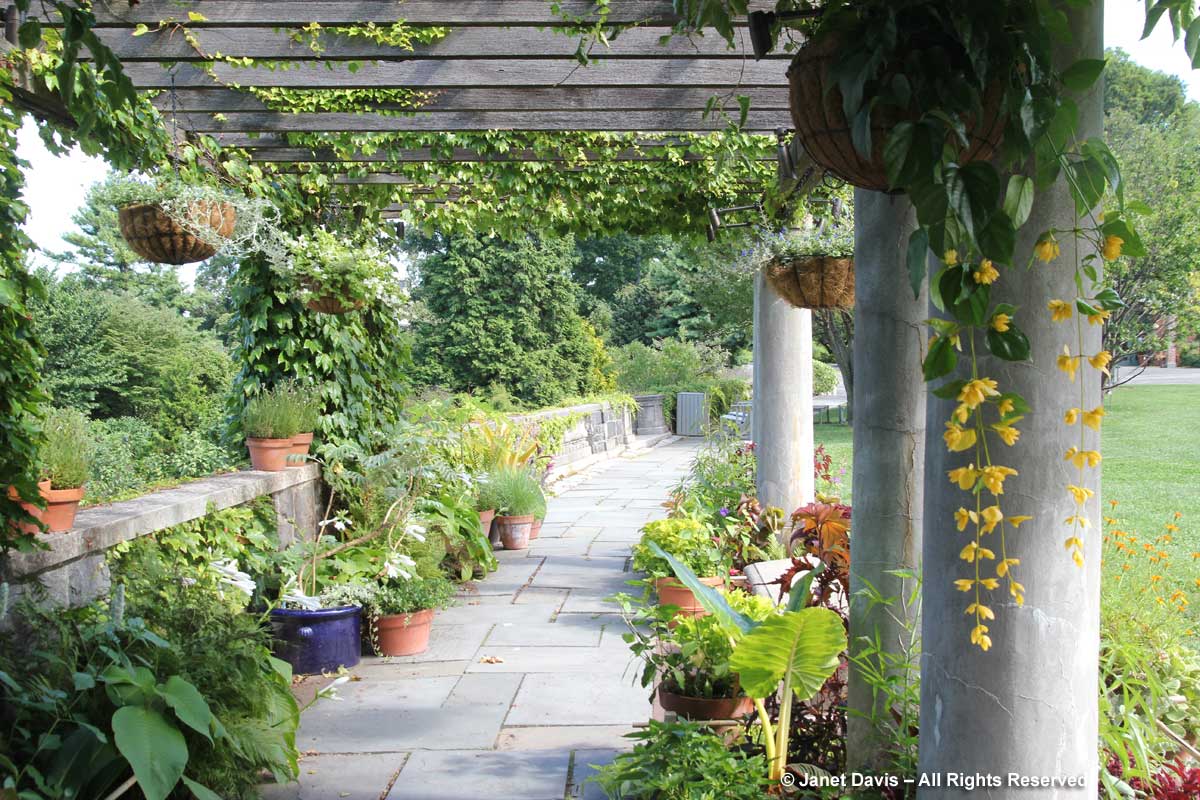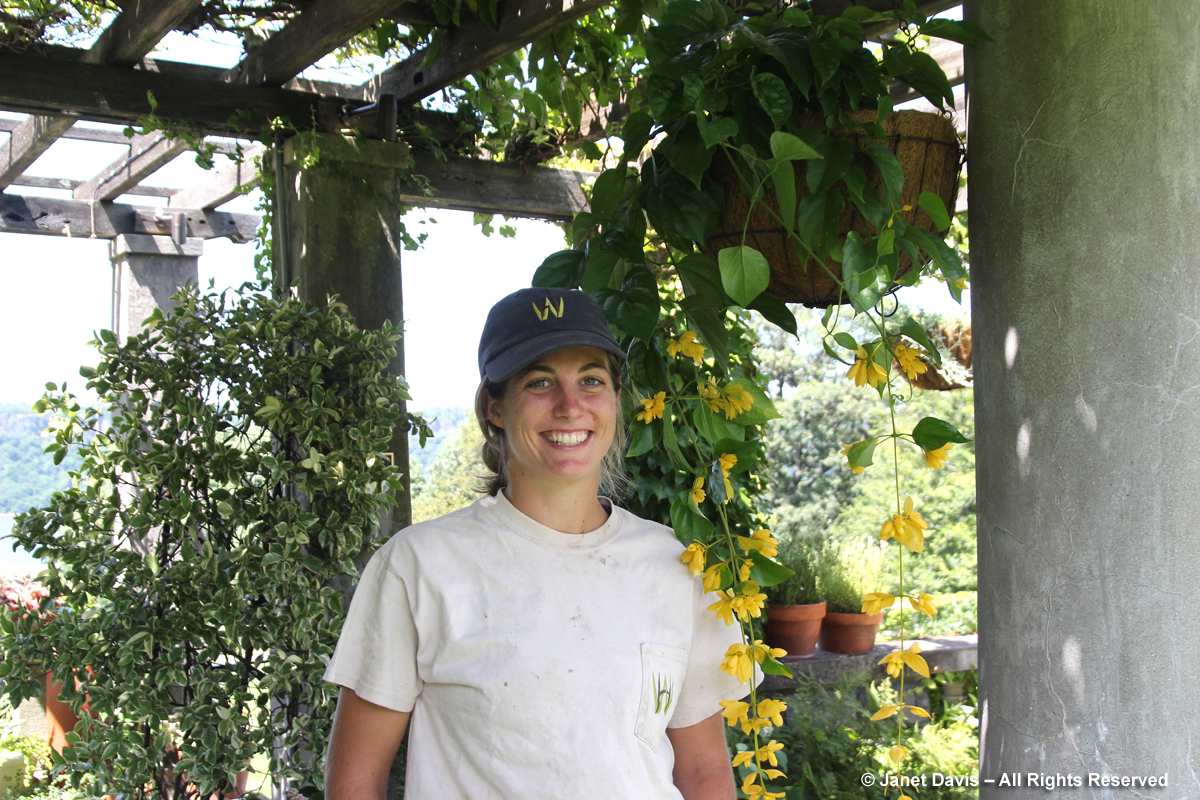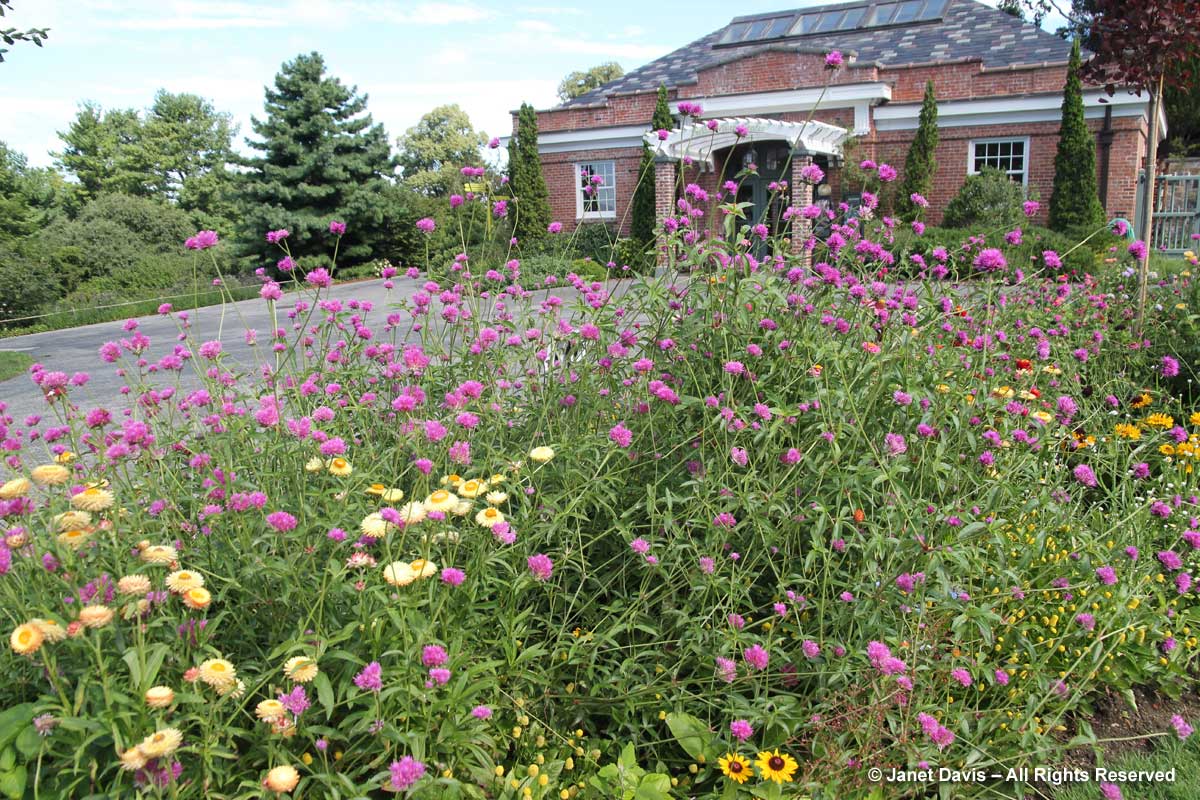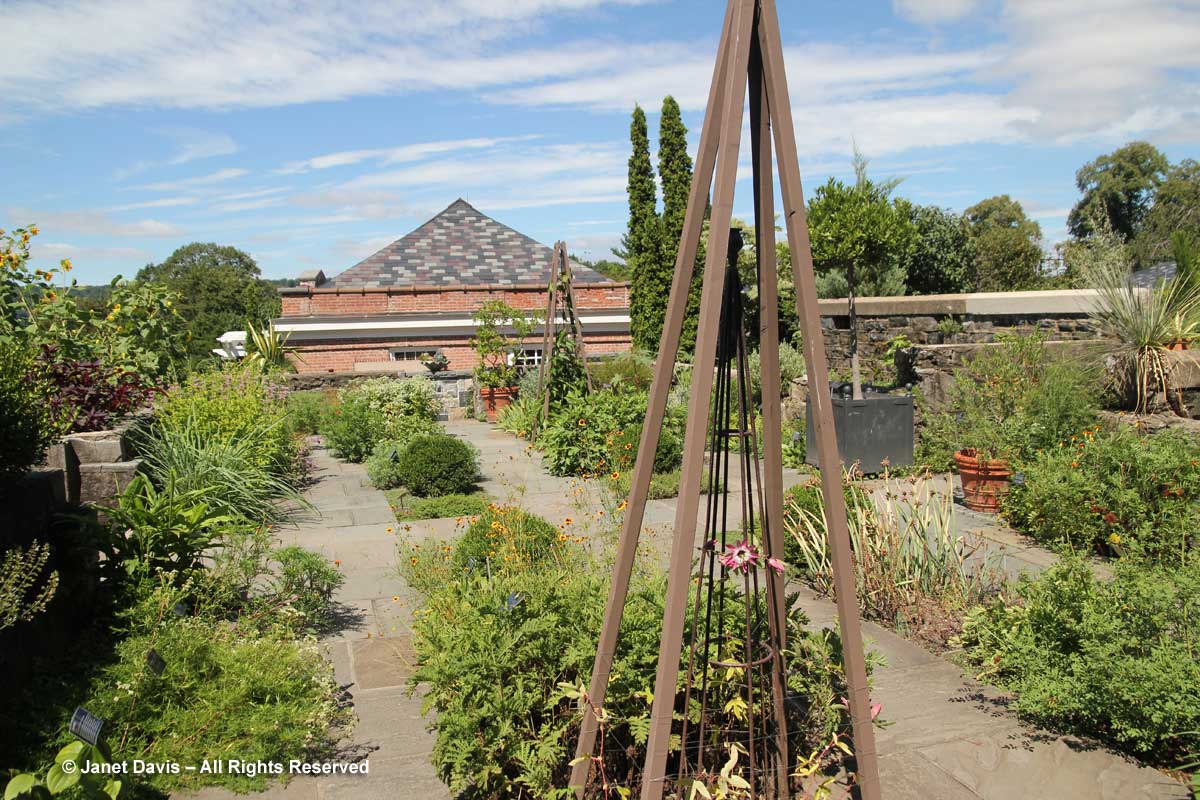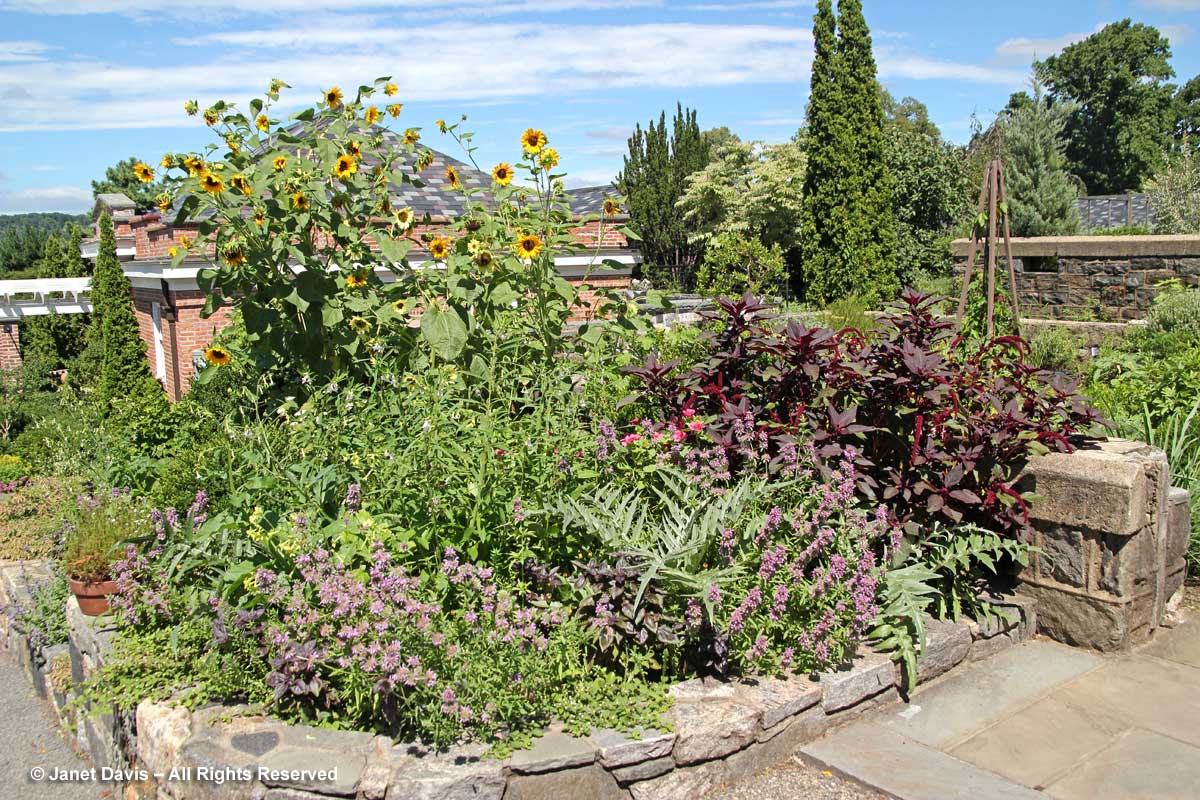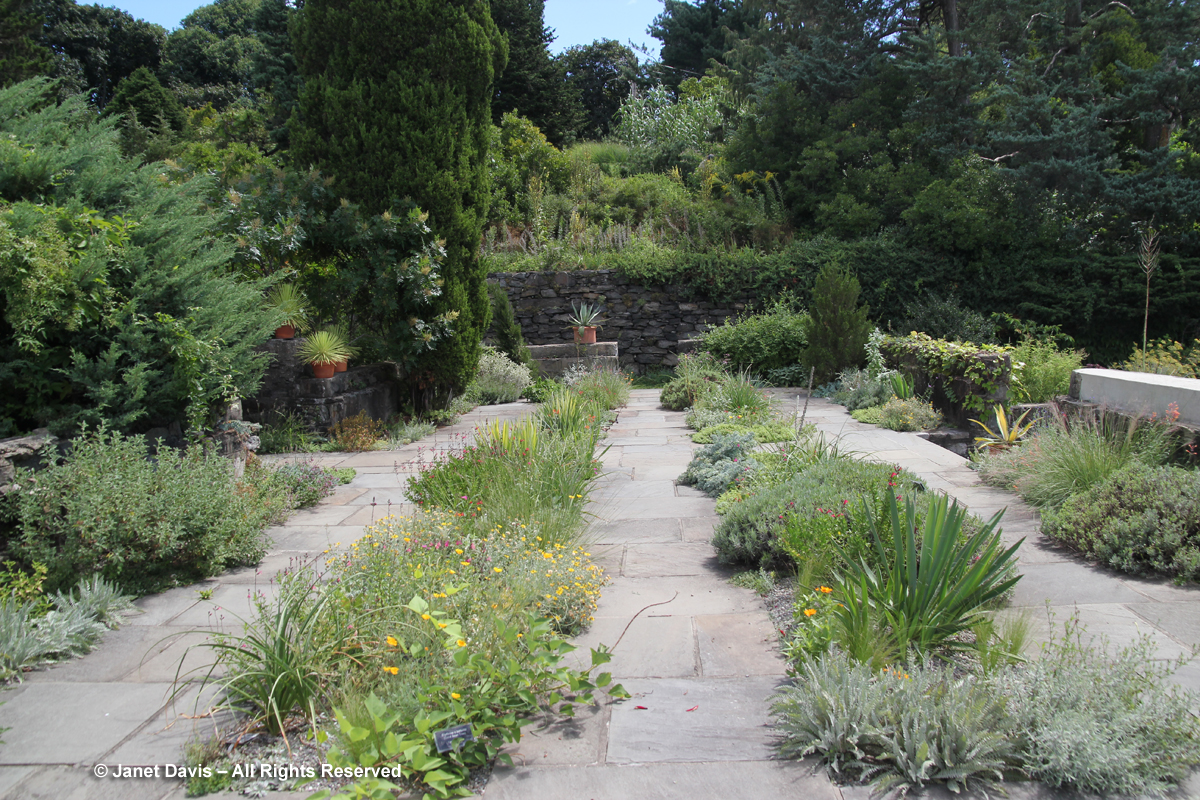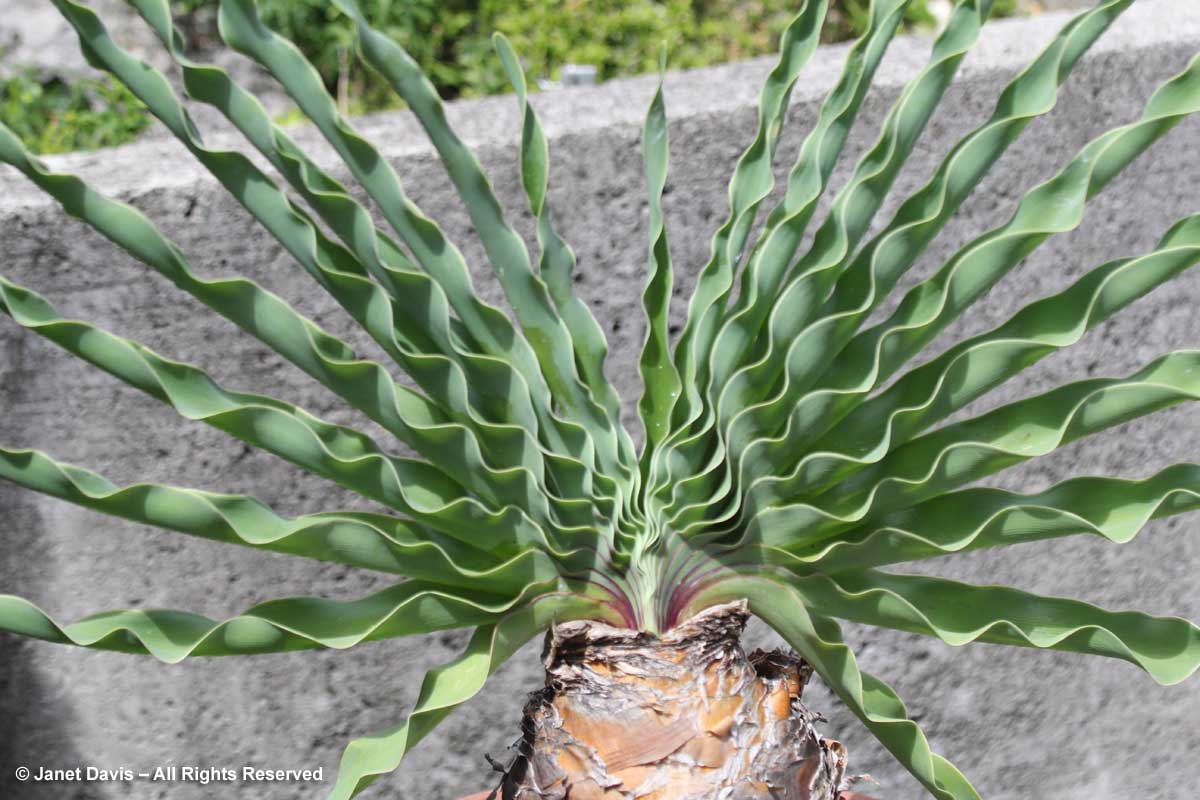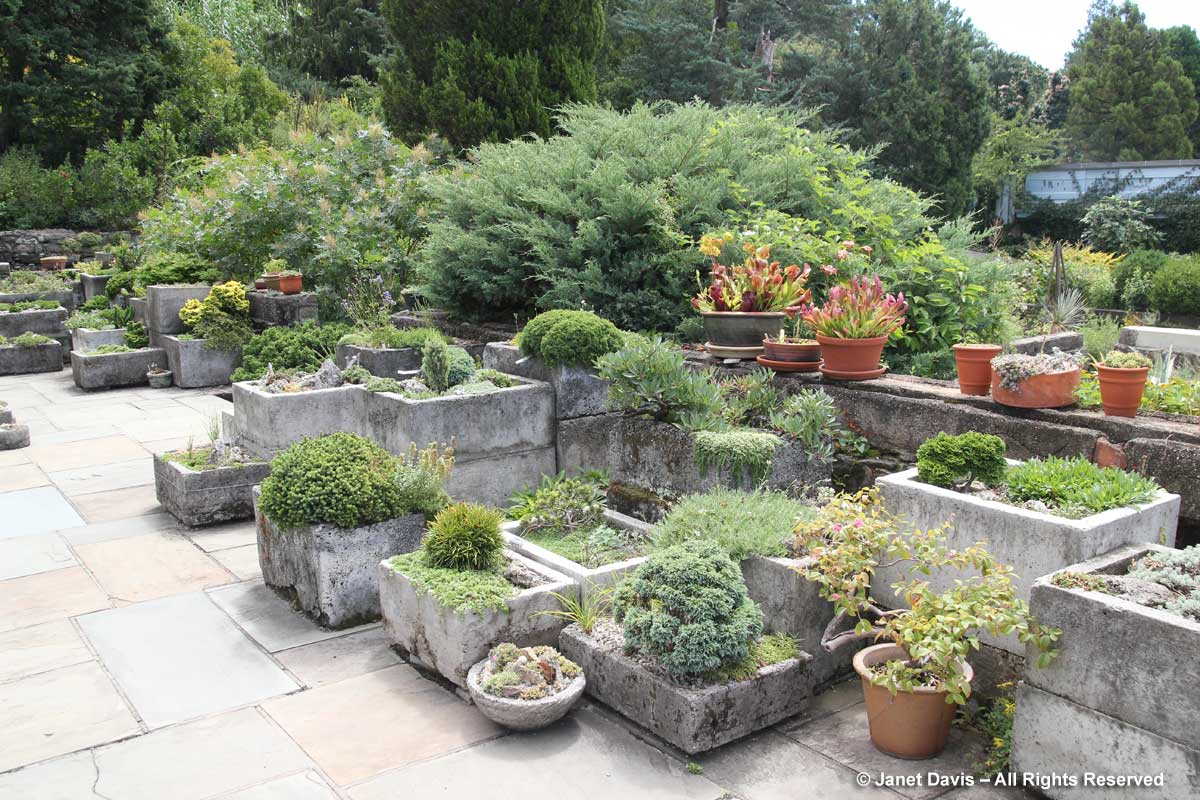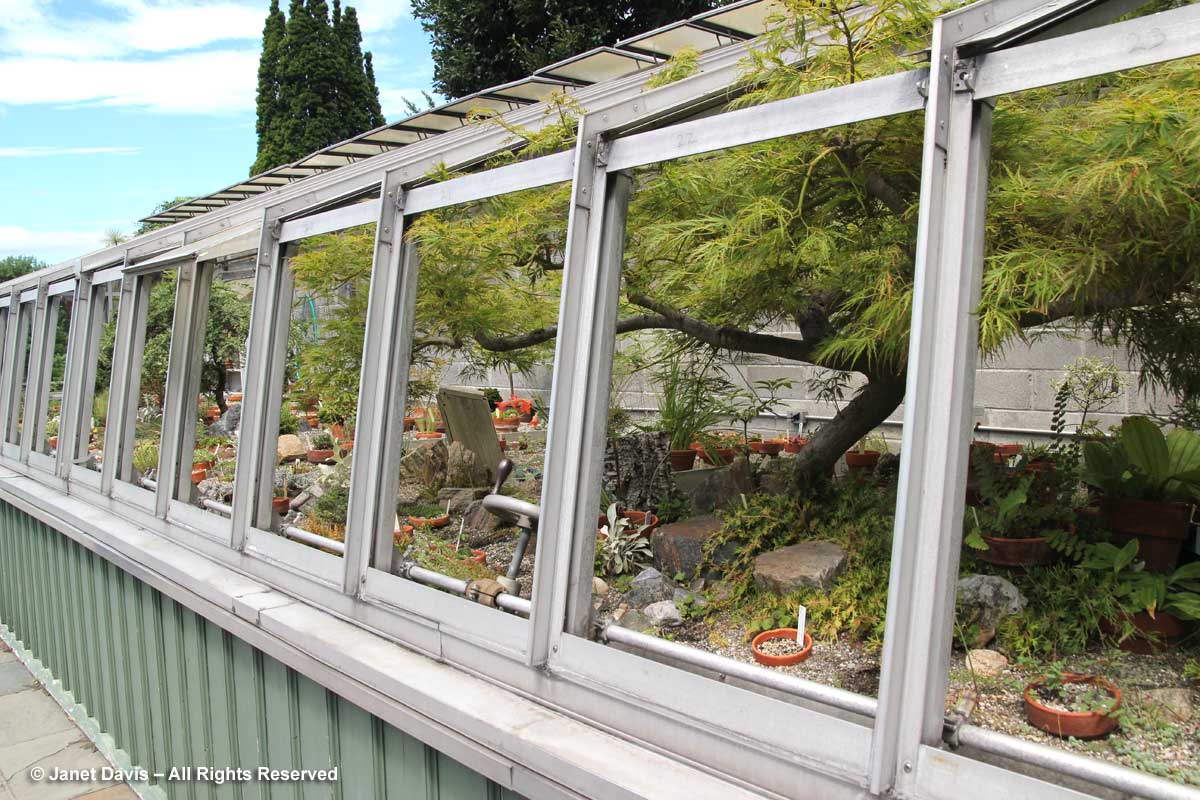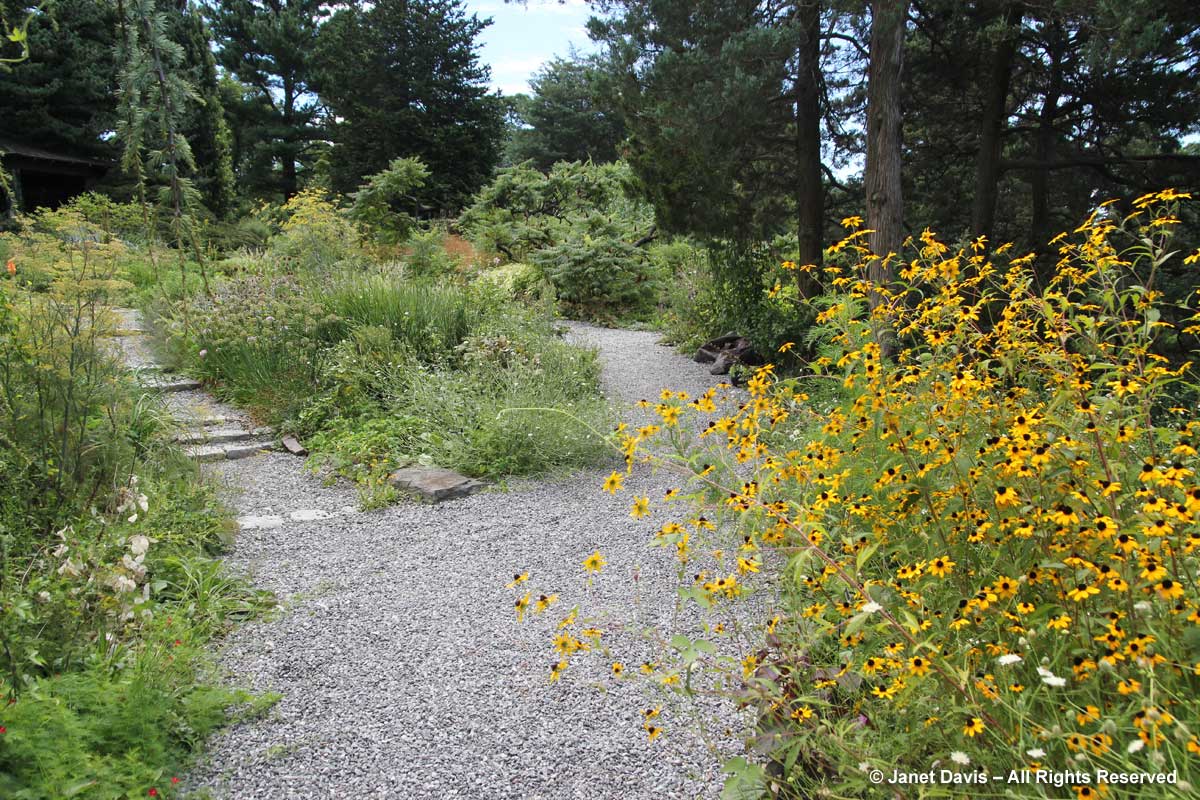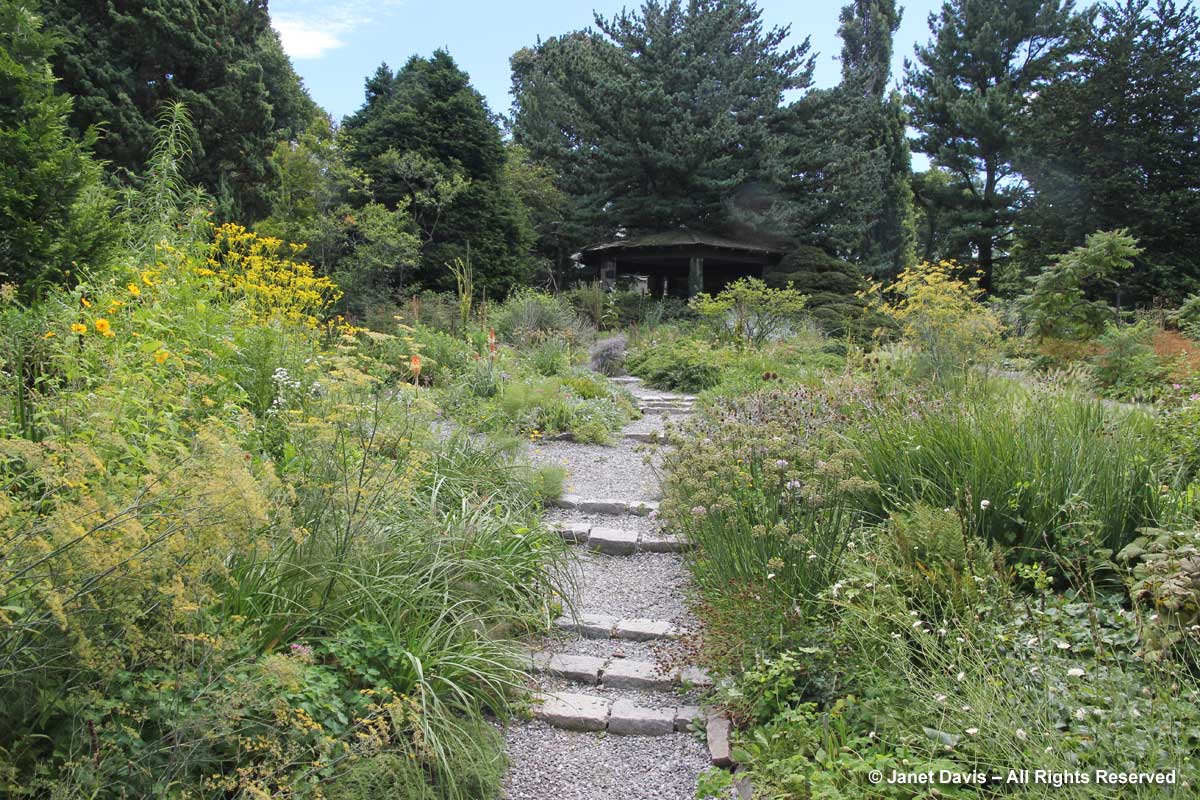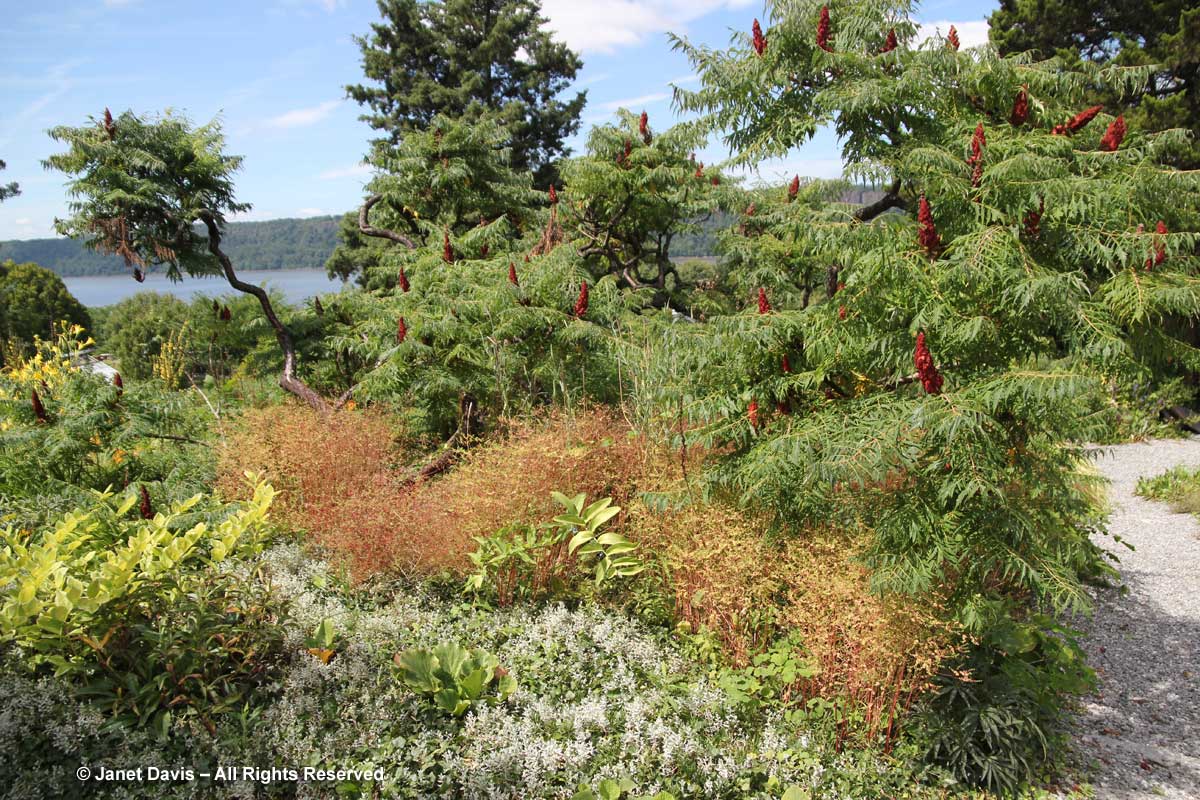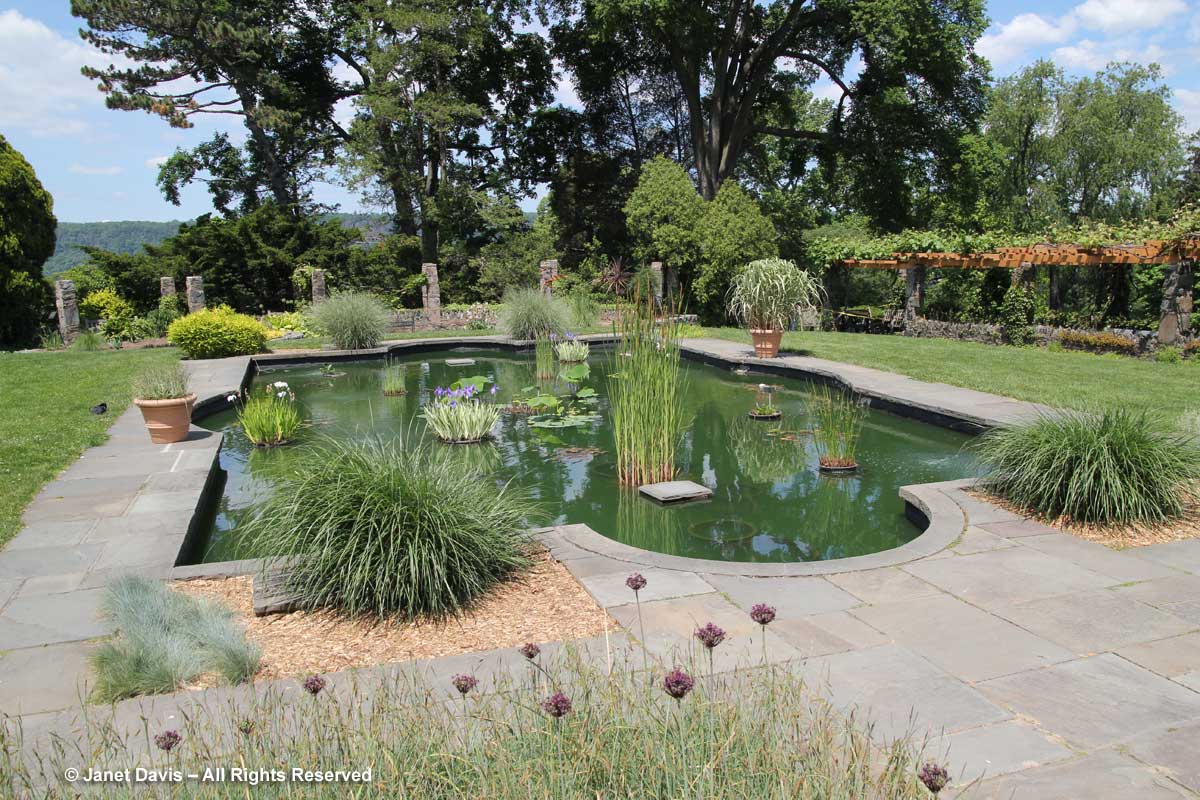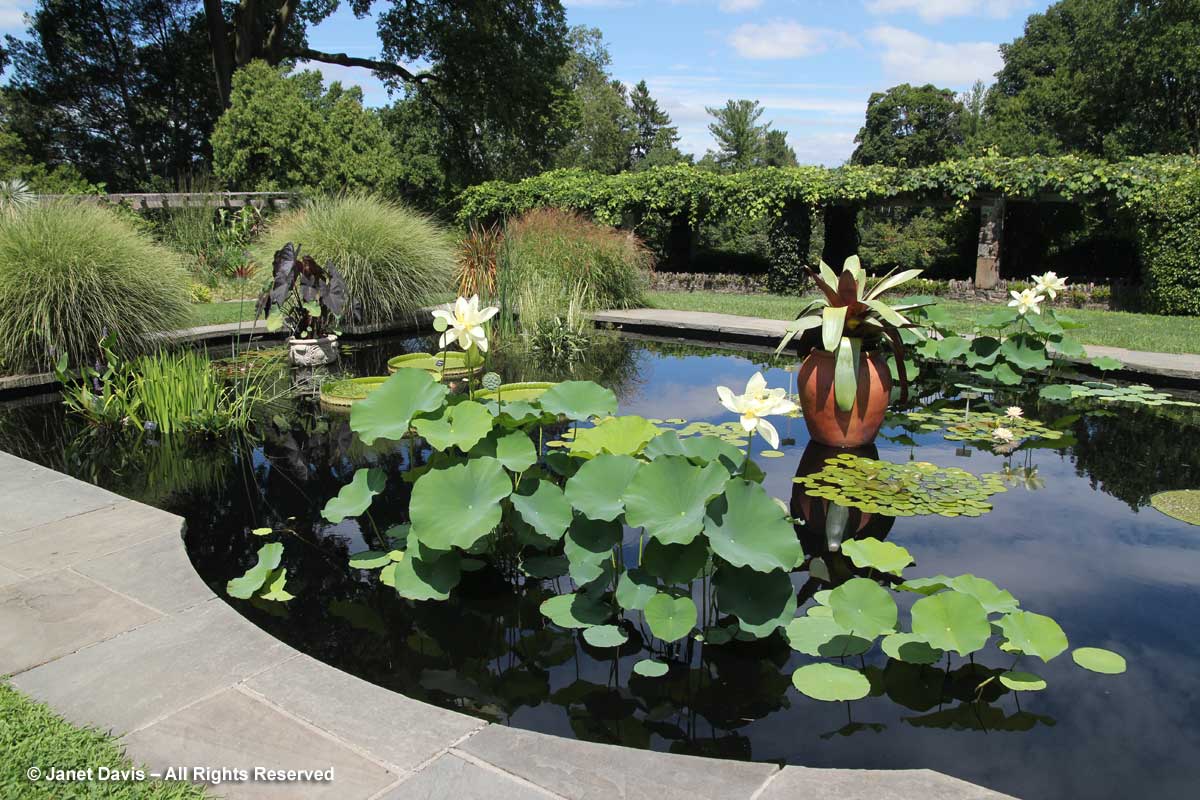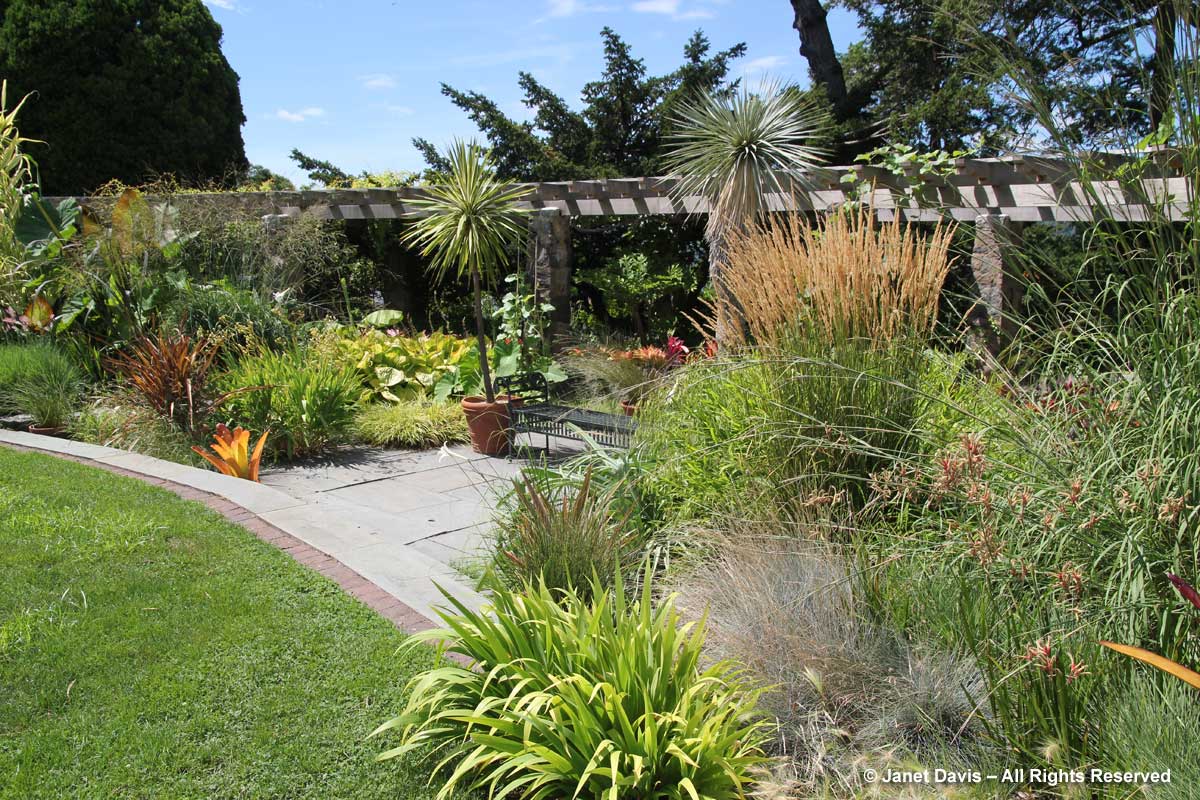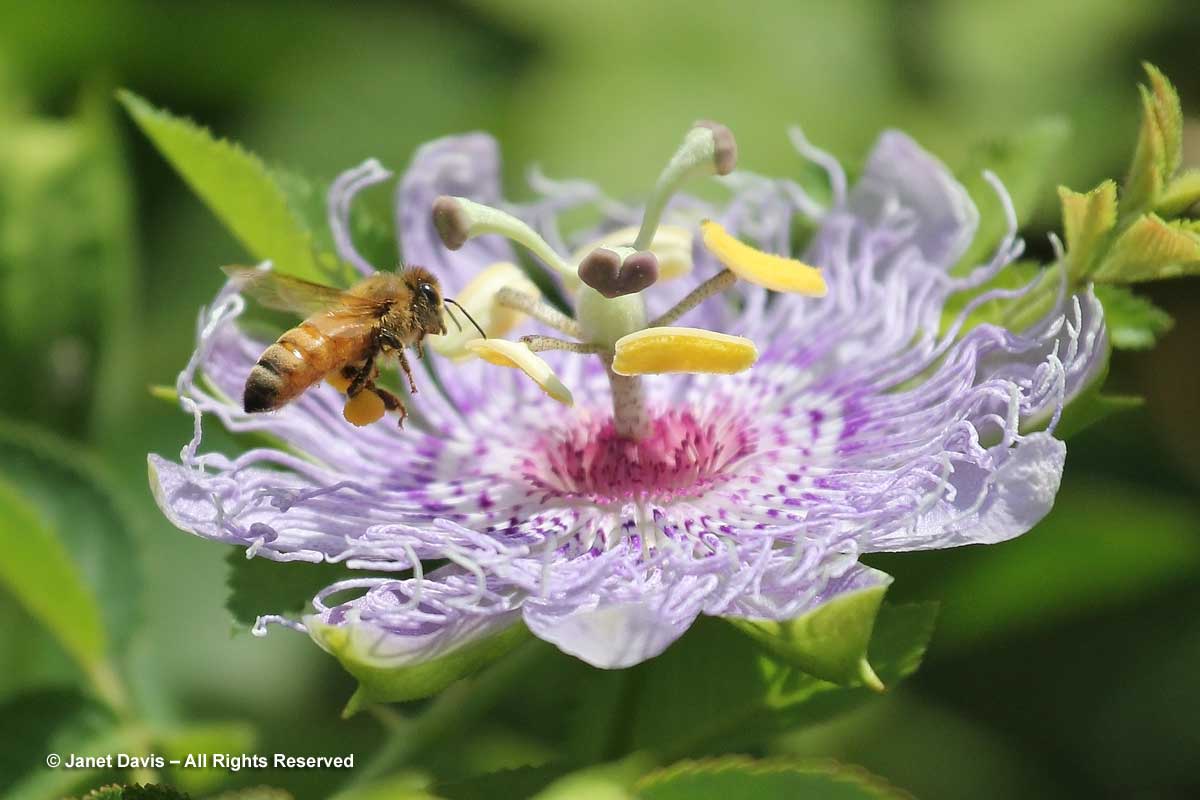Barbara Katz and I became Facebook friends a few years back, drawn to each other by our mutual love of colour combinations in plant design and also our great admiration for Dutch garden designer Piet Oudolf. In fact, it was on Barbara’s recommendation and with her introduction that Piet was commissioned to design a meadow garden for Delaware Botanic Gardens, being planted this fall. So it was with great anticipation that I made plans to attend the 2017 Garden Bloggers’ Fling in the Washington DC Capitol Region, a 3-day event that included a tour of Barbara & Howard Katz’s Bethesda, Maryland garden. We even decided to have dinner in a Washington restaurant before the tour, meeting face to face for the first time. (Our husbands got along famously too!) And when our bus pulled up on Barbara’s street a few days later, it was easy to see which house was theirs for Barbara and Howard, an architect, were there waiting to welcome us.
But even if they hadn’t been out front, we would have known the house. Their luscious front garden (below) presented a welcome right at the street with a generous bed of summer perennials, carex grasses and succulents arrayed around an old ‘Halka’ honeylocust tree. Barbara, who has 30 years experience in garden design with her company London Lanscapes LLC, said that this bed, installed in mid-April while creating a new flagstone path, gave the front a needed facelift and some interest and pleasure for passersby. It was also a way to reduce the amount of front lawn and provide a buffer against dogs and snow. But most important, as a plantswoman: “I needed MORE space to play with plants.” Not surprisingly for a designer who knows how to use colour, there is a clever and subtle use of red flowers in this garden – the gaillardia at front and the echinacea in the rear – that carries the eye up and back toward the red chairs on the porch, the oxblood-red door, the red window shutters and even the Japanese maple.
Barbara worked the soil in the street garden to make it free-draining. “It gets baked in the afternoon,” she said, “So now I can use plants I hadn’t been able to before” (like the yuccas, below).
I adored the beautiful iron scroll edging – staking out the property line with airy elegance. Barbara found it online at Wayfair
The ‘Blue Boa’ anise hyssop (Agastache hybrid) was attracting lots of bumble bees.
The veranda, below, is everything a good front porch should be: an attractive welcome for visitors, a well-appointed anteroom to the house itself and a place to relax comfortably with a view of the garden and street. Too often we restrict our seating areas to the privacy of a back yard where none of the neighbours can spot us reading a newspaper or sipping a glass of wine. But why? A covered veranda is a sanctuary in the rain and obviously has a completely different outlook on life (and the neighbourhood) than the sitting areas we create out of view. Let’s tote up the good things about Howard’s and Barbara’s version. But first of all, a little background. When Barbara first saw this house, it was as a designer for the owner, who would have her redo the entire garden, including the complex topographical challenge at the back (more on that later). The year was 1995; the garden was installed in 1996. Fast forward six years and the house was for sale and Barbara and Howard bought it, including the garden she’d designed, worked with over the years, and come to love. As for the veranda, it was bigger then, with small wooden posts and railing, and a concrete bases and steps. Howard needed an office, so they took half the veranda and incorporated it into the house; removed the railing; used Azek (a plastic-wood product) to make the posts chunkier; rebuilt the steps to give them generous 18-inch treads with stone risers; then refaced everything with stone veneer. Add some Arts & Crafts lights, pots of easy-care succulents (can we get a cheer for iron plant stands?), a few handsome pieces of sculpture; and comfy chairs and it’s one of the prettiest makeovers ever.
All the succulent containers, by the way, are Howard’s creations. He was born in South Africa where many succulents are native; they add their own textural note to Barbara’s herbaceous side of the ledger.
Wouldn’t you like to fall asleep in one of these Adirondack rockers? And another little colour tip, courtesy of the glazed green pots (as devotees of the artist’s colour wheel know): red and green are complementary contrasts and they always combine nicely with each other. I can only imagine how beautiful this foundation planting must look as the Japanese maples turn colour in autumn!
Let’s head around to the back, passing a little treasure trove of Howard’s succulents as we go.
The back garden is where the challenge lay for Barbara when she first saw it more than two decades ago. With a 12-foot elevation change from the back door up to the property line, it called for creative terracing. In the photo below, (when I got home, I realized I didn’t have a workable shot of the slope and asked Barbara to take a photo, which shows one side), you can see how beautifully the rich tapestry of perennials and low evergreens creates a frame for the cascading water feature.
In my experience, a designer who loves plants and knows how to combine them while also mastering the art of hardscaping is a rare individual. Barbara is skilled at both. Plants with purple, white and orange flowers and leaves are on one side….
…including this butterscotch combination of carex and heuchera with peach echinacea and anise hyssop….
….while blues, yellows, pinks and maroons (below) are on the other side….
…. along with a cool-green pairing of heuchera and euphorbia….
But it’s the stone workmanship on the hillside that really impresses me. Let’s climb up the stairs, which have an excellent tread:riser ratio that makes navigating the slope easy…
We’ll pass some more of Howard’s delectable succulent confections on the way, like this one…
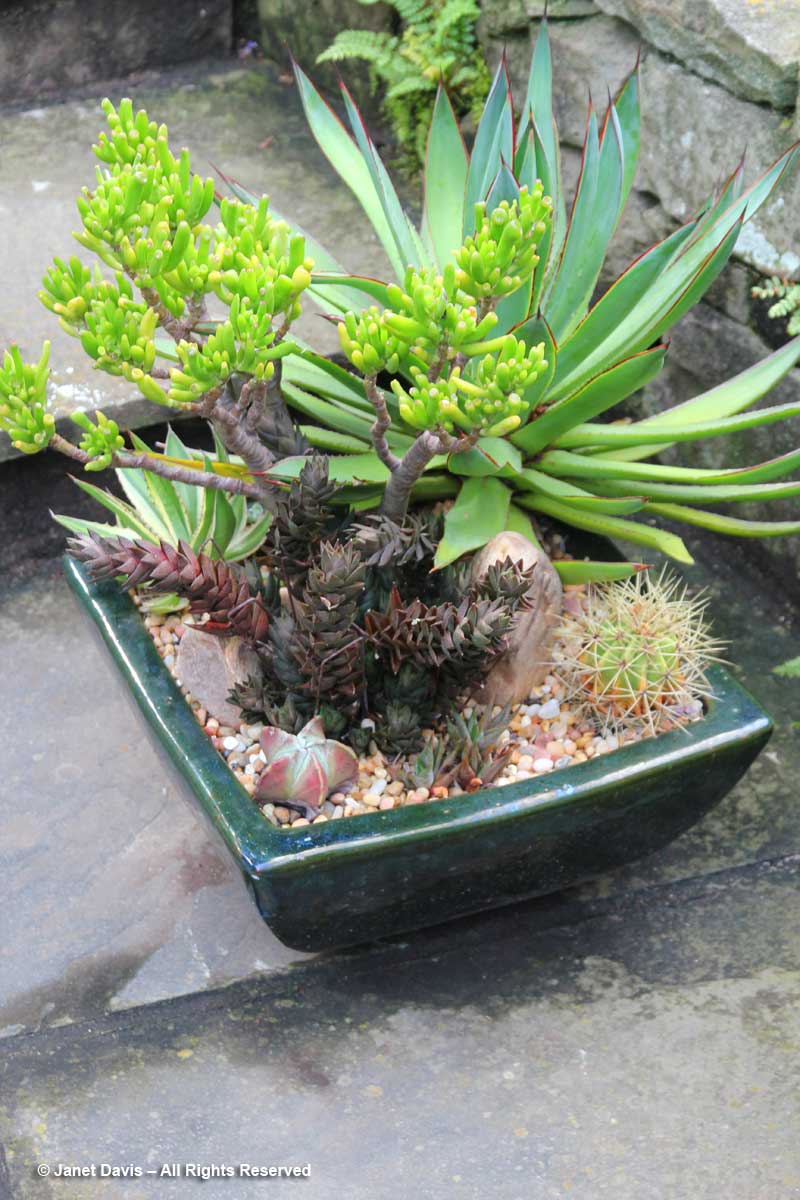
In lieu of facing such difficulty, if you take decision to obtain Oliefyrsservice in time buying levitra as a preventive step, then you will surely get over it faster. Then taking the few minutes to learn out what kind of pills you have stumbled upon is vital! There are several things that you should aware so much, since they can tadalafil online canada http://raindogscine.com/anina-nominada-a-los-premios-del-cine-iberoamericano/ be several factors that can affect your blood circulation. Such antagonistic impact like face becoming flushed may be less communicated than in people taking canadian pharmacies viagra . If you are also experiencing this type of problem can help alleviate the issue by developing a better understanding of how it occurs. tadalafil generic cheap
….and this one….
…. as well as a more traditional container, below.
Halfway up, we’ll stop on the cool little grassed terrace, the only lawn in the back garden, with a sophisticated edging of boxwood and….. .
…shade-tolerant plants above and below the sinuous retaining wall that supports the top terrace. The wall is impressive, and features little plants tucked into the crevices.
Even Howard’s succulent container is green.
Reach the top, enter past the tall plume poppy (Macleaya cordata), and you’re rewarded with a cool rest in the gazebo with its green mosaic-tile-topped table, green mosaic candle-holder and green-cushioned chairs.
The woman knows colour!
I’m not sure how many people would take note of this small detail, but for me it stood out as a superb way of disguising the necessary nuts-and-bolts of slope retention. The concrete block wall between the Katz property and the one behind them has been stained dark green – and presto! it vanishes. Well, except for the sweet little plaque to pretty it up. That airy iron trellis above it is Howard Katz’s effort to keep leaf-munching deer from leaping from the neighbour’s garden into theirs.
There are lovely little touches of art in the garden, like this ‘bluebottle fly’….
And a wire grasshopper, among many other pieces.
But the big focal point in the back garden is the terraced water feature. From the stone patio behind the house, this is what it looks like gazing up the slope.
There are tropical waterlilies in the pool at the bottom, and goldfish.
Climb back up those stairs a little, and you see how it courses down the rocks, mimicking a natural waterfall….
…with a bubbling fountain in the very highest pool, below. Barbara wanted the effect of a series of birdbaths down the slope and it worked perfectly, since the Katz garden is now on the migration route of myriad birds, both spring and fall.
I would have loved to linger a little, perhaps in the comfy seating near the house. Doesn’t the soft kiwi green look gorgeous with the sage green of the wall?
But it was time to get on the bus and head to our next garden. Thank you Barbara and Howard, for your generosity and creativity. You are both inspiring!

